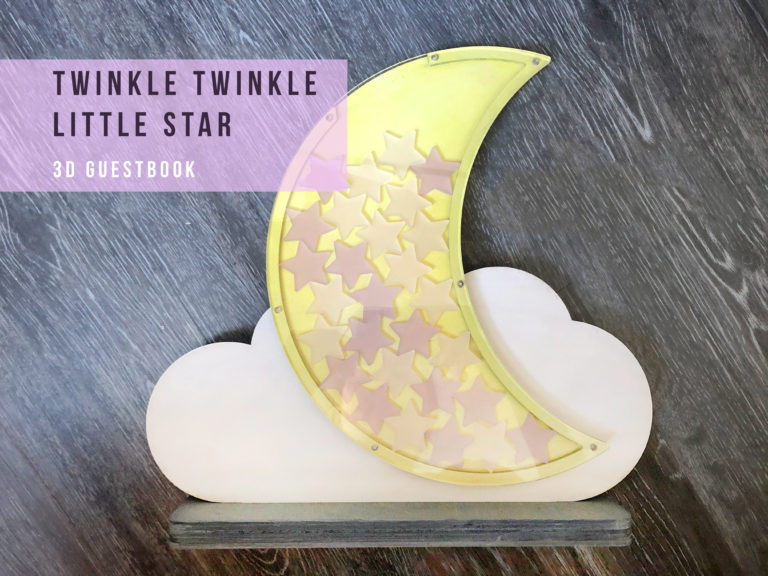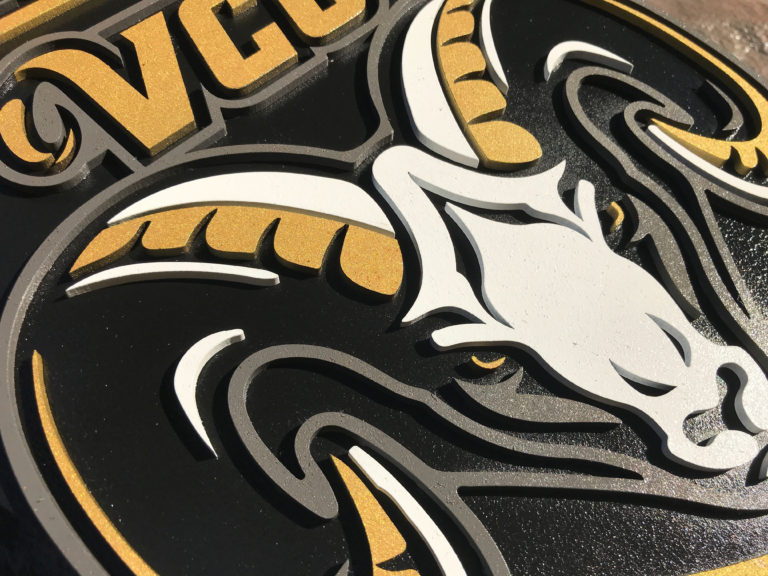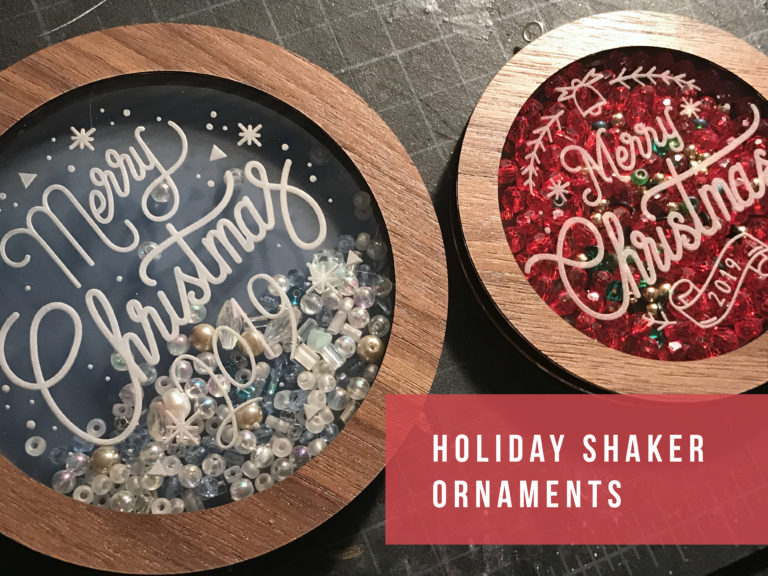Shaker Ornaments Part III
Project Overview:
So I love making shaker ornaments. I have some previous posts on making liquid snow globe shakers and regular shakers from past holiday seasons:
Shaker Ornaments (Liquid Snowglobe)
In this post I’m going to try a few new options – a pre-made, laser ready shaker, a glass fillable ornament, and then another self-made design shown (and sold) below. Jump ahead to each section by clicking the links below:
1. “Made from Scratch” Snow globe & Shakers – my typical method of making these
2. Glitter filled Pre-made
3. Glass Ornaments (also potion bottles)
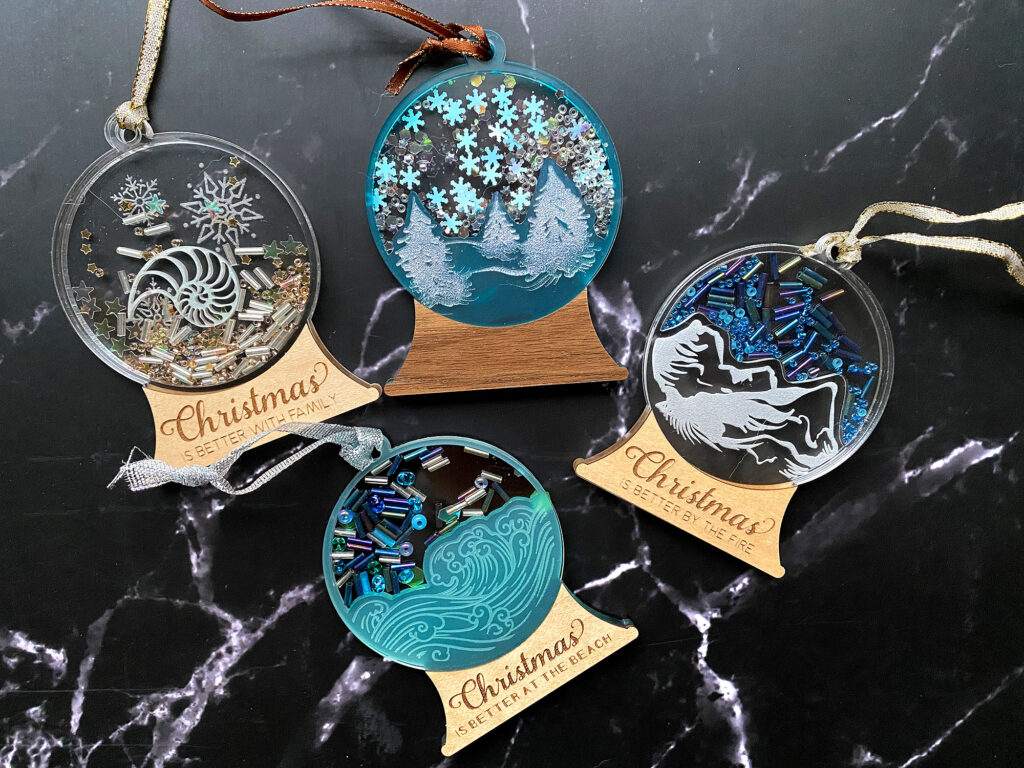
The Snow Globe Design
Get The Files
If you’re interested in making the snow globe shaker ornaments shown in this post you can purchase the file on my Etsy at the link below.
Watch the Video to See What's in the File:
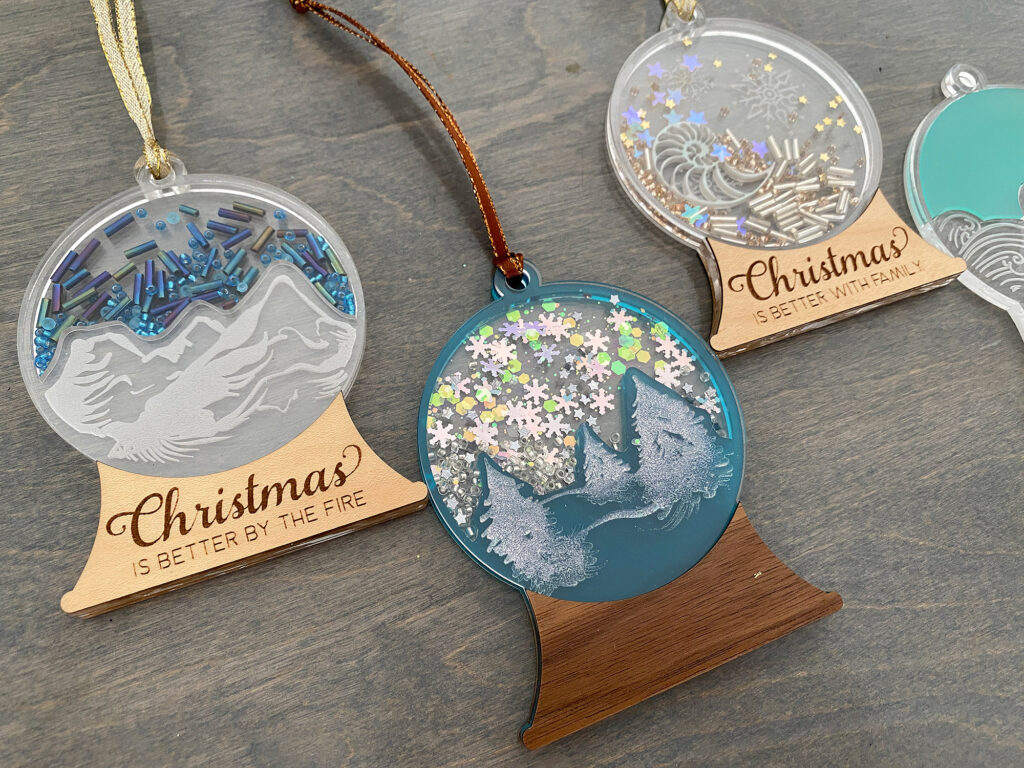
MATERIALS OVERVIEW
This file requires 4-5 layers (but it’s not as crazy as you think). Two clear layers, a middle layer, and then two little bits of veneer or similar for the “base”. I try and use as thin of a material as possible for the covers and bases, but ultimately it’s up to you. The thicker the middler layer the more stuff you can shove in there so keep that in mind too!
- 1/16″ Clear Acrylic for the outside edges (you can use any thickness but 1/16″ is cheaper and looks nicer)
- 1/8″ or 1/14″ acrylic – clear or any color for the interior of the shaker
- Wood Veneer with 3M adhesive or any thin material for the snow globe bases (these cover the glue)
NAVIGATE POSTS
Helpful Links
Latest Posts
Posts by Category
Explore Posts By Tags
Acrylic Adobe Illustrator Alcohol Ink Baby Room Beginner Post Book Binding BuyTheFile Christmas Felt freefiles Gifts Gilding Glowforge Holiday Jewelry Journal Kaleidoscope LED Notebook Resin Rubber Stamp Settings Sign Stamping Yupo
Get Your Own Glowforge Laser
If you have found this post helpful and would like to purchase a Glowforge of your own you can receive a discount using my referral link when you are ready to purchase:
Sign Up to Blog Newsletter
Making the Shakers Yourself
Using my file, or the basic concepts covered in my previous shaker posts, you have infinite flexibility to make shakers the way you like them. The basics are that you will need a minimum of three layers – the two covers and then an inner ring to make space for all your shaker bits. The veneer covers I often use are optional, but they hide the glue nicely. An alternative option is to use the score line in my file (or your own score line) to peel away masking and paint (or spray paint as I did) to hide the glue. This saves you some material and can be done quickly! For almost all of the materials in this post I just used Proofgrade settings (the veneer and 1/8″ acrylic), for the 1/16″ I use the settings below:
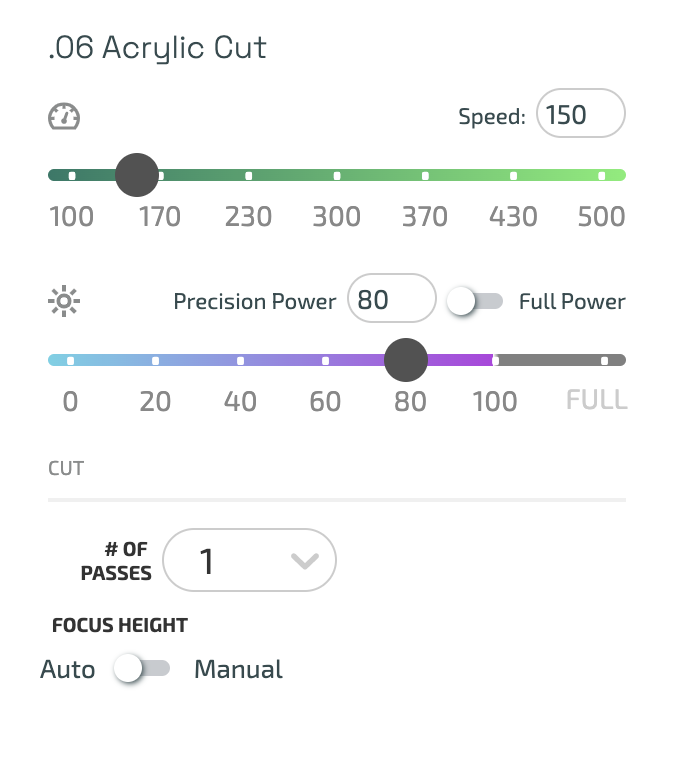
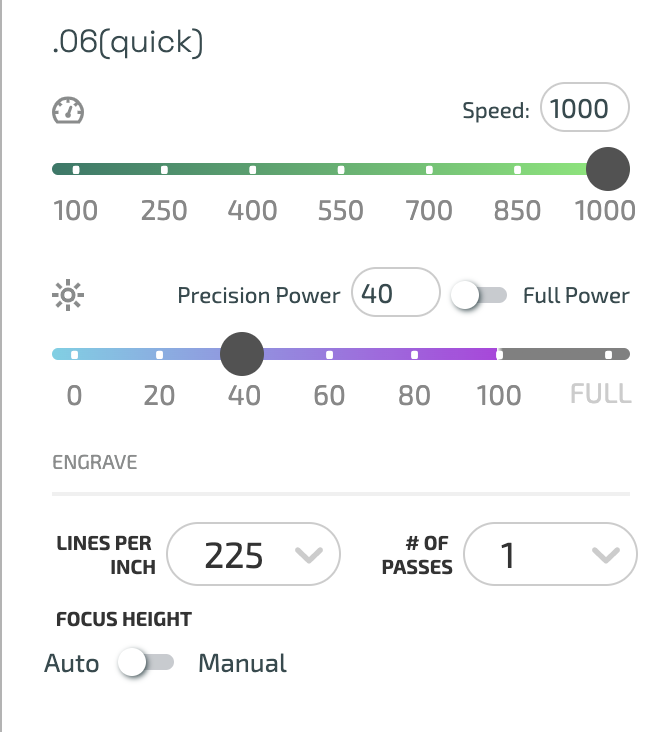
1/16" Acrylic Settings
Material Height Setting: .06″
Glowforge Cut Settings:
150 speed \ 80 power
Engrave Settings:
1000 speed \ 40 power \ 340 lpi
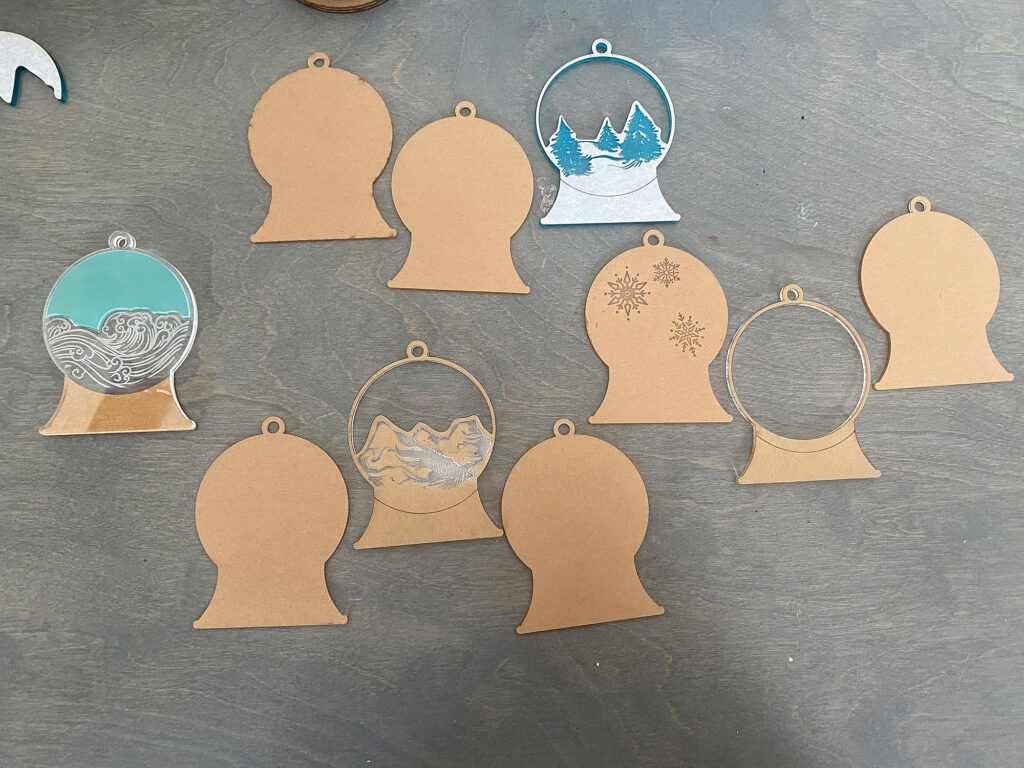
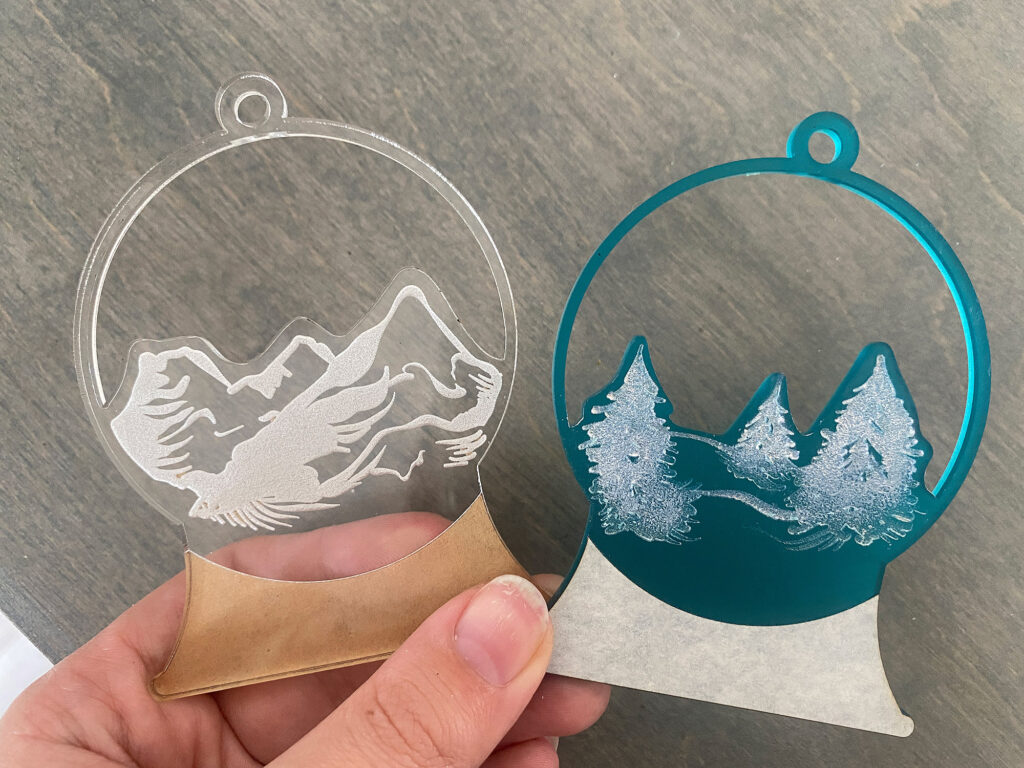
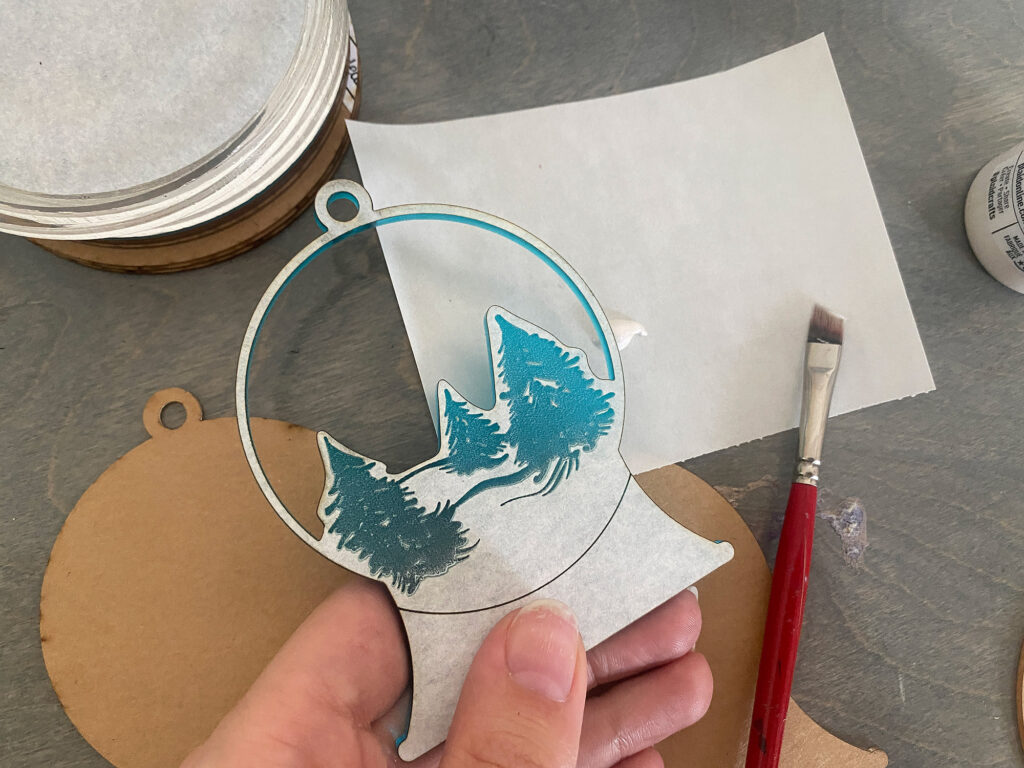
Using my file, or the basic concepts covered in my previous shaker posts, you have infinite flexibility to make shakers the way you like them. The basics are that you will need a minimum of three layers – the two covers and then an inner ring to make space for all your shaker bits. The veneer covers I often use are optional, but they hide the glue nicely. An alternative option is to use the score line in my file (or your own score line) to peel away masking and paint (or spray paint as I did) to hide the glue. This saves you some material and can be done quickly!
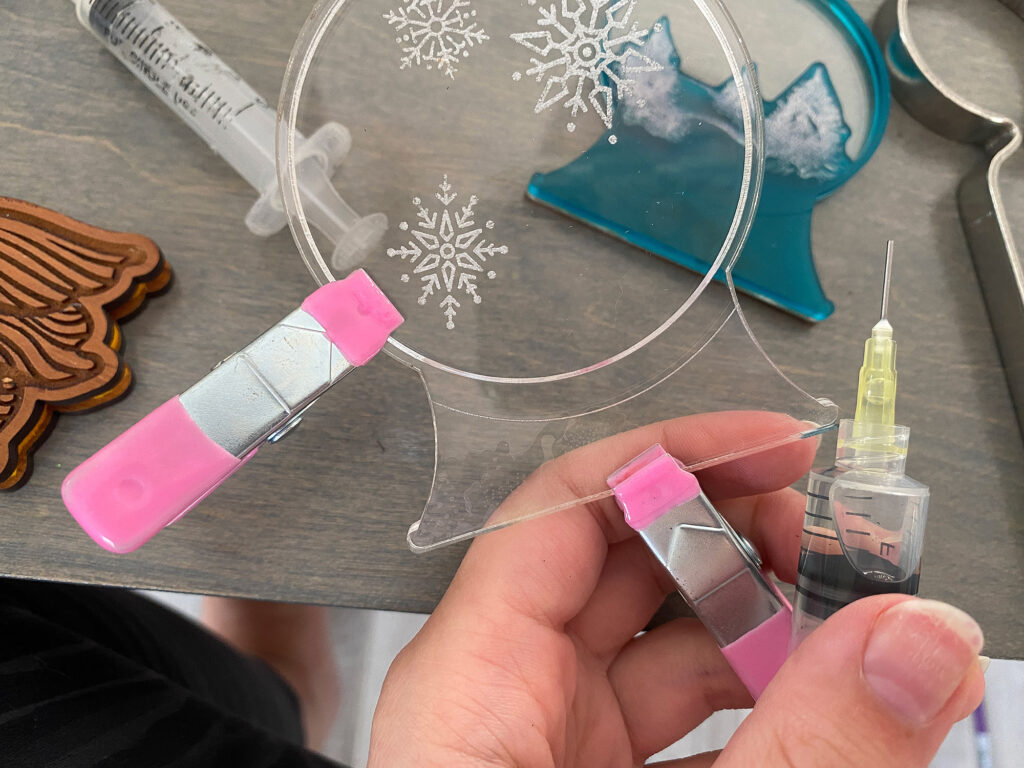
The first step in assembly after you’ve cut everything out is to glue the middle layer to the backer so you can fill these suckers up with sparkly stuff. Since I used acrylic for all three layers I just used Weldon #4 (which is a very liquid solvent type glue that quickly fuses acrylic together). See my post on gluing acrylic for more options and detailed instructions. Ultimately, I just suck some up in a syringe and clamp my pieces together with Dollar Tree clips. Then gently run the Weldon along the seam – capillary action will pull it in and fuse the pieces in a minute or so. I avoid putting glue around the outer ring of the snow globes because when it dries you can see it. I just put some at the base and then a little bit at the very top where the ribbon hanger will cover it. This is typically sufficient and easy to cover.
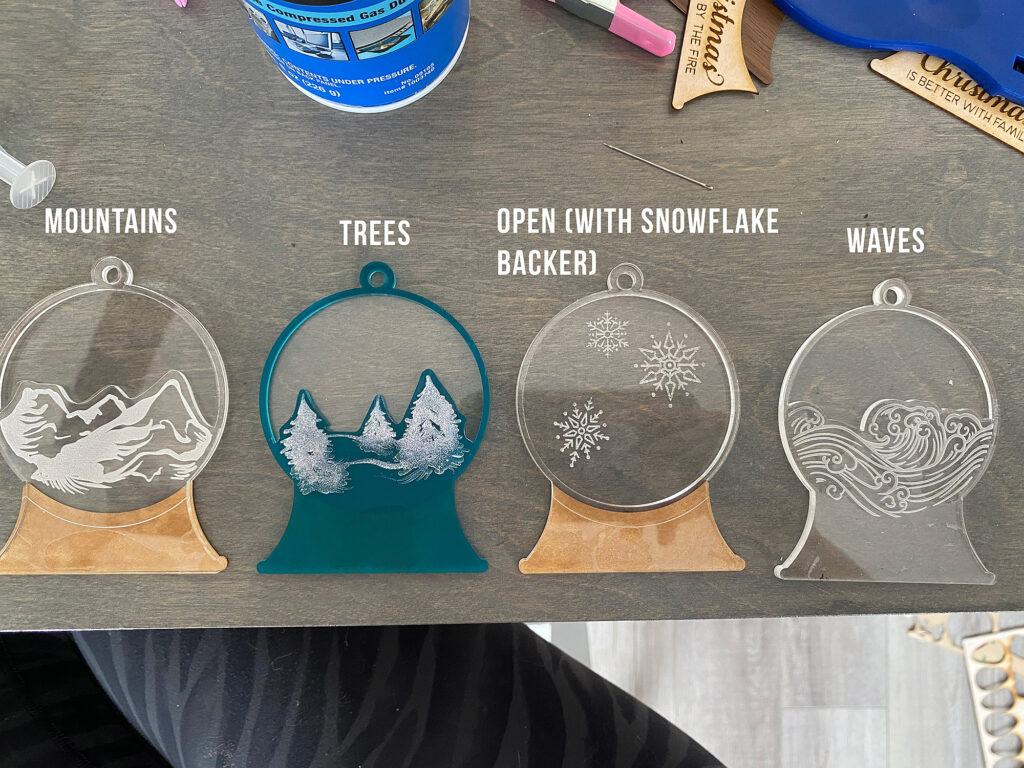
Above you can see all four design options with the backers glued on. Now you get to do the fun stuff – fill them up! Once you’ve done that, repeat gluing on the front just like we did with the back. Very easy. There are SO many filler options. I like to use sequins (like heavy glitter more like), beads, or scrap acrylic cuts in fun shapes. My file includes some little snowflakes you can engrave and cut as well. You don’t have to do a clear backer, you can also do a colored one as seen in one of the examples below. The thickness varies with the materials you choose, but it doesn’t affect assembly in any way.
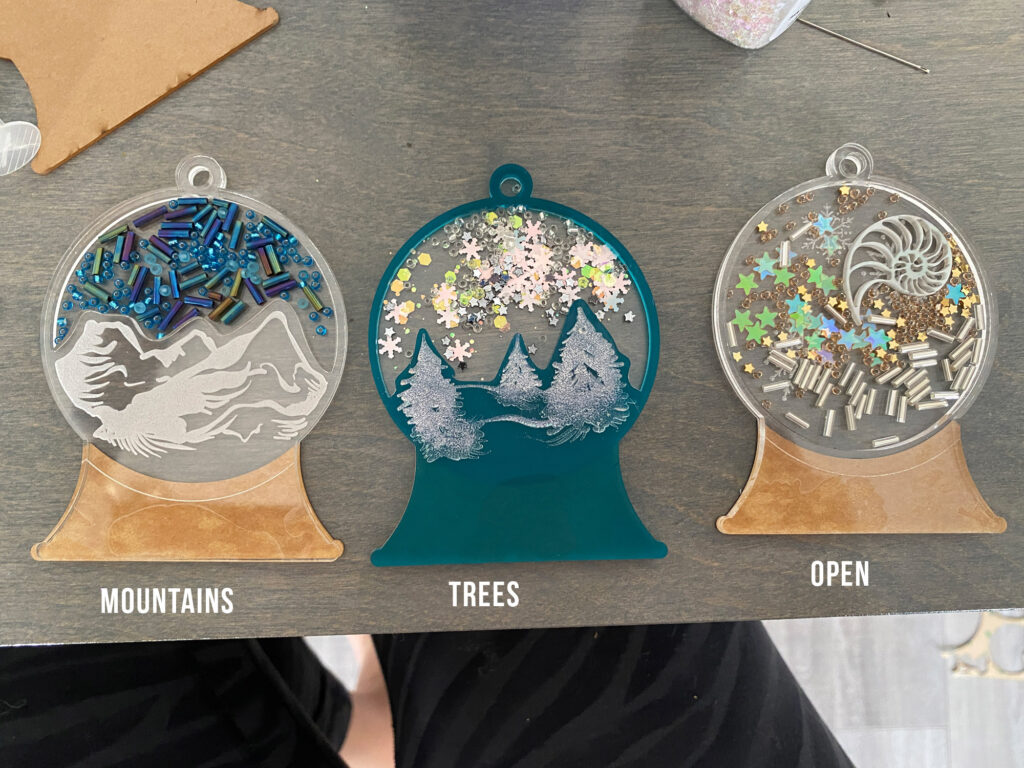

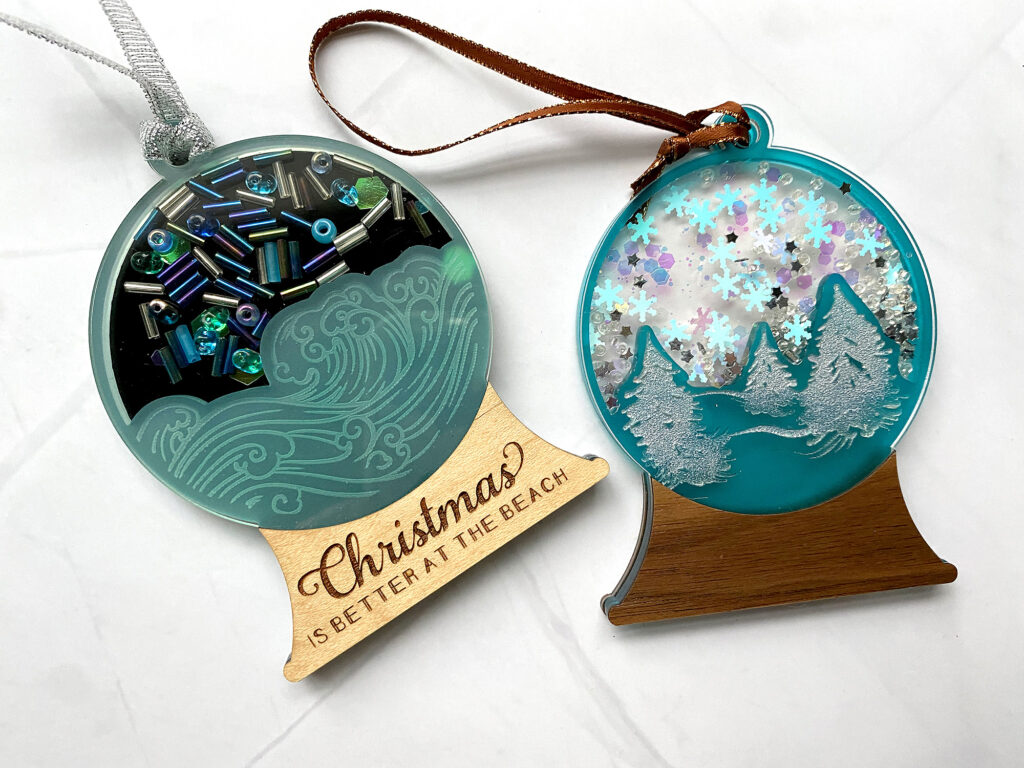
When gluing the front you can see that there is a score line on the middle layer – that helps keep the Weldon contained. It’s not foolproof, but it does help if you accidentally go a little heavy on the Weldon syringe.
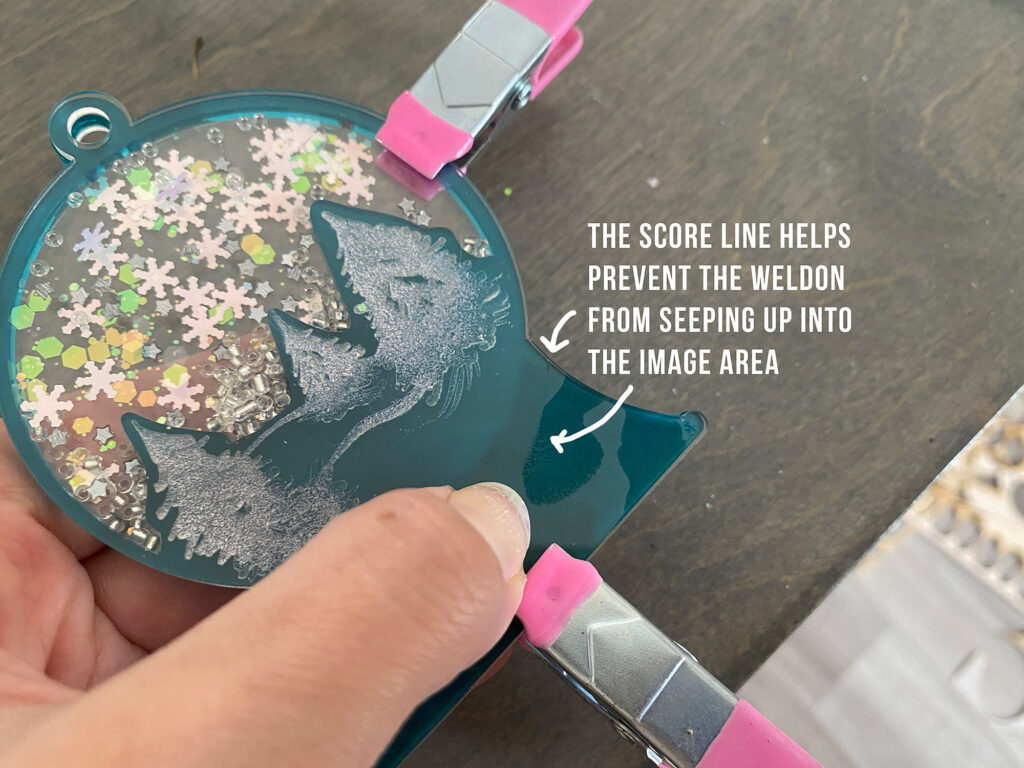
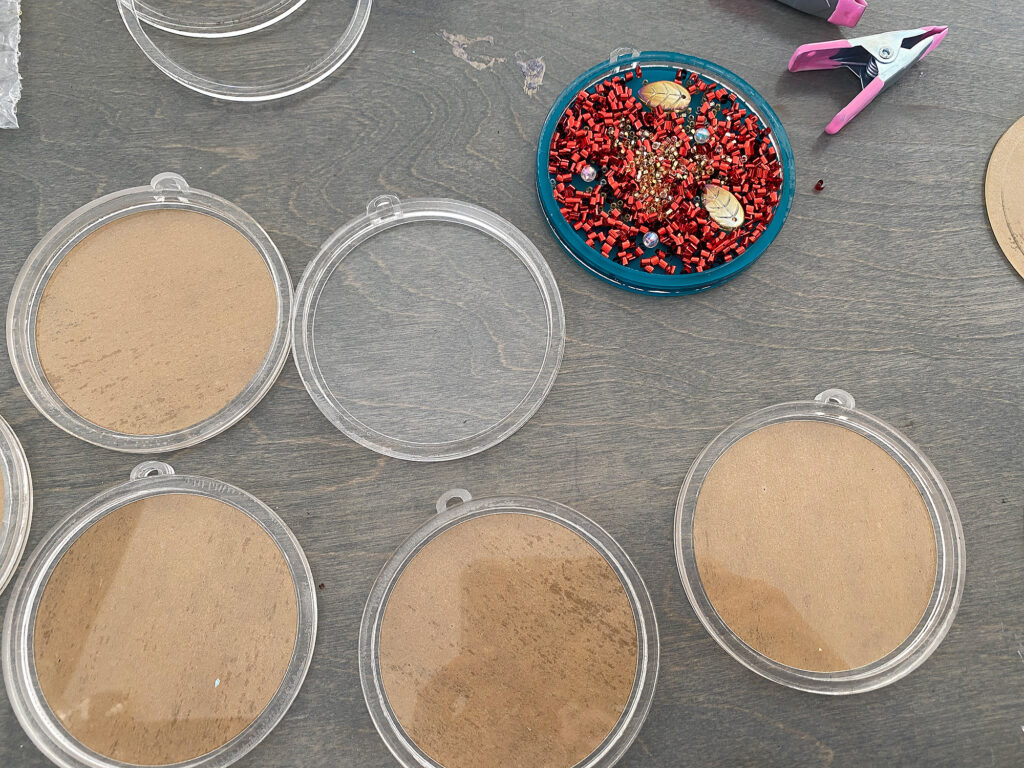
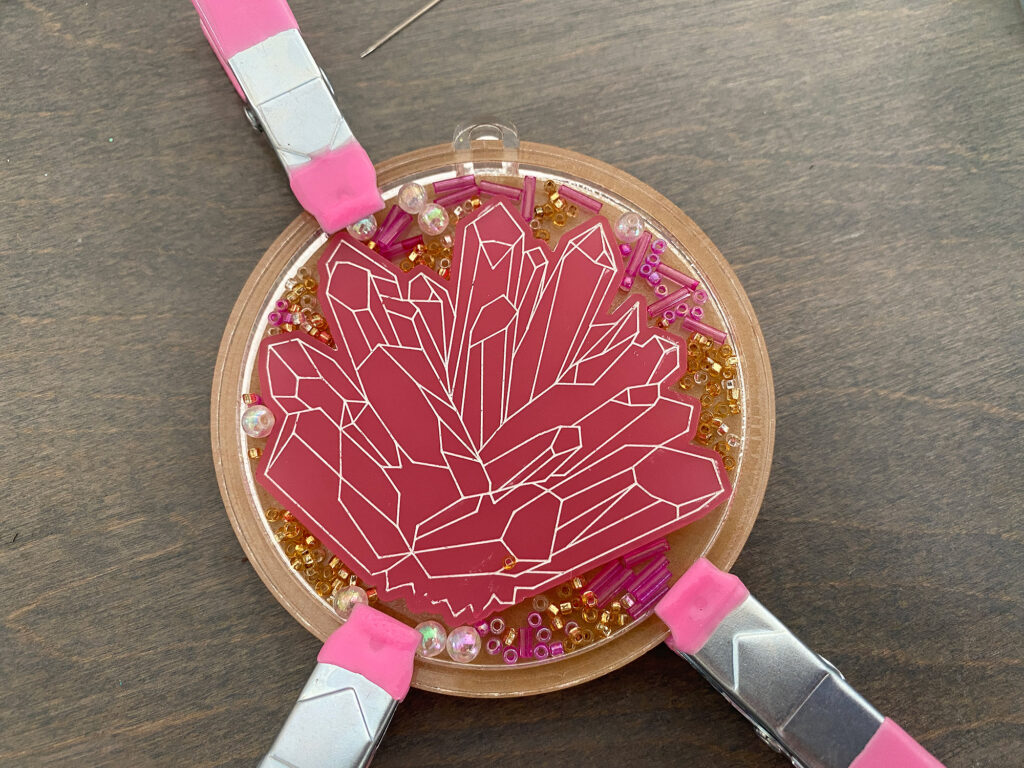
HIDING THE GLUE – Veneer or Paint
This 3 layer technique will work with ANY shape of shaker ornament you can come up with. I also have a lot of circular options. Once you’ve completed them, you might notice one issue – in the circular versions especially you can see the glue. If that bothers you there are two methods I’ve determined for covering it. One – you can cut veneer rings/designs to hide the areas where you’ve used glue. The other requires you to pre-score your covers. Then you just peel and paint.
THE VENEER OPTION
Peel and stick! I like that this is nice and thin and basically foolproof. The wood also adds a nice warmth to the design. The one draw back is it’s pricey. Especially when you’re cutting rings for the circular ornaments (and then you have a big wasted circle in the middle you have to save for another project). For the snow globe design the veneer area is nice and small so super worth it.
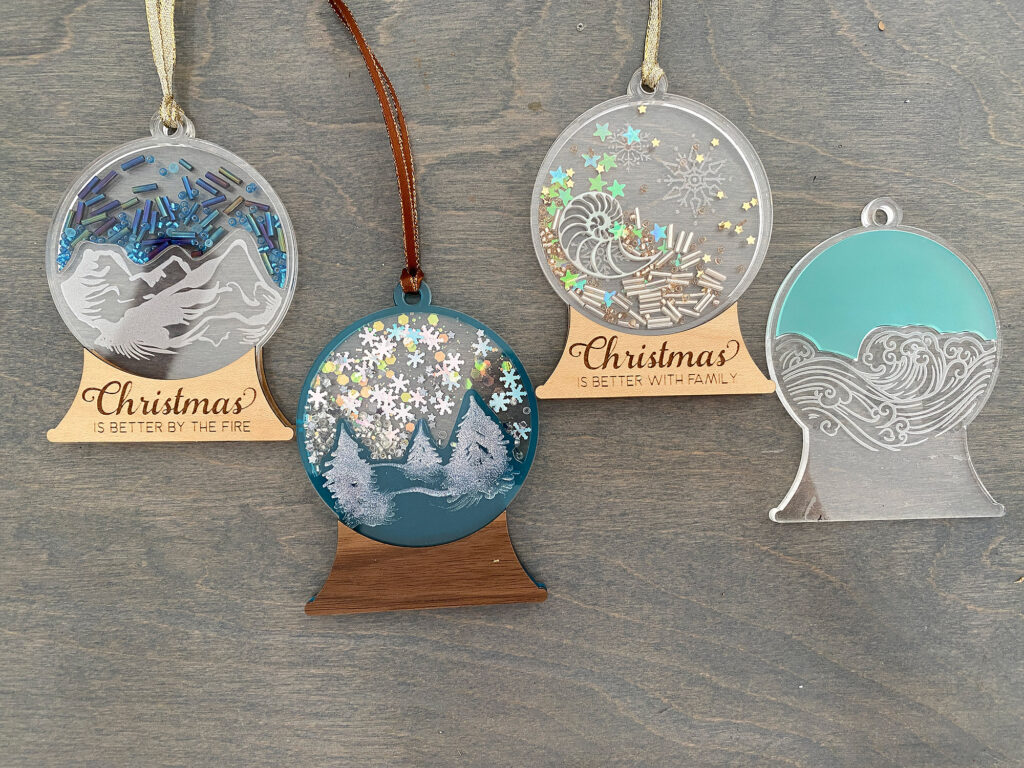

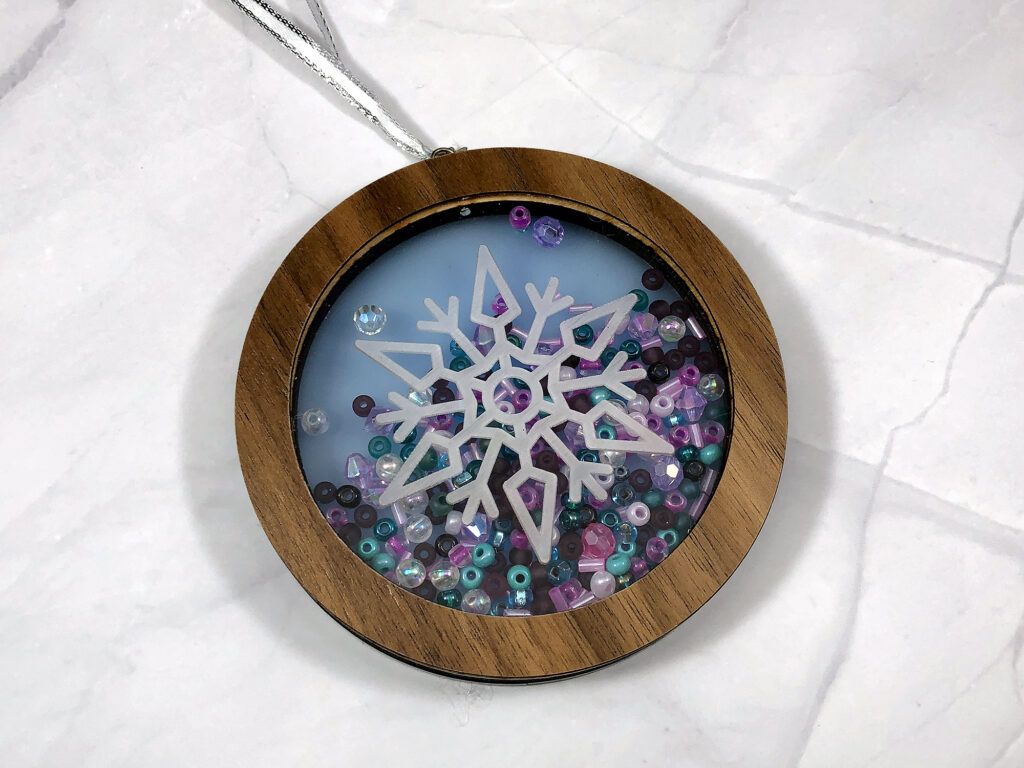
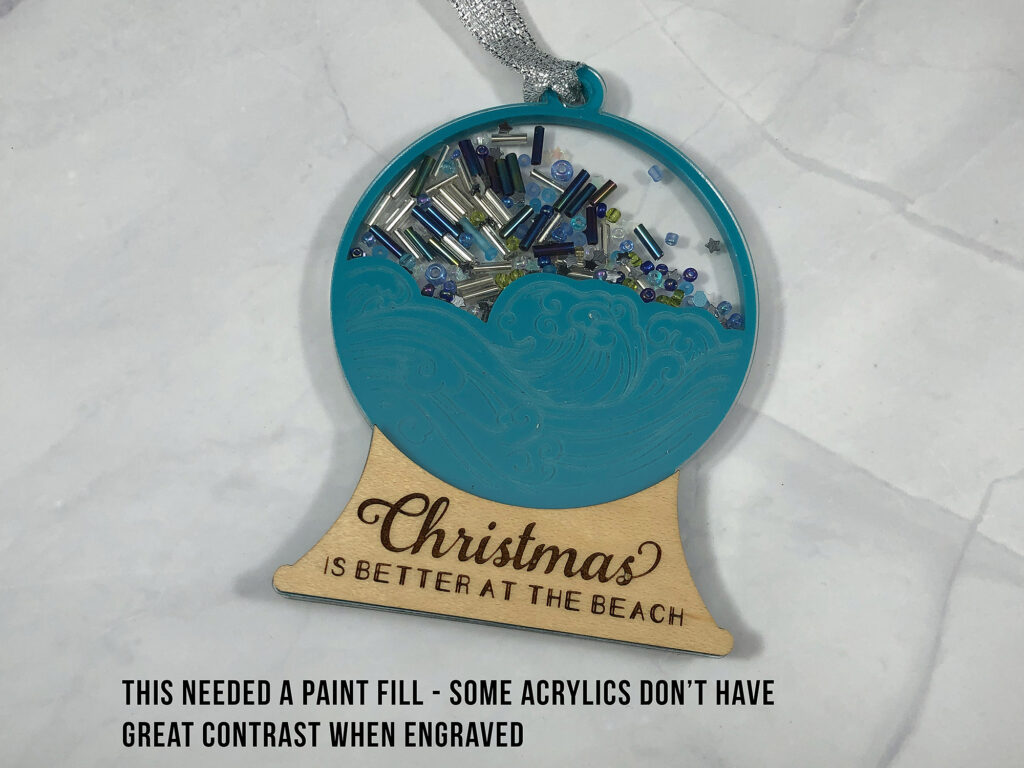
SPRAY PAINT OPTION
I tried some metallic gold spray paint and some frosted glass effect spray paints below. The frosted glass effect is not as effective as the gold and so I’d recommend a glitter, metallic, or solid colored spray paint over something translucent. You can obviously sponge or hand paint as well, I just like the speed of spray paint and the fact that you can do bunches at once.
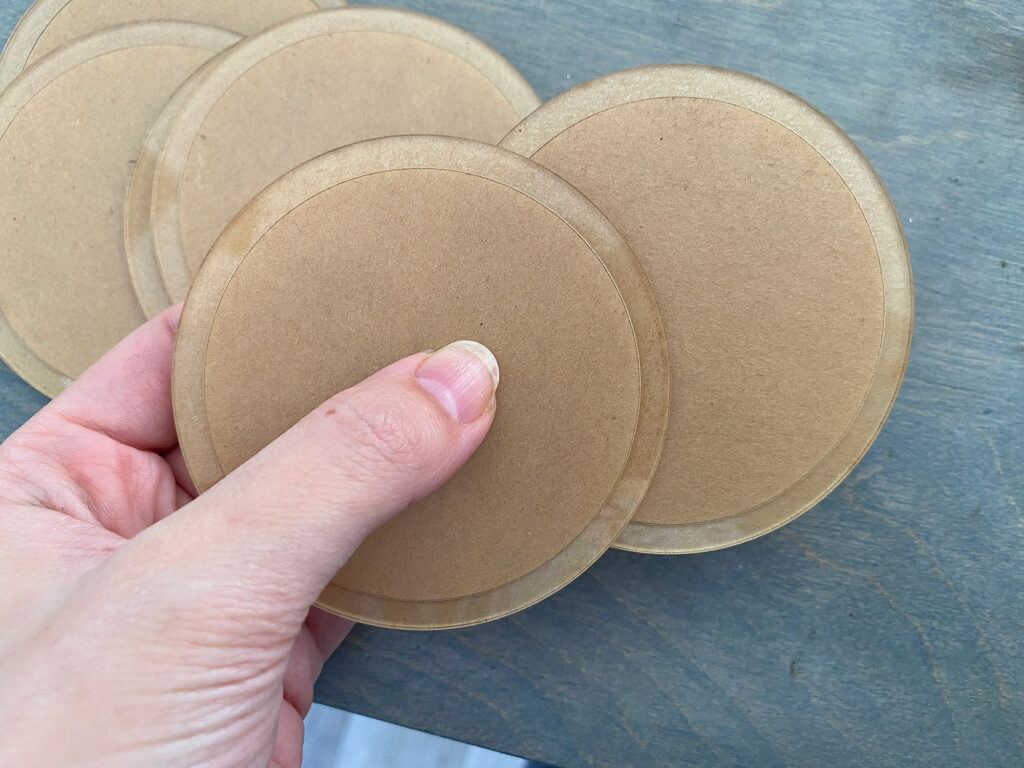
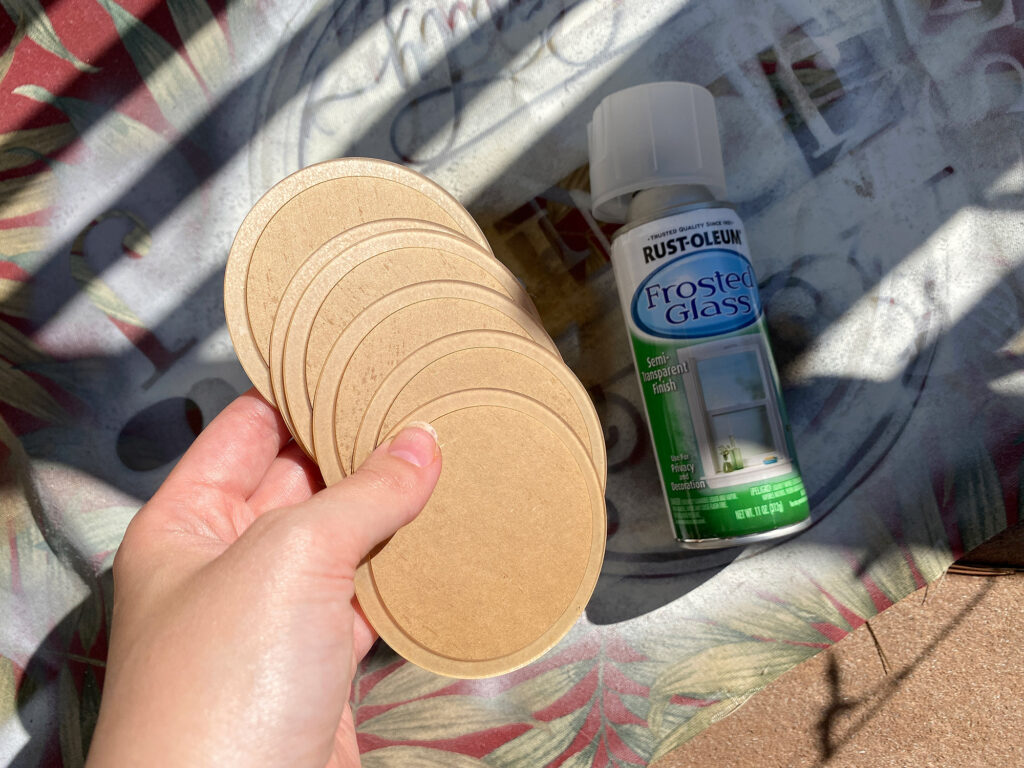
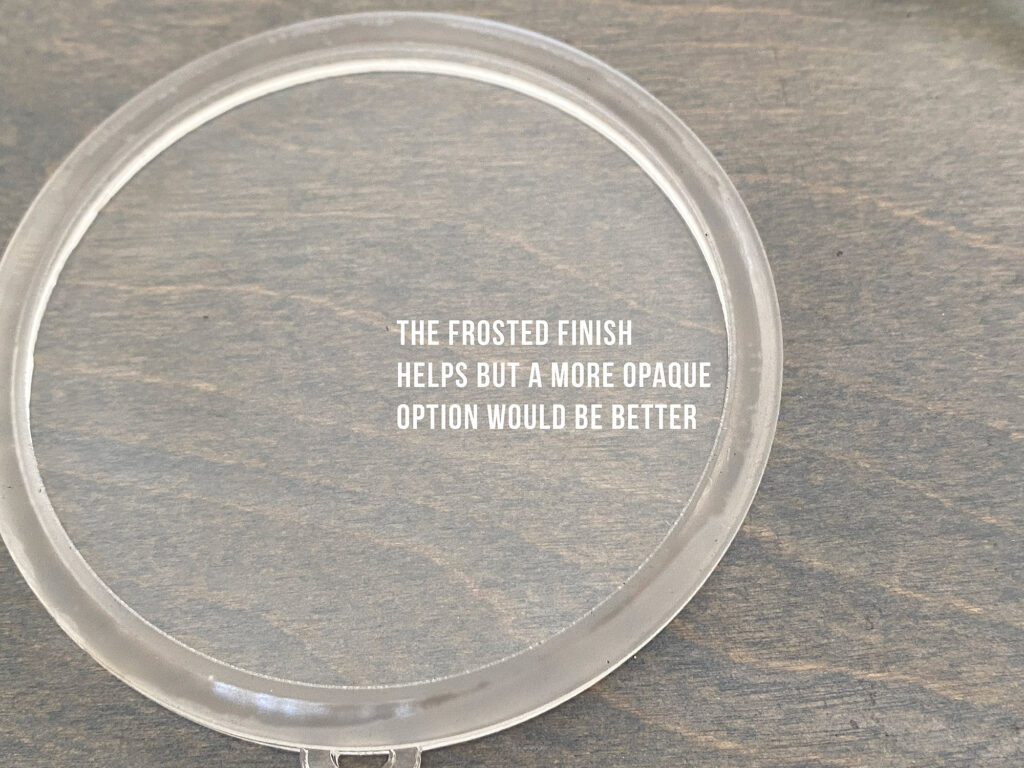
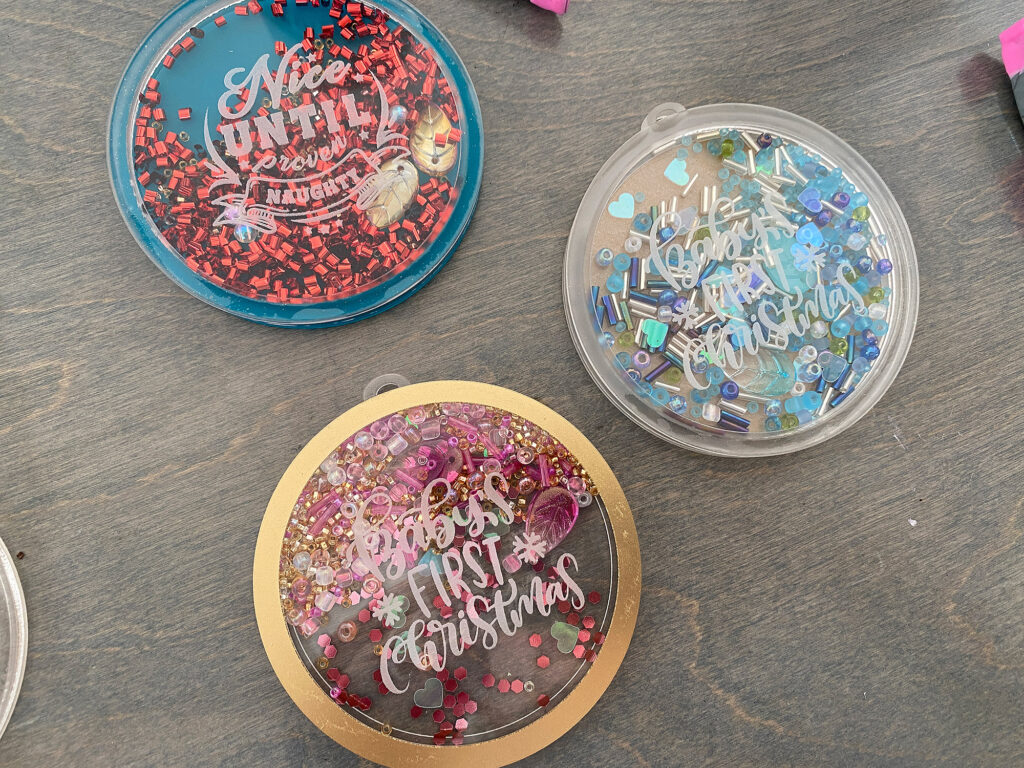
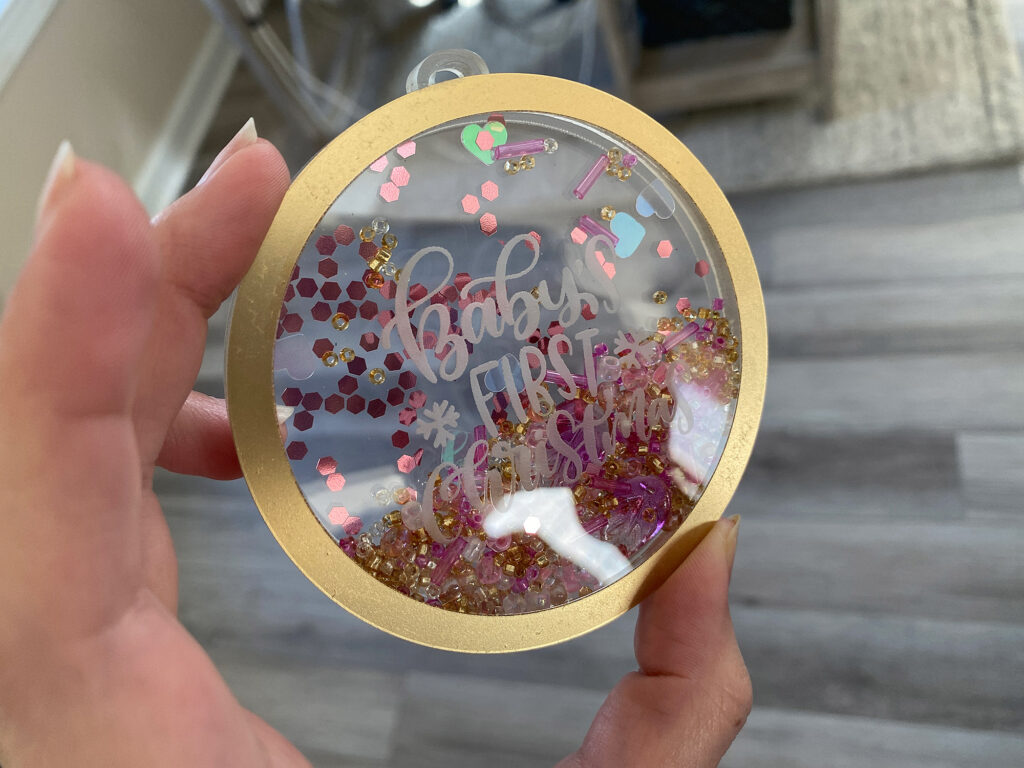
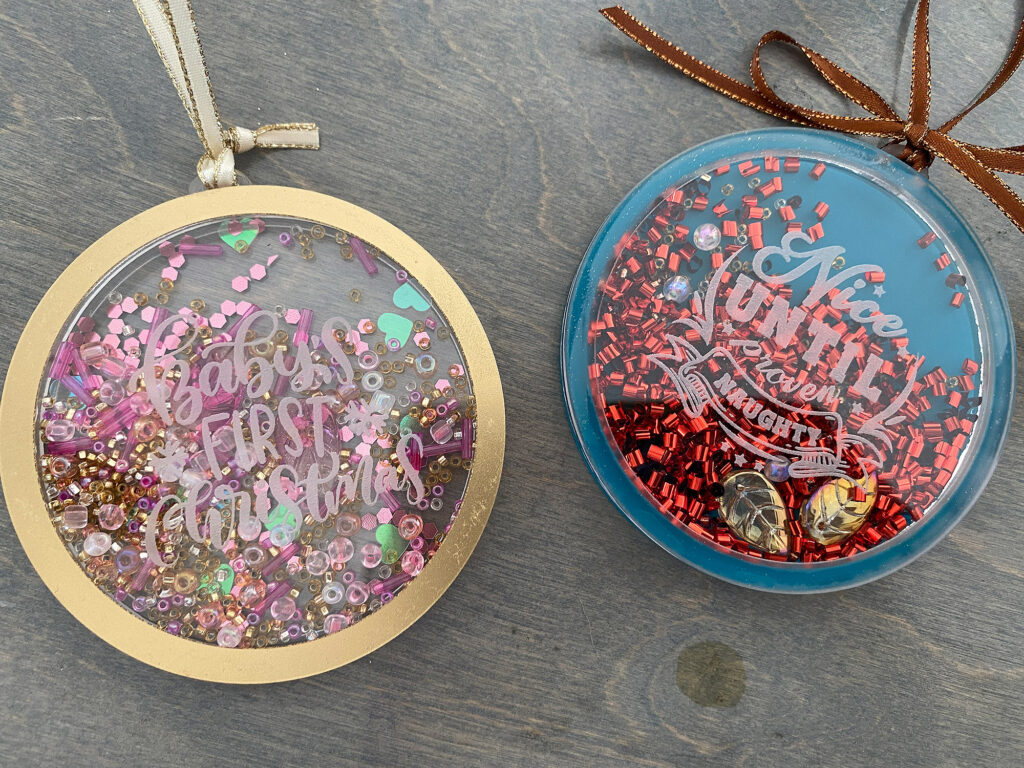
LIQUID FILLED OPTION:
The how to for this making (at least the circle ones) into liquid snow globes is covered in a previous post, but I am going to show a photo below so you can see it is possible and compare it to the other experiments that follow. I first made these liquid filled ones a few years ago and they have lasted wonderfully – no foggy liquid, no leaks, and they have survived multiple winters in the attic without breaking, leaking, or otherwise “going bad”. Summarized, the process is just to drill a small hole in the ring and after very securely gluing the face plates on, filling it with baby oil, then sealing with silicone or UV resin. That’s it. Easy.
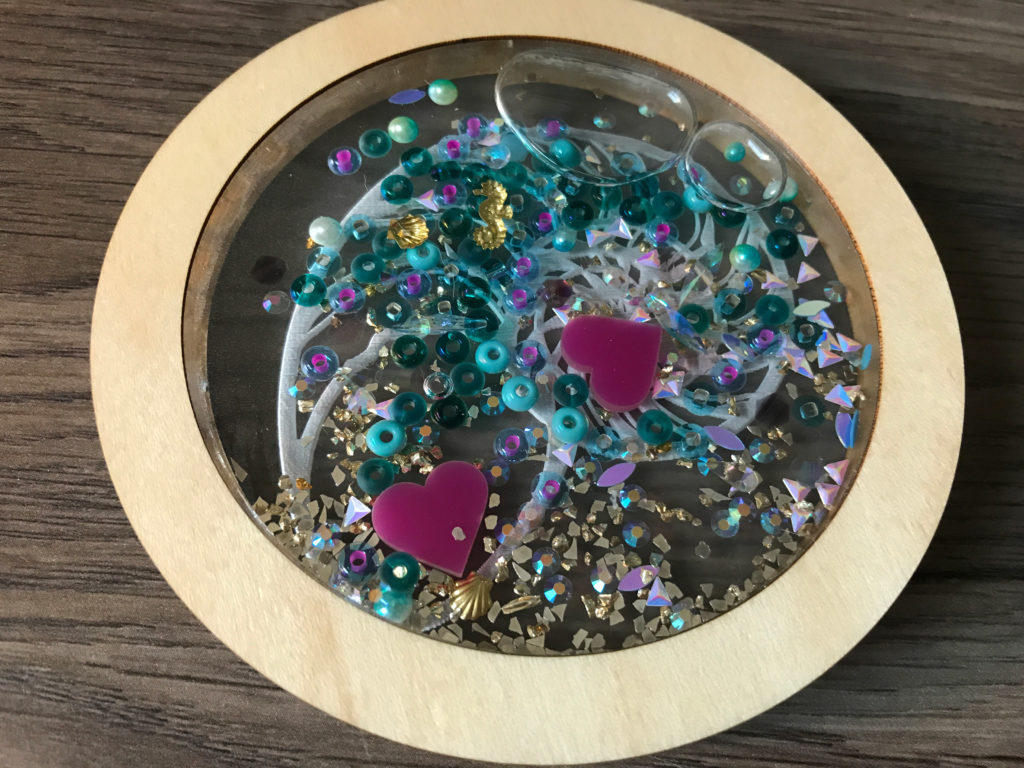
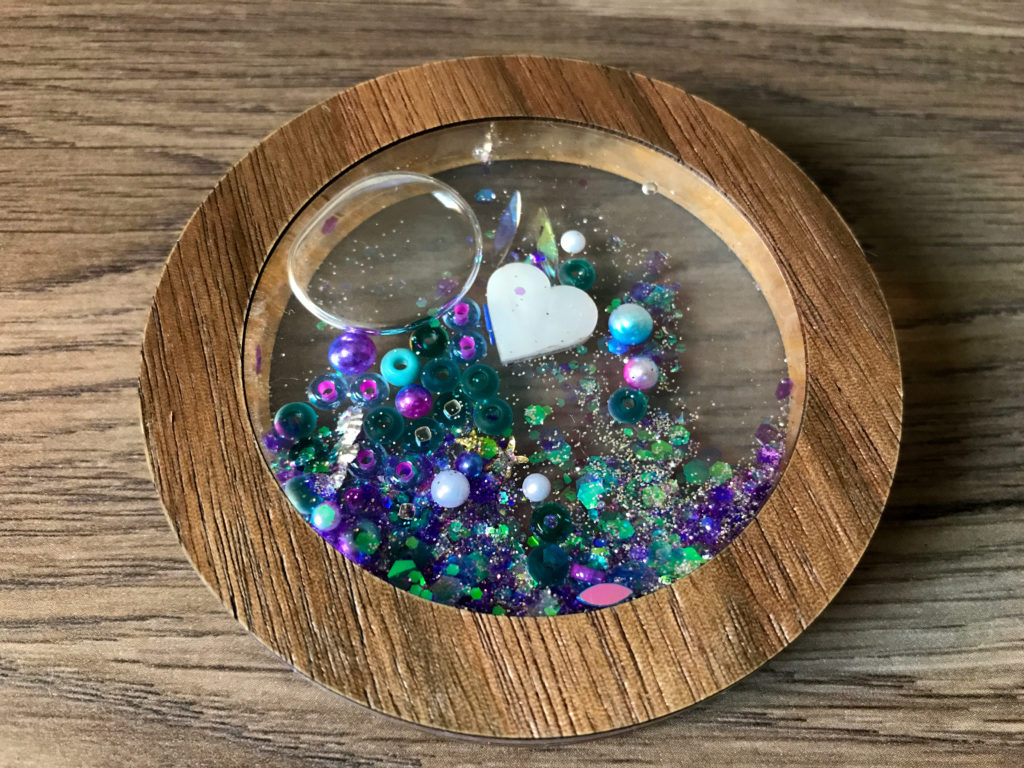
TIP:
You can use the inner circles you cut from the round style of ornaments when making the center ring to make other ornaments!
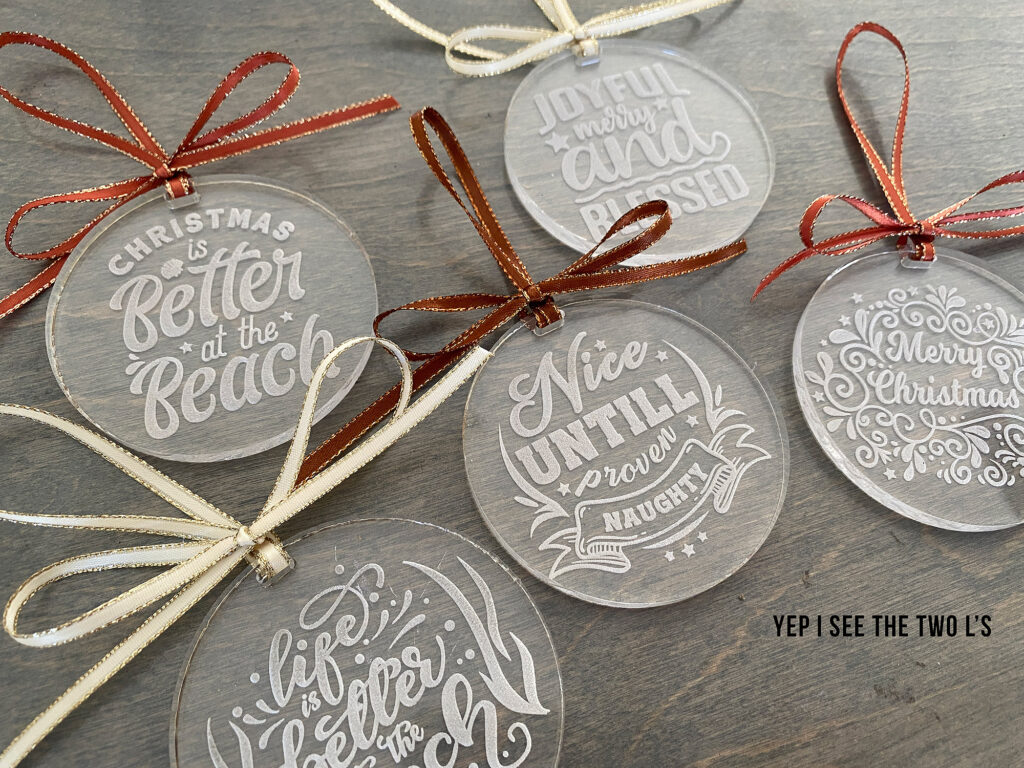
Pre-made Glitter Fillable Shakers
BUY THEM FROM LASERMATES ON ETSY
Maybe you’re sitting there and thinking, “That’s too much layering, too much work”. Well there is another option. You can compare my “homemade” version on the left to a pre-assembled option the right. What’s really spectacular about these pre-made ones is that the seam is ultrasonically welded so it’s CLEAR. No glue seams around the edge. The one disadvantage of these is that there is only a very small hole for filling meaning they work for glitter only. I did manage to hand stick individual tube seed beads but that was the maximum size item that would fit. These are also more expensive per ornament than DIY, but much faster to produce (just engrave or add vinyl to decorate and fill). These are ideal as liquid ornaments. Let me summarize:
Pros of Pre-made:
No glue seams!
Easy to Use – decorate, fill, seal
Ideal for liquid filled as they don’t take up too much liquid or get too heavy
Fit on the crumb tray
Sturdy – I highly double these will leak – they have nice thick walls and a very secure assembly method
Cons:
Thinner – you can only fit glitter because of the hole size, where with homemade you can go as thick as you want by layering and filling before you seal it up. There isn’t really a good answer to this – the perfectly clear edges mean it has to be sealed before you get it, so that’s the trade off. You could drill the hole a little bigger into a slot to fit chunkier glitter or sequins though.
Pricier – Starting at $10 for one, and reducing when bought in packages – not bad, especially for gifting, but with your laser time and filler you’re going to get a bit close on profit margin unless you do these custom.
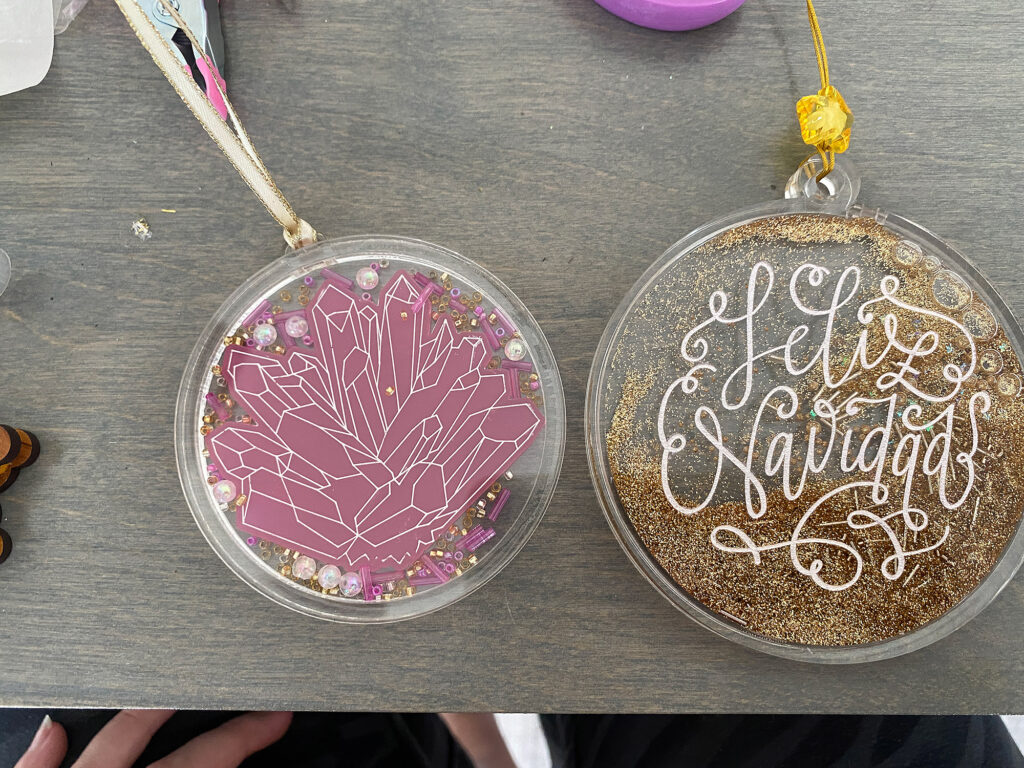
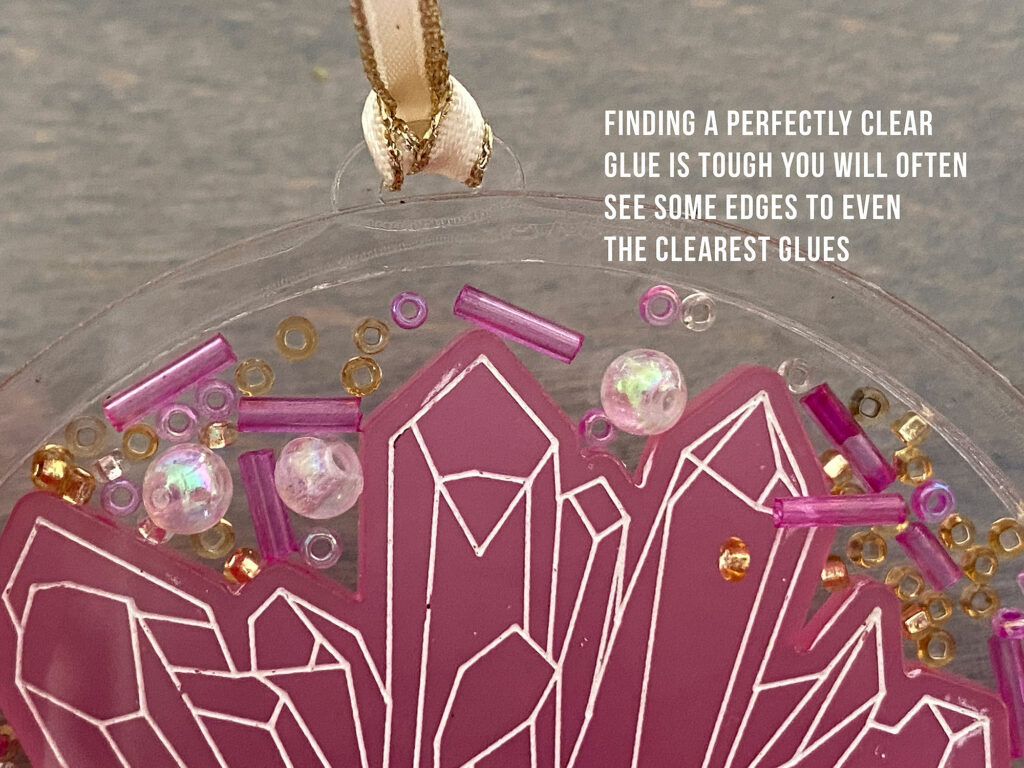
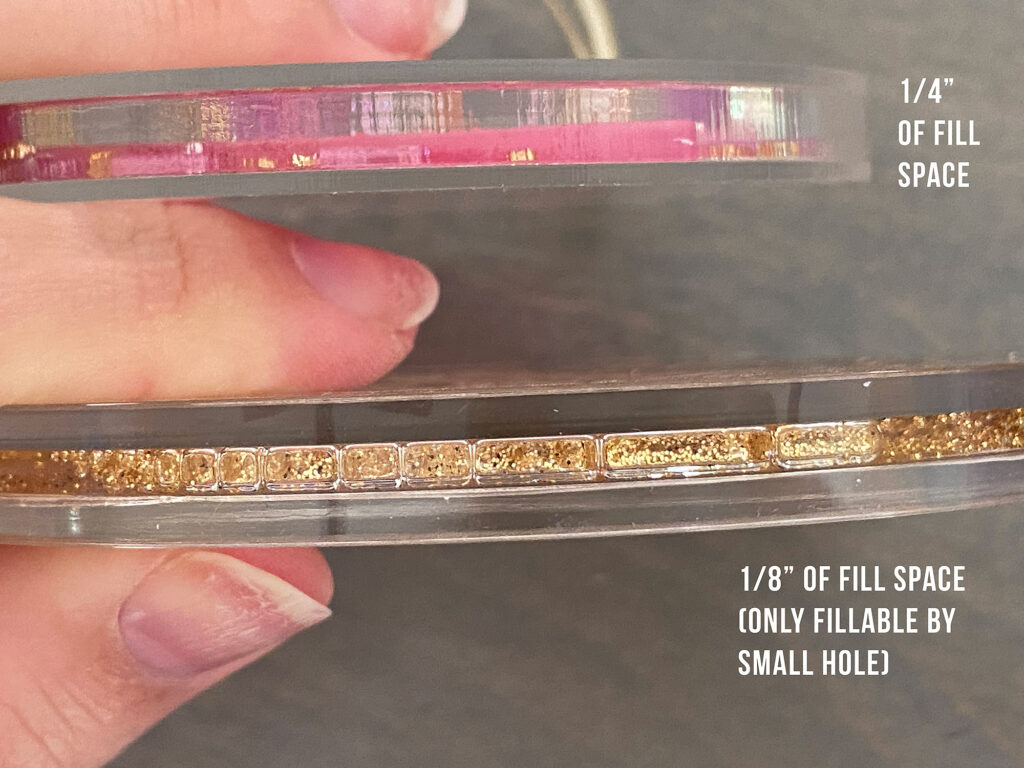
ASSEMBLY
These are pretty easy to make. Just take a piece of white copy paper and put it in your laser, then score a circle with a power of one the size of the ornament. Open the laser, place the ornament in, and engrave it. You will have perfect lineup based on the circle you scored. If that makes NO sense. Check out this blog post on making a jig. For me, my camera is pretty accurate, so I just place the ornament right at the center under the camera, line up and engrave. Easy. Just rub the surface down with a bit of dish soap to protect the surface (I forgot to do this and it still turned out good though).
You can see initially below my settings were too subtle (I defocused a bit and it came out lighter and smoother than I wanted). You cannot read the text. I find this to be kind of true with many of the shakers I made. Paint filling is your answer when this happens. I used a glittery white acrylic and scraped it across the surface to fill the engrave. Then when it was mostly dry just buffed the rest away with a magic eraser. If you let it completely dry it can be a b**** to get off but with some plastic razor blade scraping and the magic eraser you’ll get it eventually. See this post on doing an engraved paint fill for more tips.
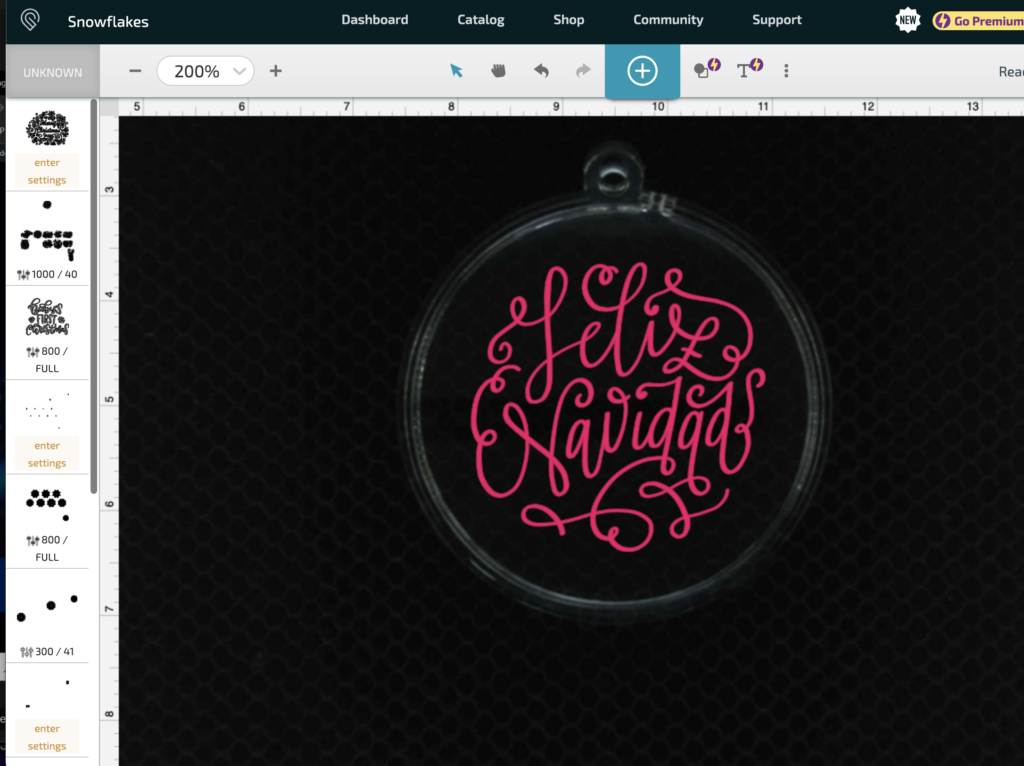
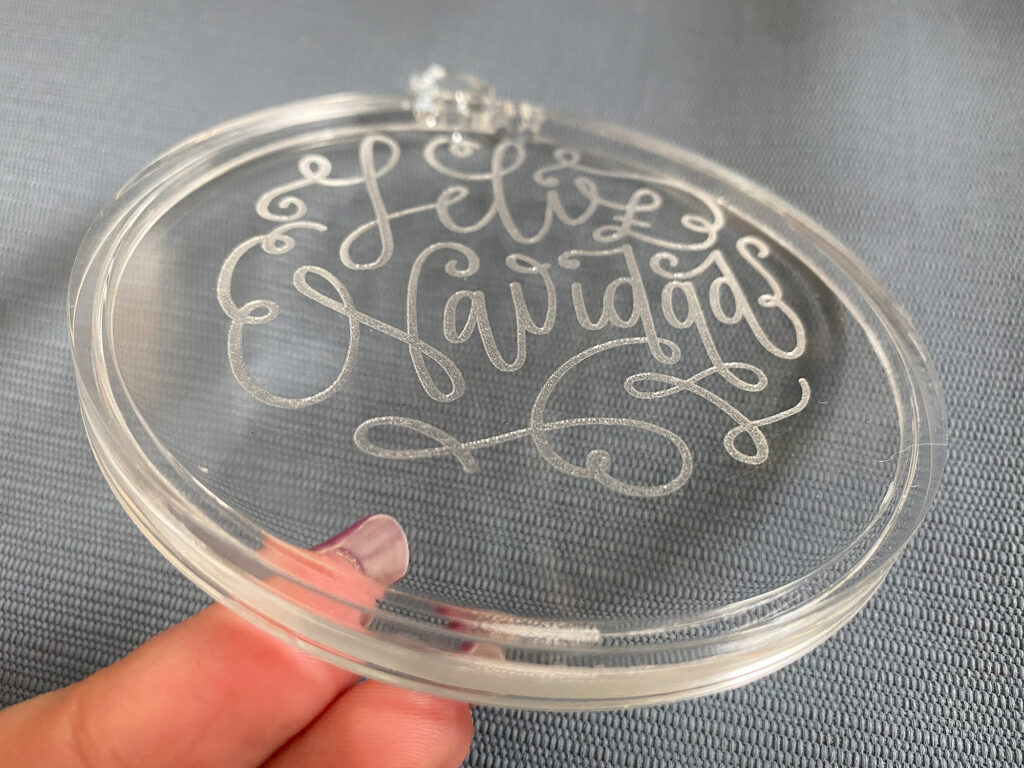

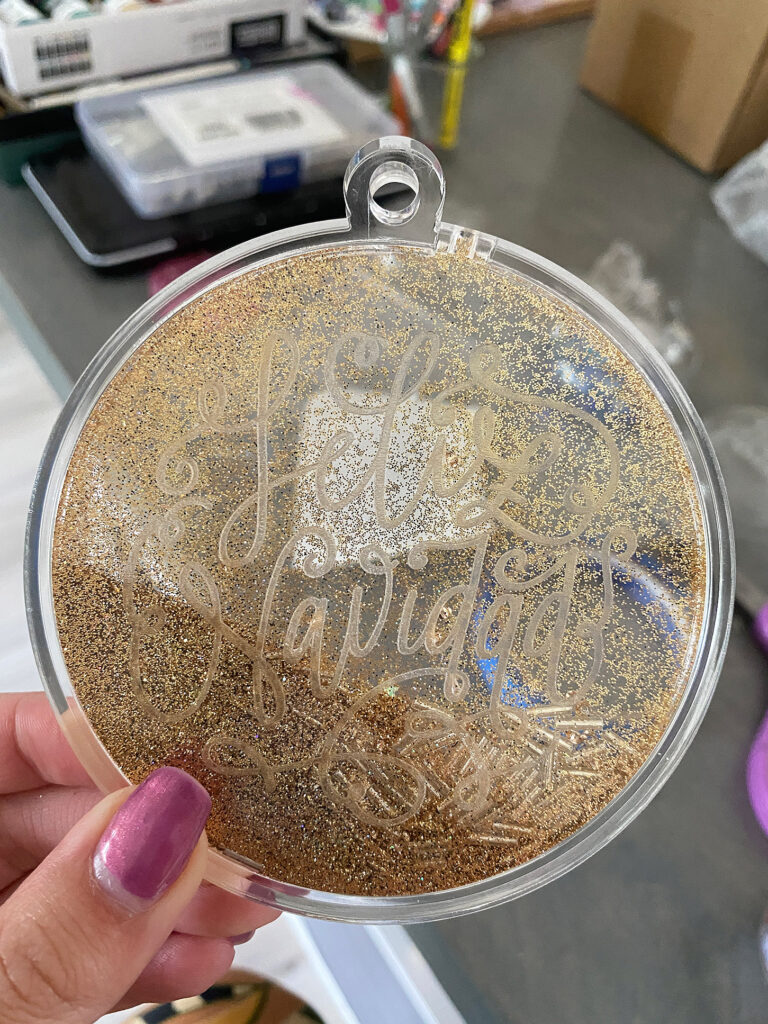
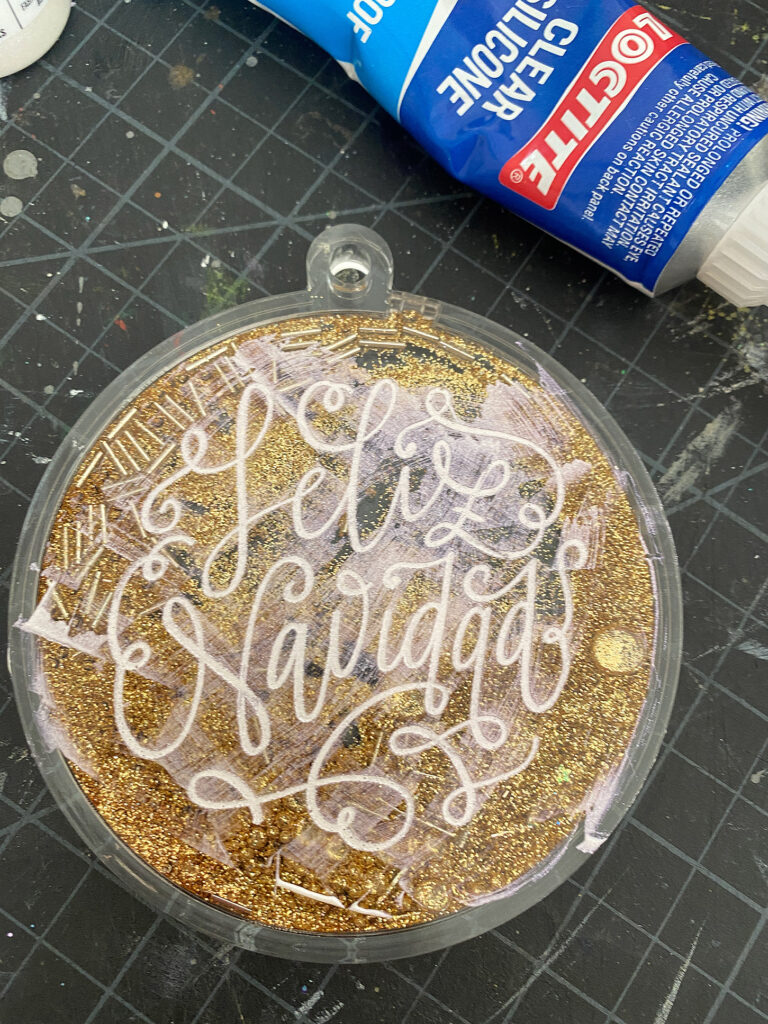
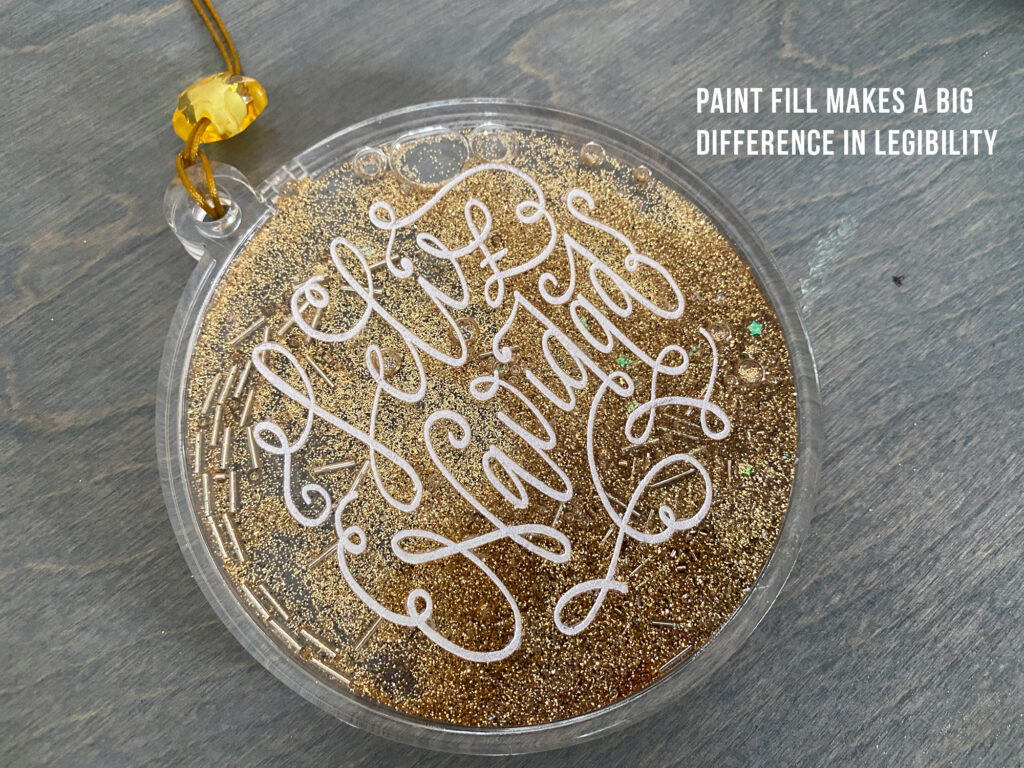
FILLING AND SEALING
I did the paint fill after I realized the glitter made it impossible to see, but I still want to go back and show you how I filled them with liquid and sealed them. First I made a tiny funnel out of a scrap piece of paper (this is the sticker backer from my shipping label machine, I keep them to use as little paint palettes). Then I poured in my glitter. After that I took a syringe (same set I use for Weldon, I just use one of the bigger needle sizes), and pumped in pure baby oil which I think has the best clarity and viscosity for liquid shakers. Finally I took a dab of silicone and sealed the hole – letting it dry upright for 24 hours. You can also use UV resin and I’ve shown that in my previous liquid snow globe shaker ornament post (where I did them from scratch like the ornaments from the previous section. I would recommend leaving a small bubble or two of air inside, this helps move the glitter around when you shake it.
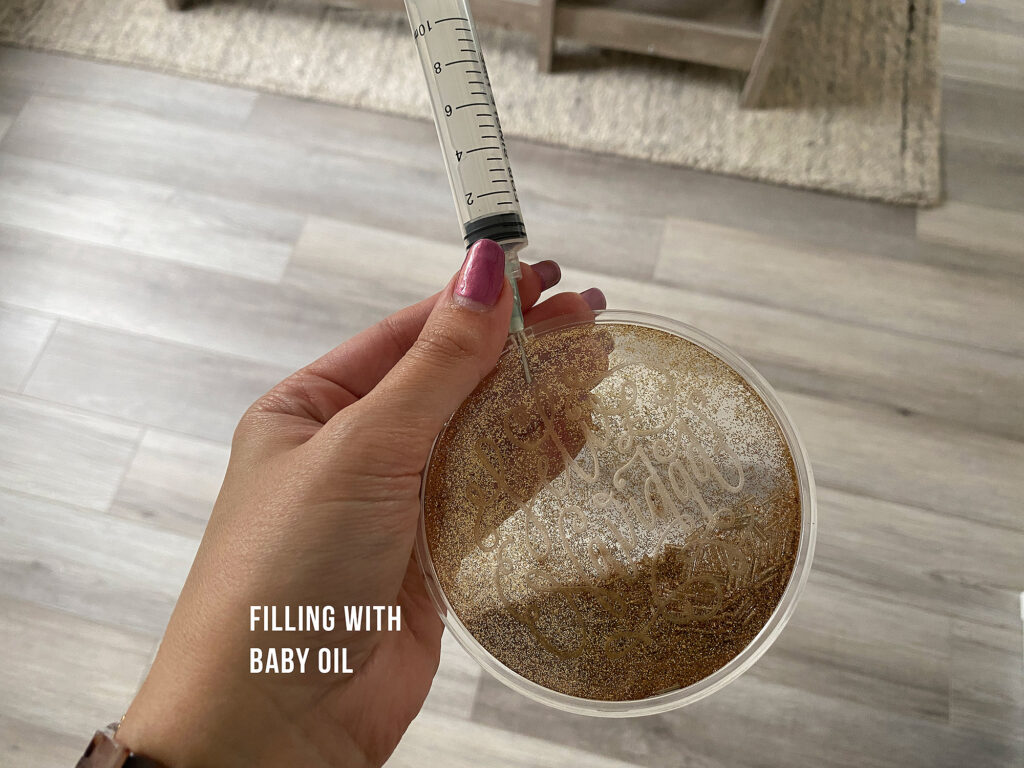
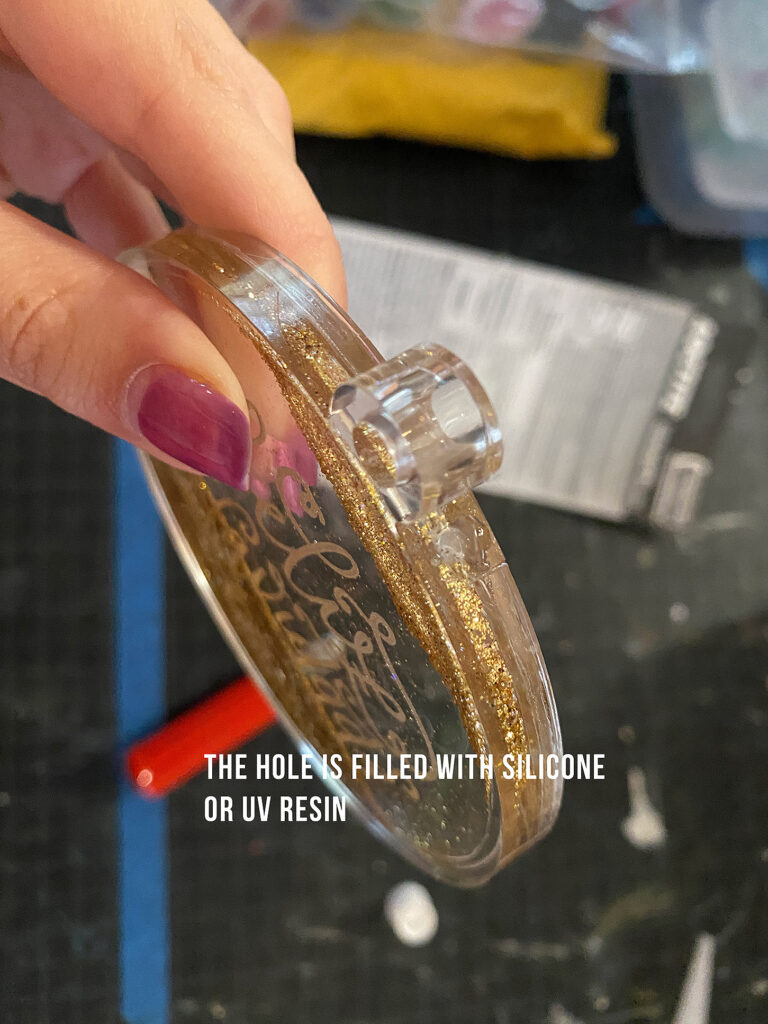
Glass Shaker Ornaments
ENGRAVING THE GLASS
So, in my opinion these were the toughest of the three to put together, but that’s mostly due to how many different things I had to try. I was also adamant about making a liquid shaker as I had done with both of the previous examples.
I was not happy how these glass ornaments engraved. Glass can be hit or miss depending on its composition and both styles of glass ornaments I bought seemed to have some sort of coating that also made them impossible to use etching cream on. I bought two types as shown below.
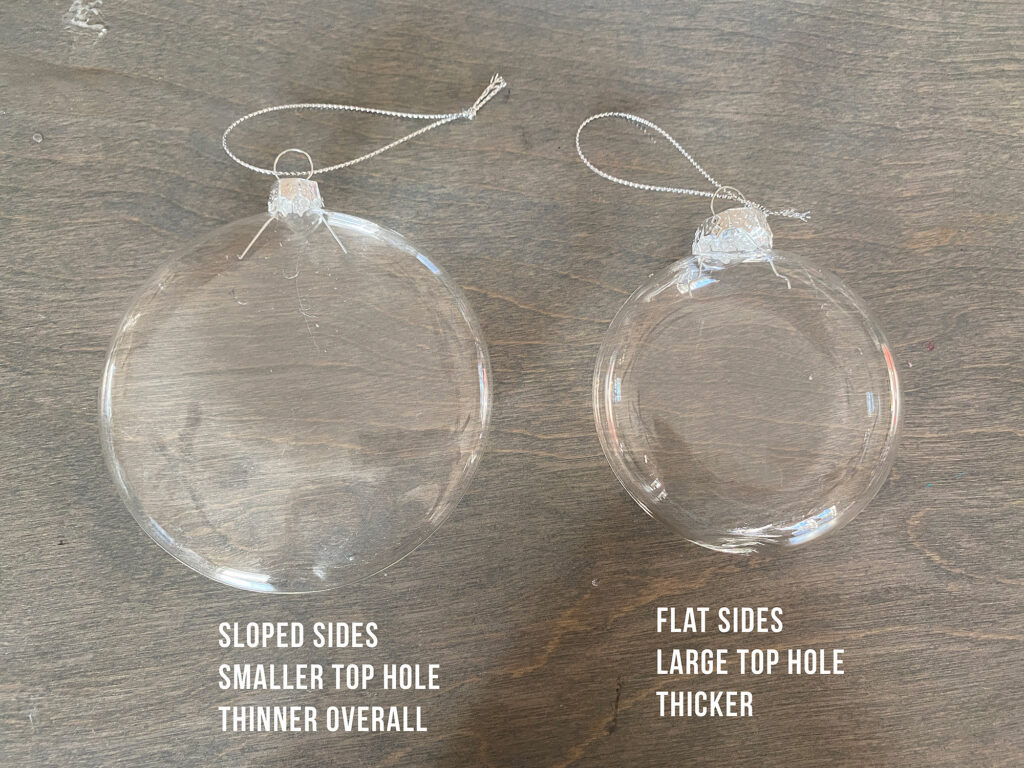
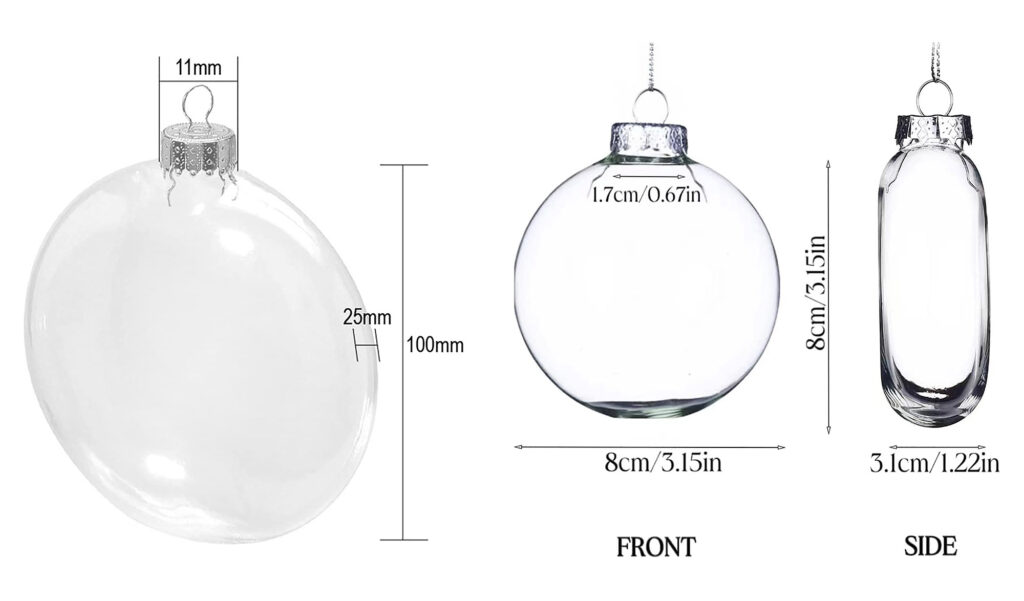
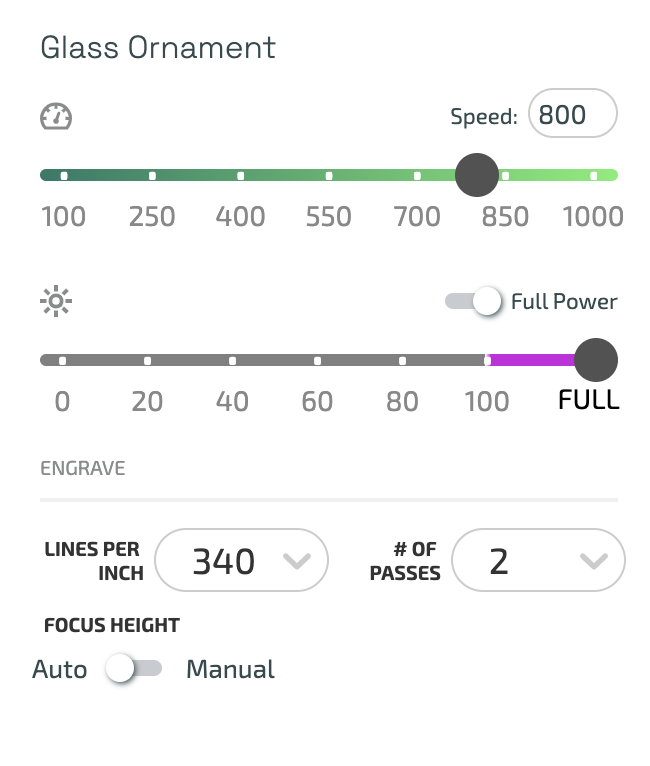
Glass Ornament Settings
I never found perfect settings for this glass – it just seams to not want to engrave properly and instead sort of fractures (which is kind of what’s happening in general for glass laser etching). I tried a ton of settings from all manner of blog posts and for these particular ornaments the best option was:
Speed: 800
Power: Full
LPI: 340
Passes: 2
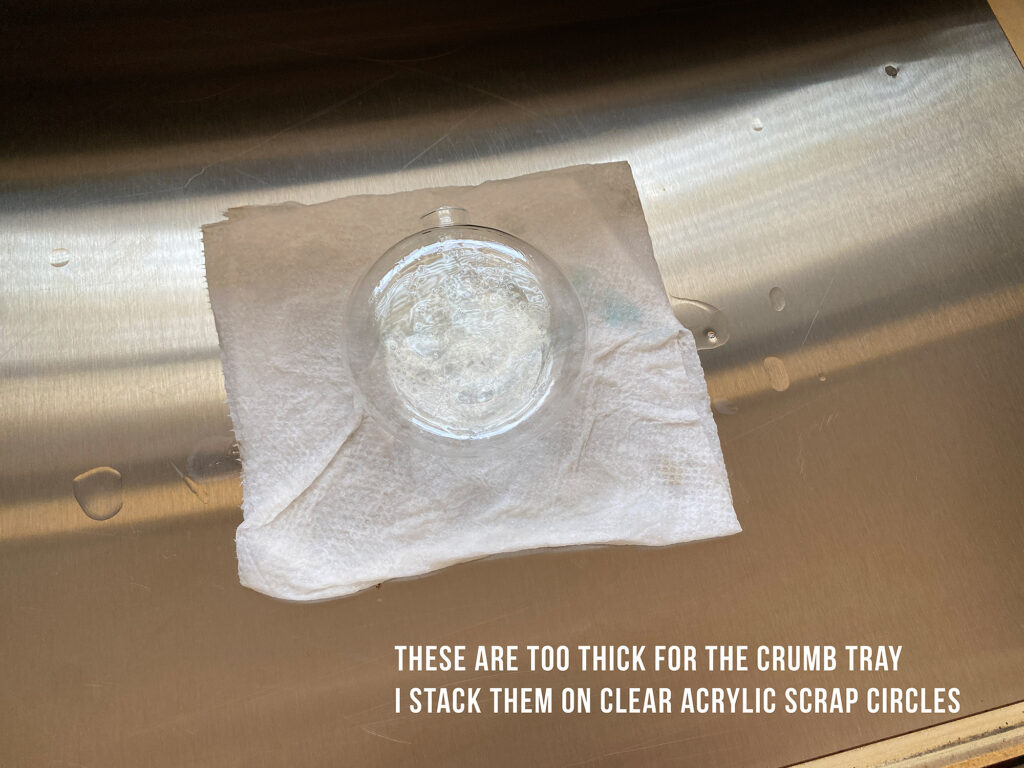
To engrave these, I just removed the crumb tray and stacked a few scrap 1/4″ acrylic pieces underneath. Glass does not like to be heated up too much or too unevenly so applying a layer of dish soap helps distribute the heat and that’s what I used for my masking. You CAN also use regular masking – I think blue painters tape would actually work better than my typical masking, but it still worked. This would allow you to paint the design before peeling which could be a good option.
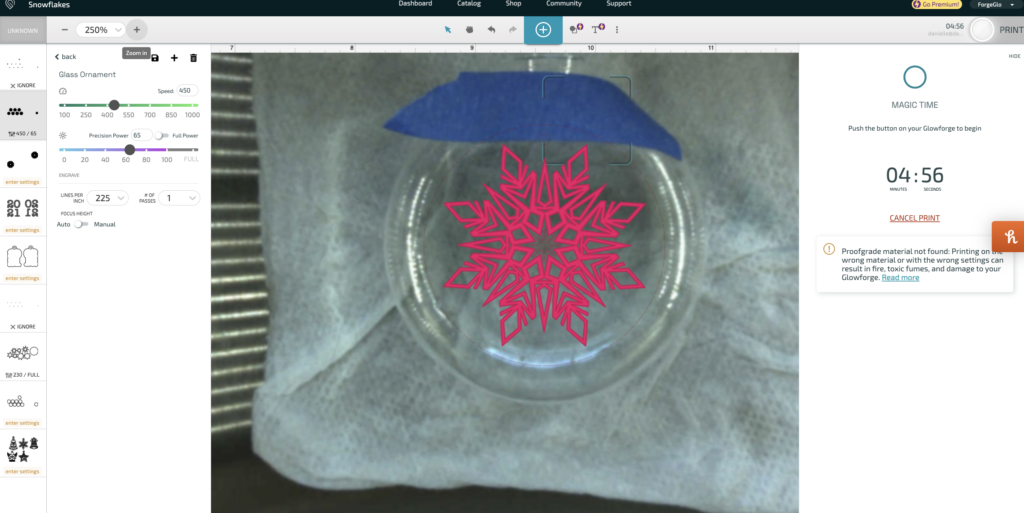
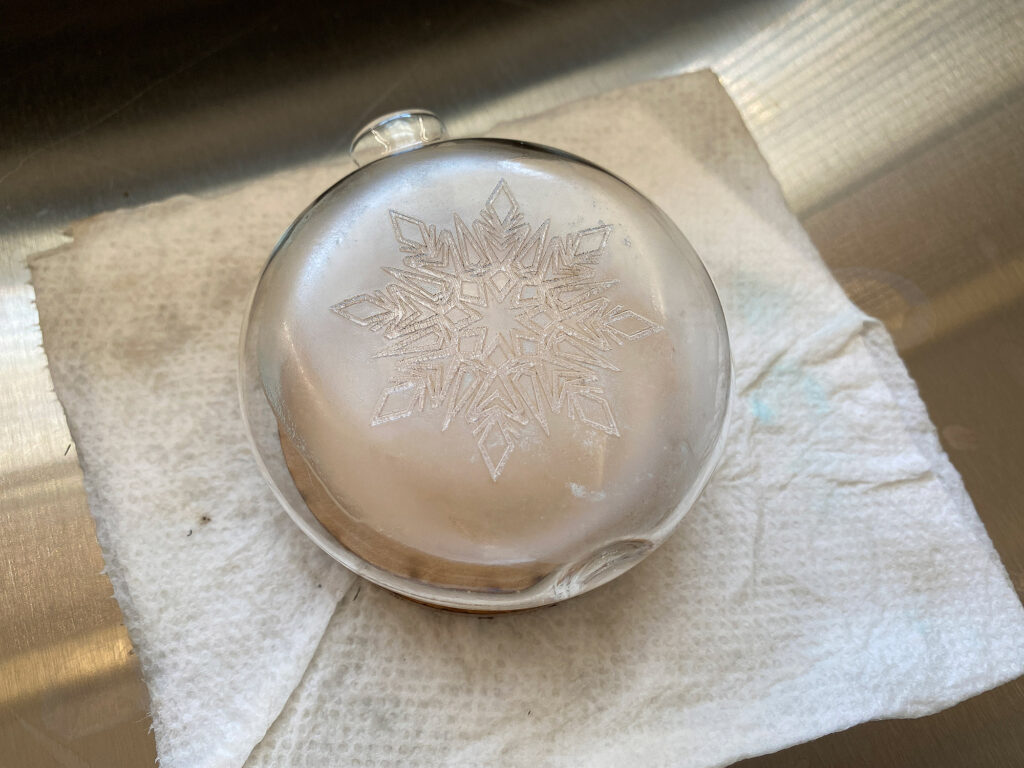
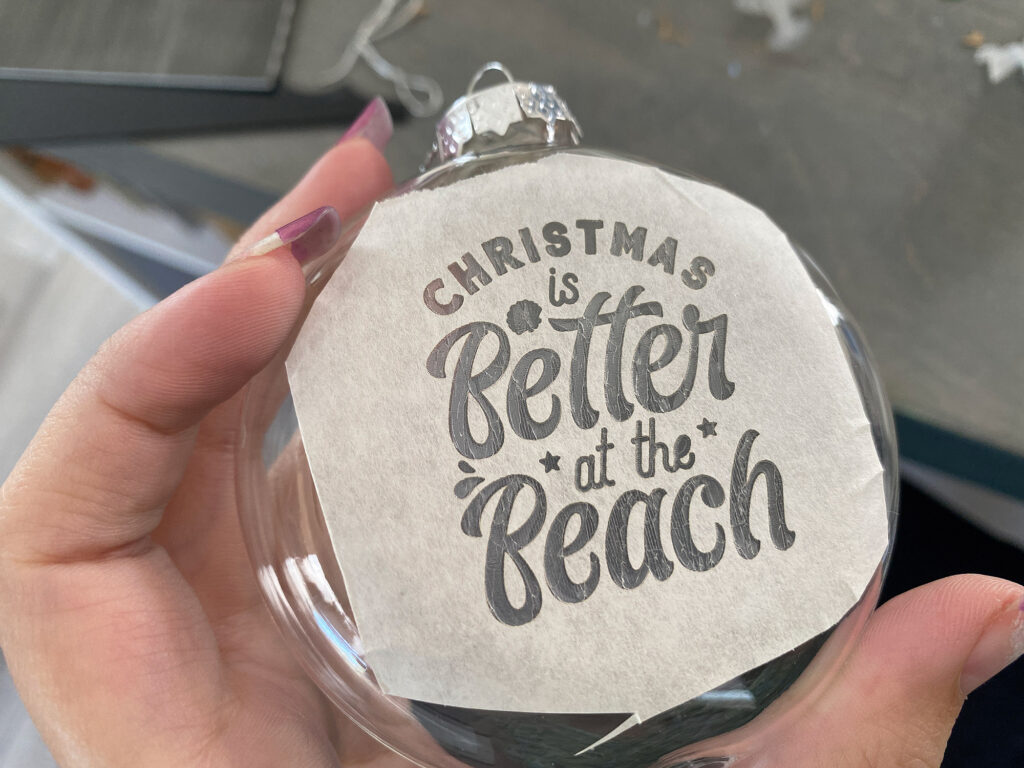
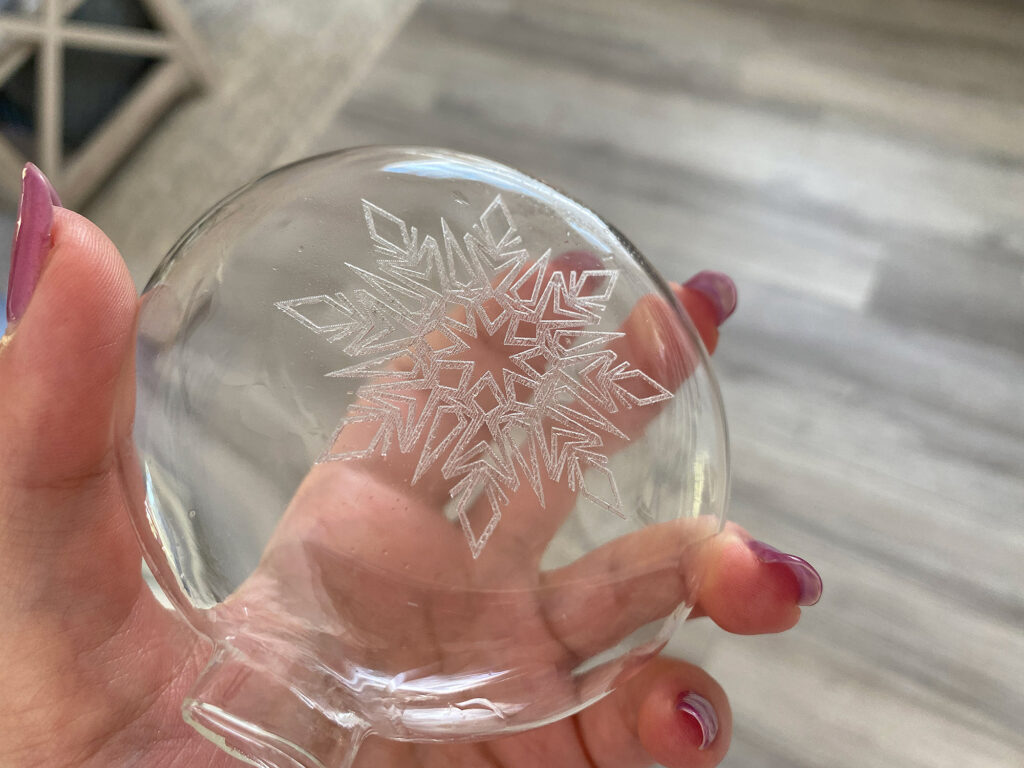
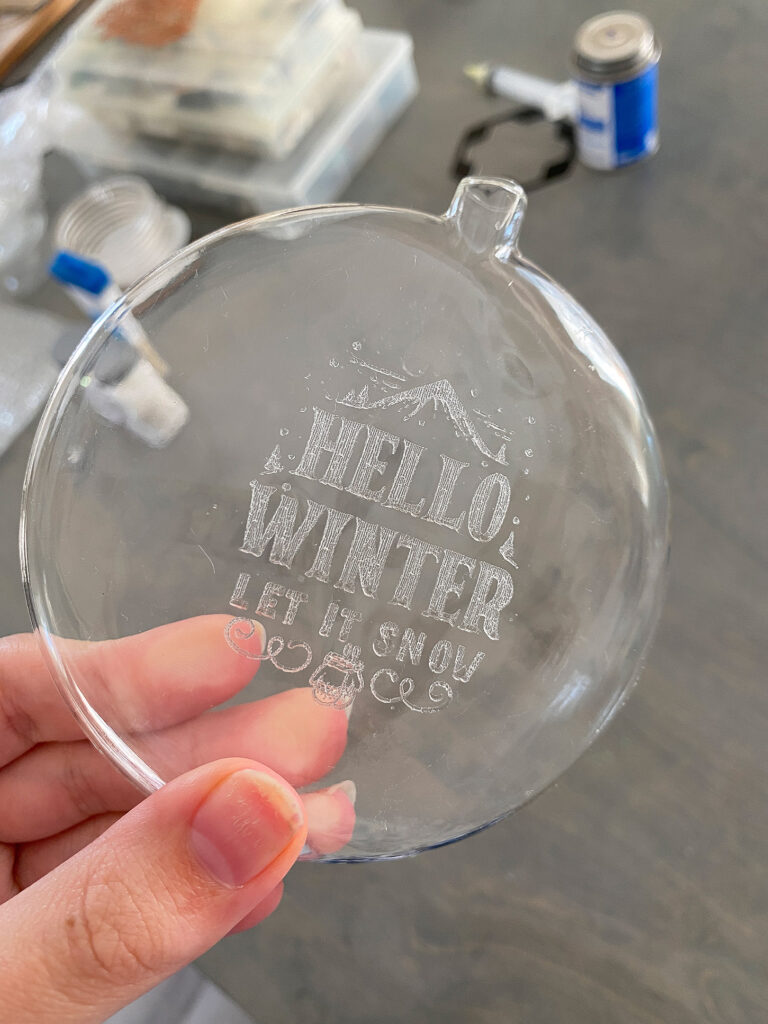
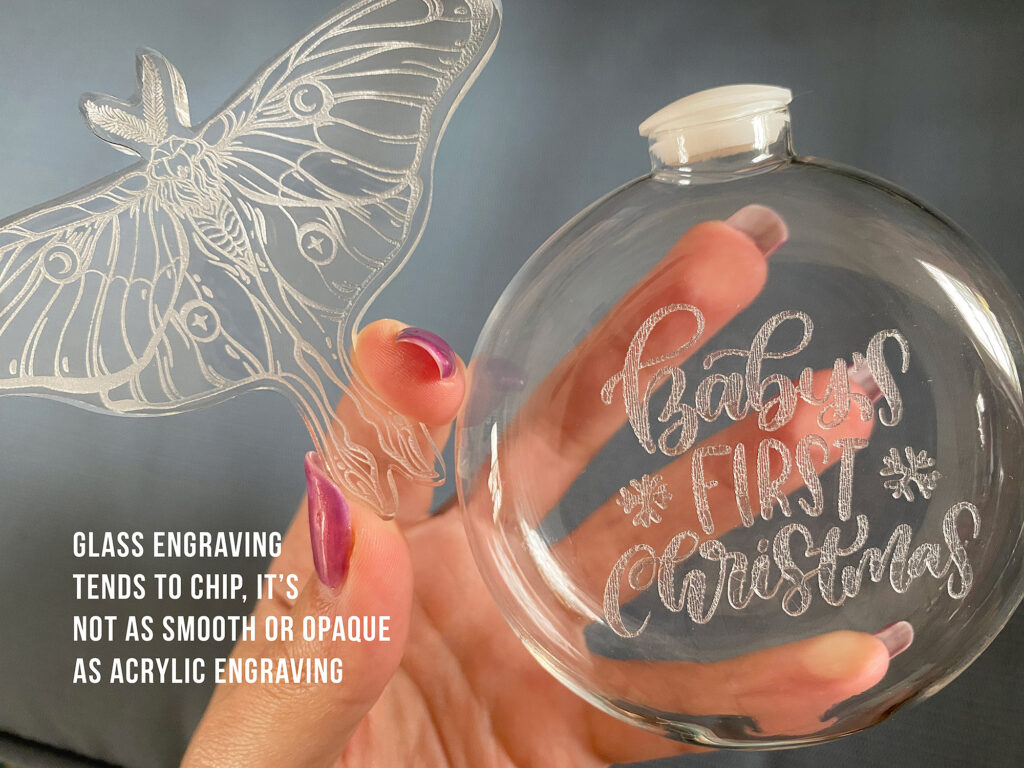
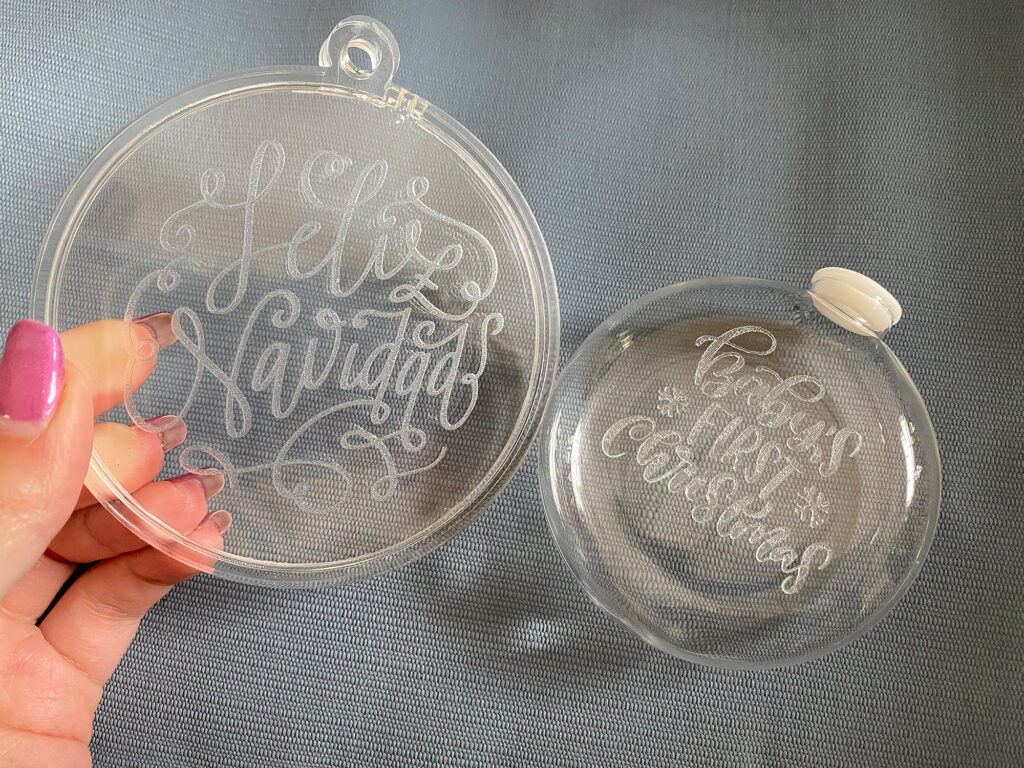
MAKING THE ENGRAVE NICER
In both the acrylic and the glass example above, the engrave didn’t really have enough contrast once the ornaments were filled (for the acrylic it might have been my settings as I defocused a bit which made it smooth but less white). My solution for both was to do a paint fill. Simply dab or scrape on some paint and then buff or scrape it off once it’s almost dry. I really liked this white shimmery acrylic from the craft store. It still had the “feel” of a glass etching, but was easy to work with. The most annoying part of this process is sometimes in the process of cleaning the surrounding area you scrape out or mess up a part of your paint fill and then have to add more paint and clean up again.
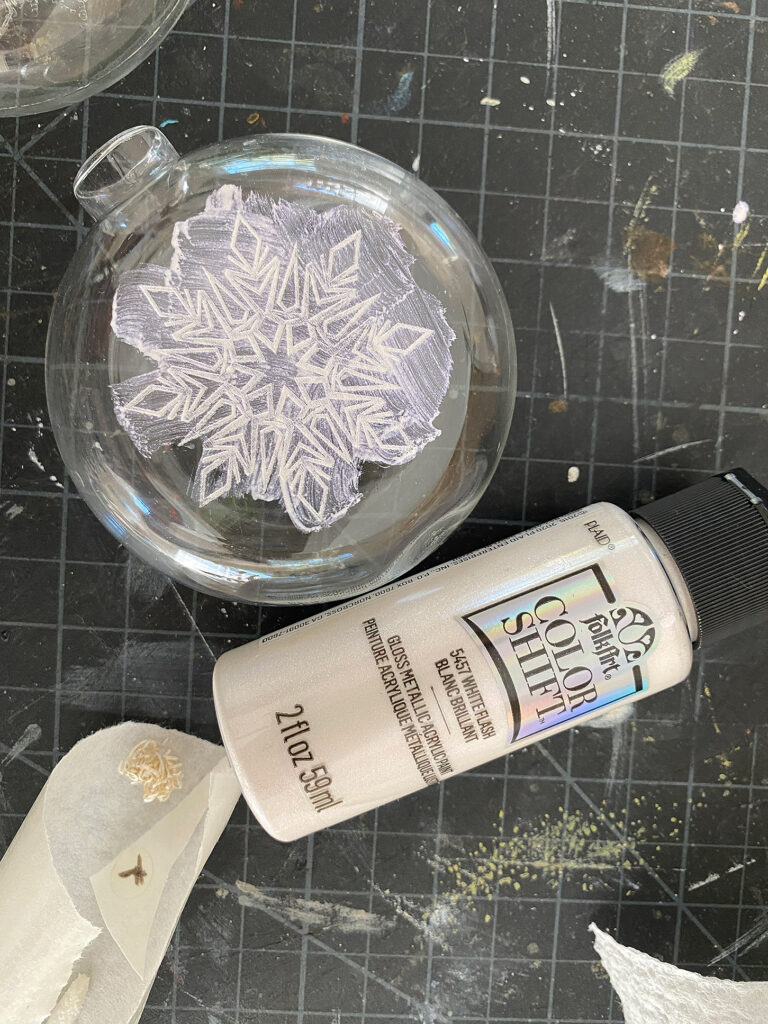
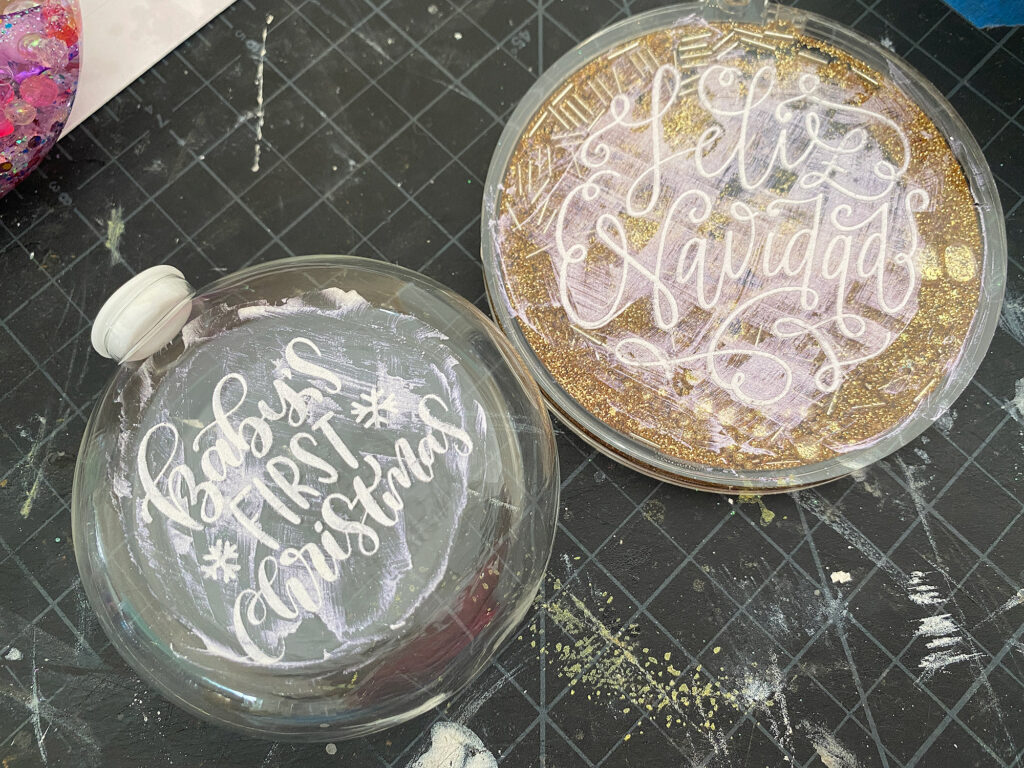
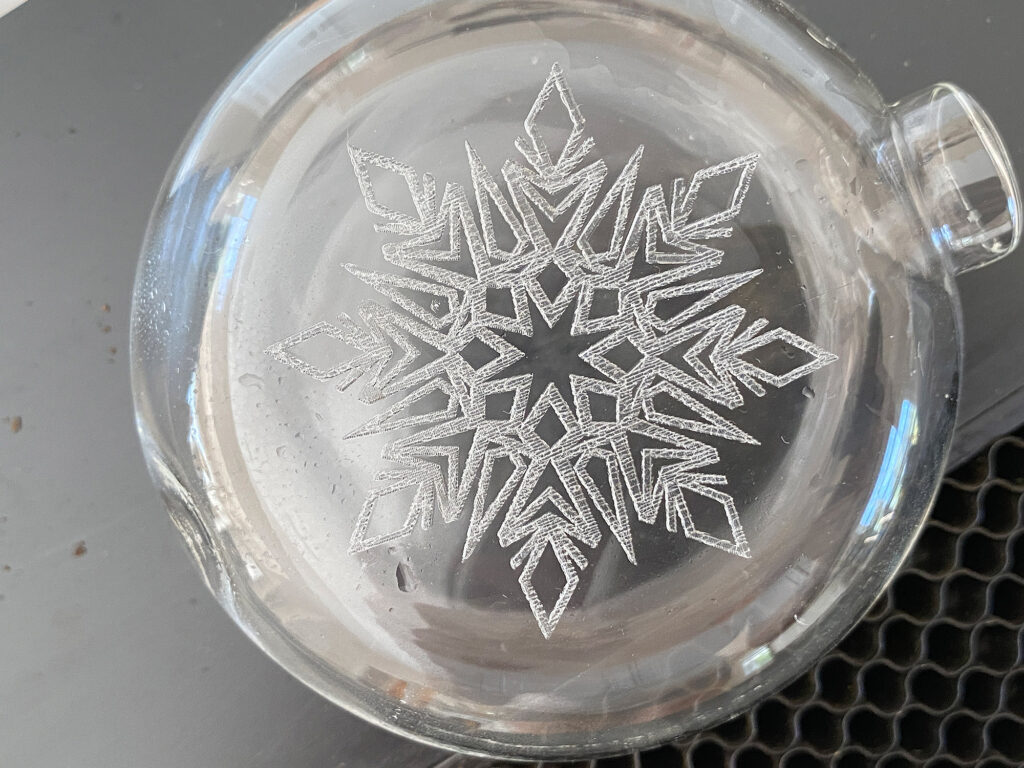
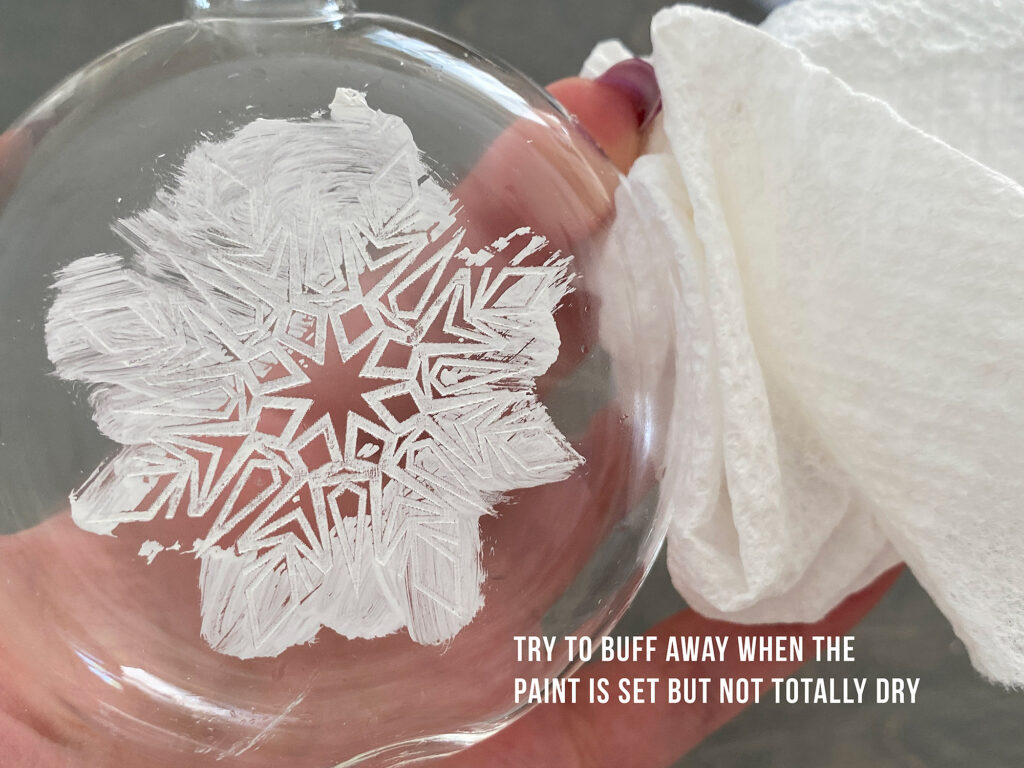
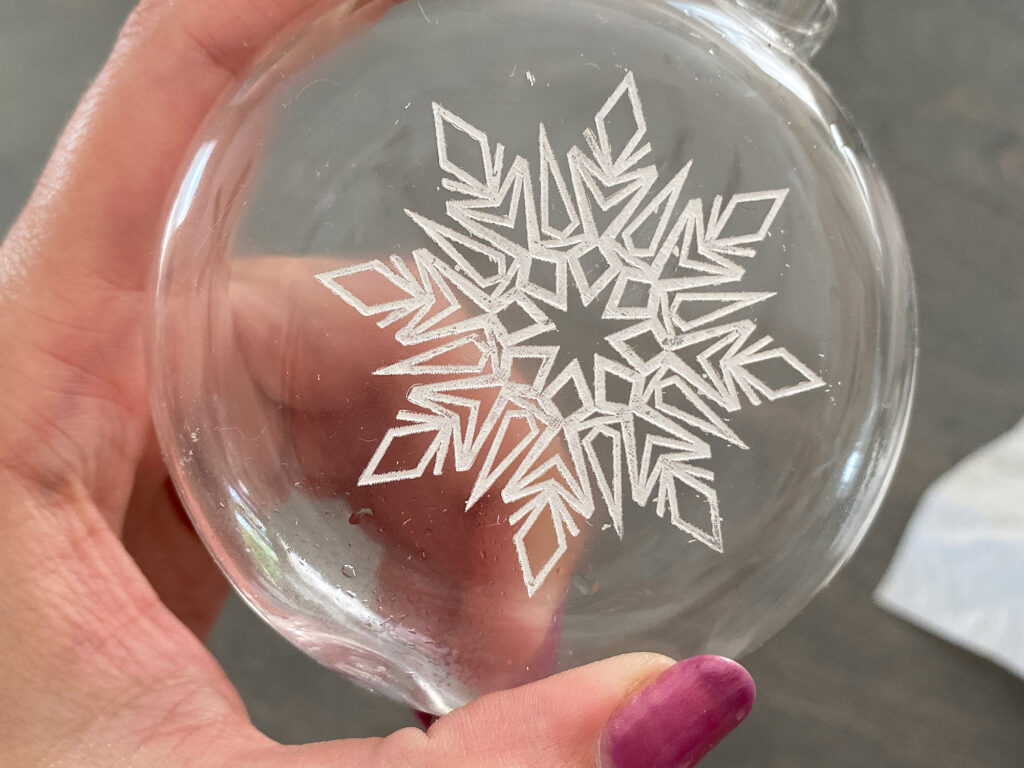
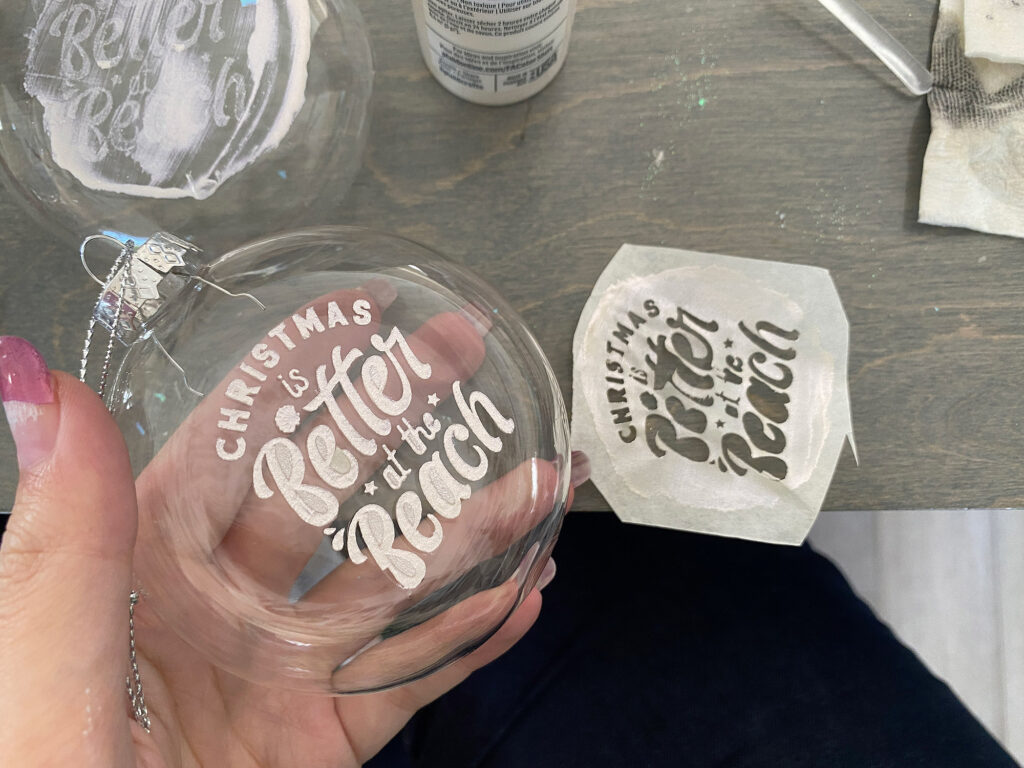
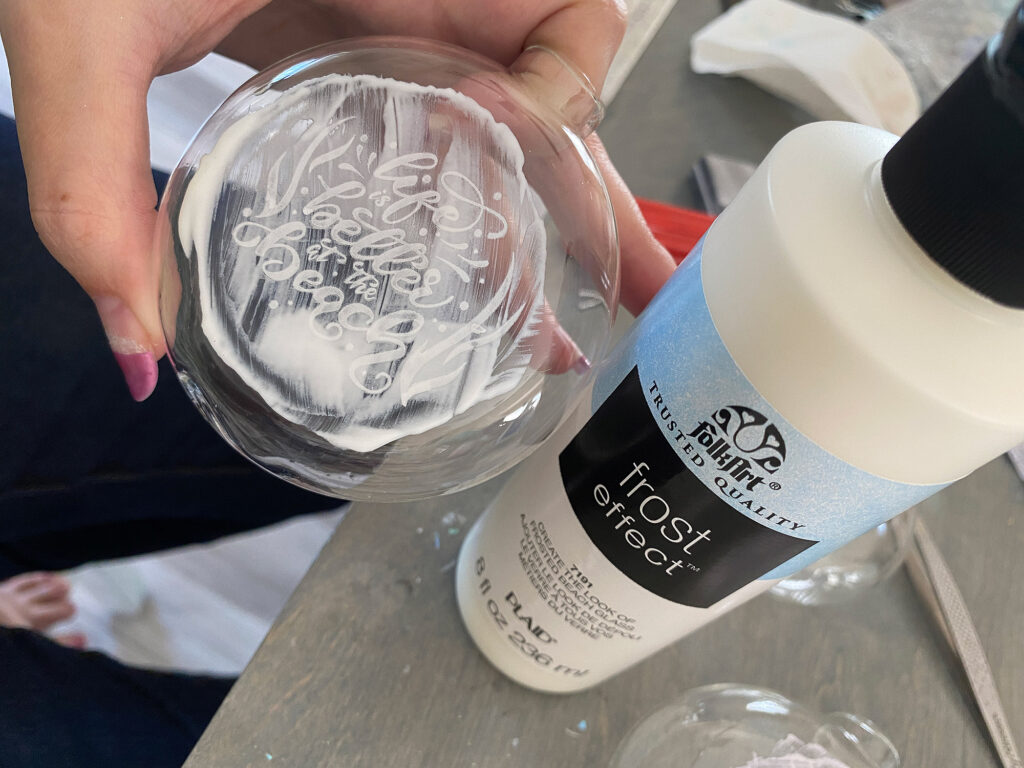
I didn’t love the frost effect paint – it wasn’t opaque enough to really look great, but it is an option and it worked well for other projects.
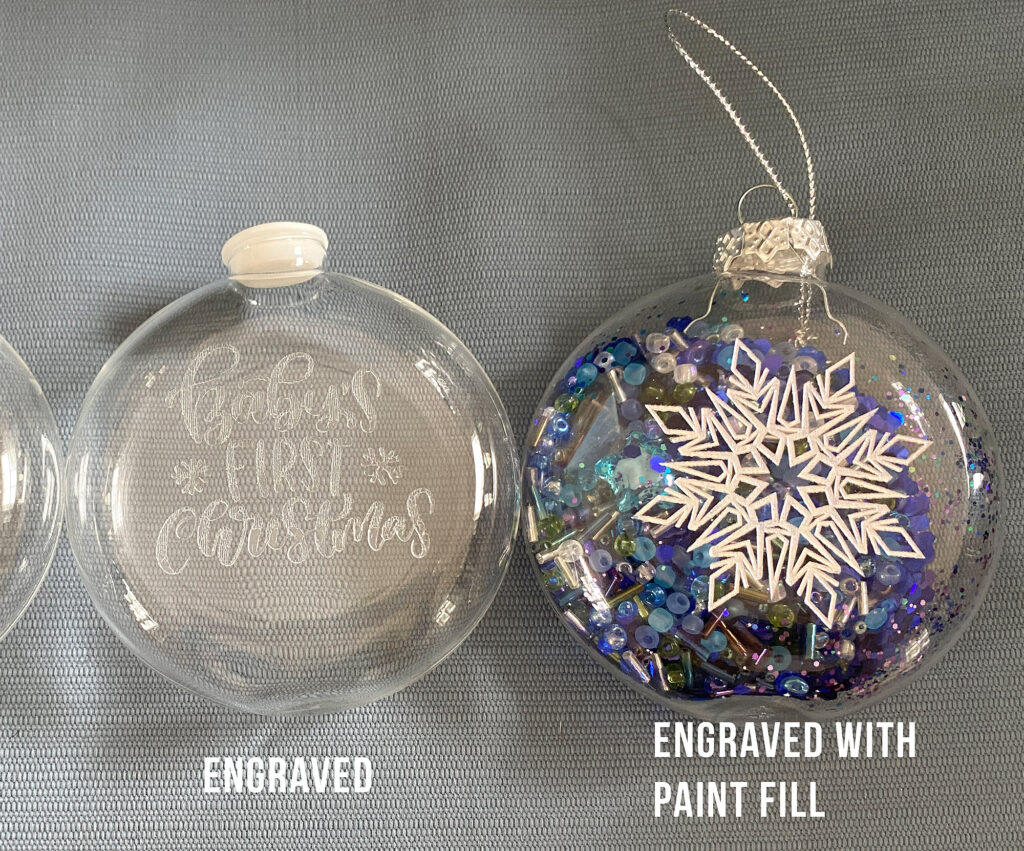
OTHER THINGS I TRIED – Etching Cream
Logically, you’d think I could apply some masking, score a stencil, weed it, and apply etching cream. Well, I tried that, but these ornaments would NOT respond to the etching cream. I left it on for the directed amount of time, for an hour, and then for 24 hours. NOTHING. I left it on until it completely dried, and I got a tiny bit of an effect, but it wasn’t great and it becomes hard to remove once dry. This is also a dangerous acid that is absorbed into the skin, so you need to wear gloves when handling.
See that black X below on the masking? I used that to line up my design. I just marked the center of the ornament because my masking was all wonky and I was afraid I’d mis-align it.
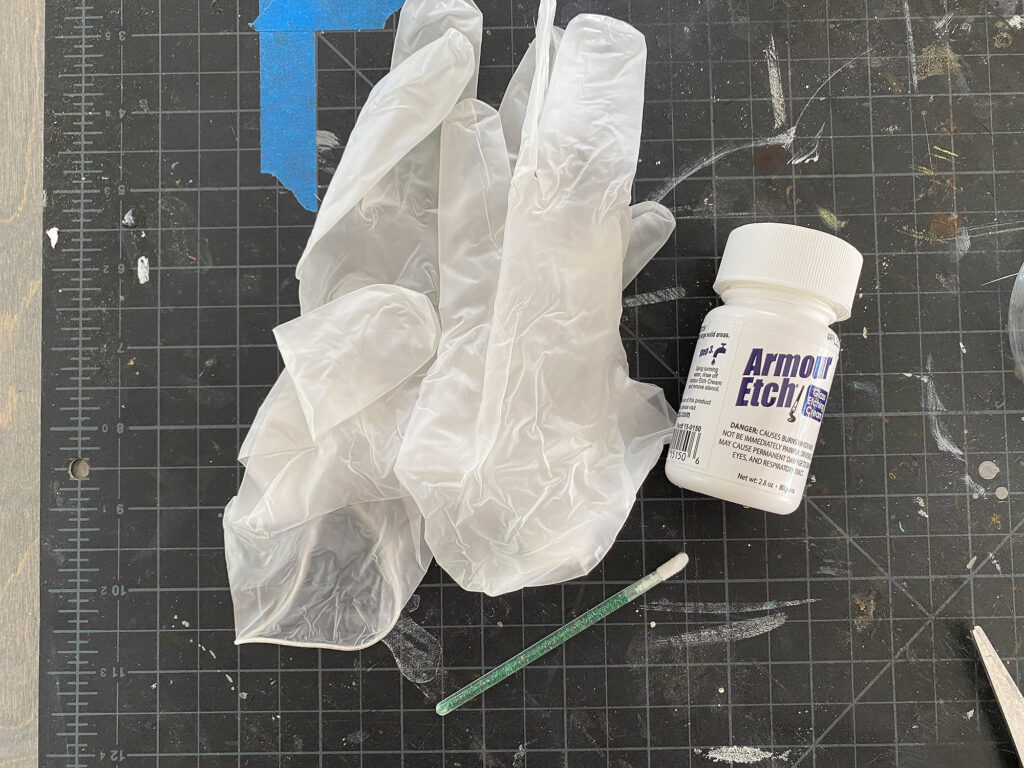
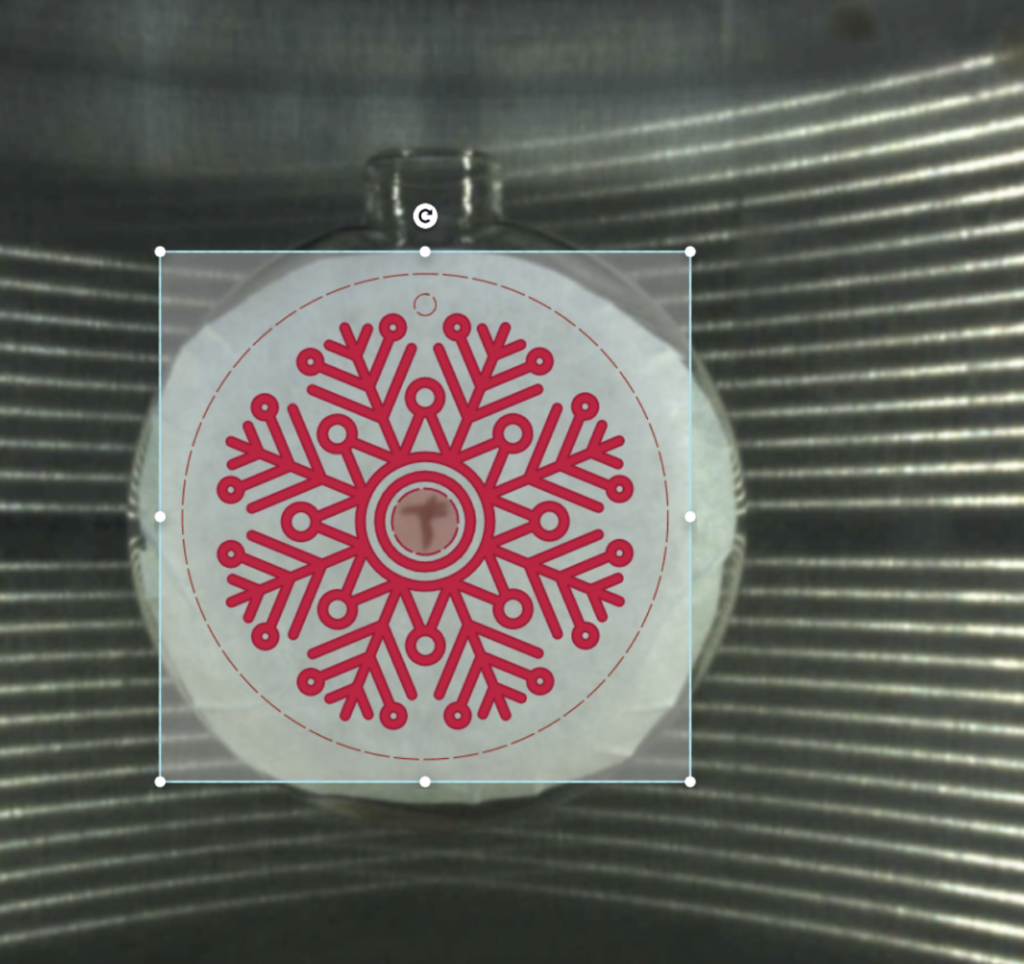
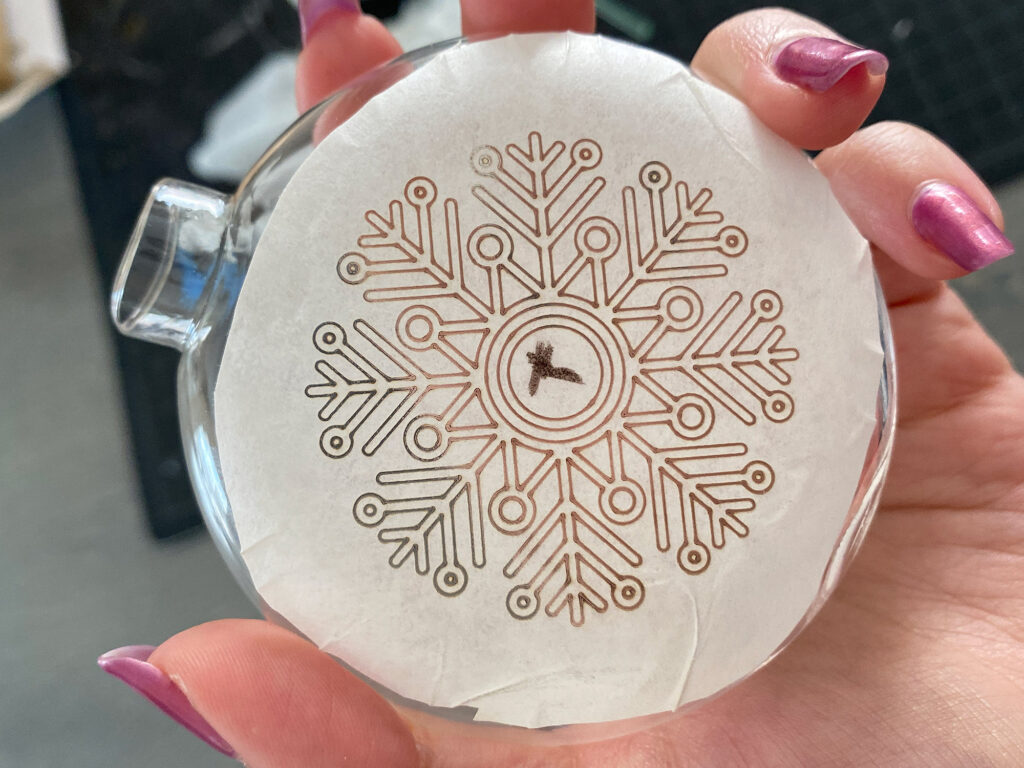

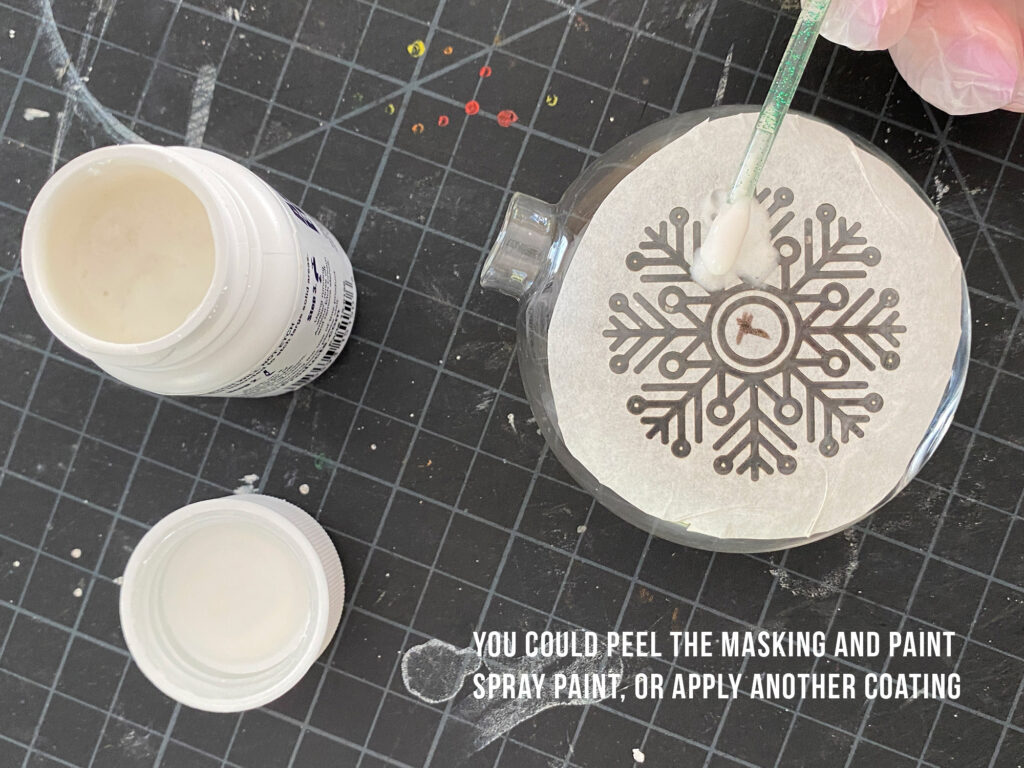
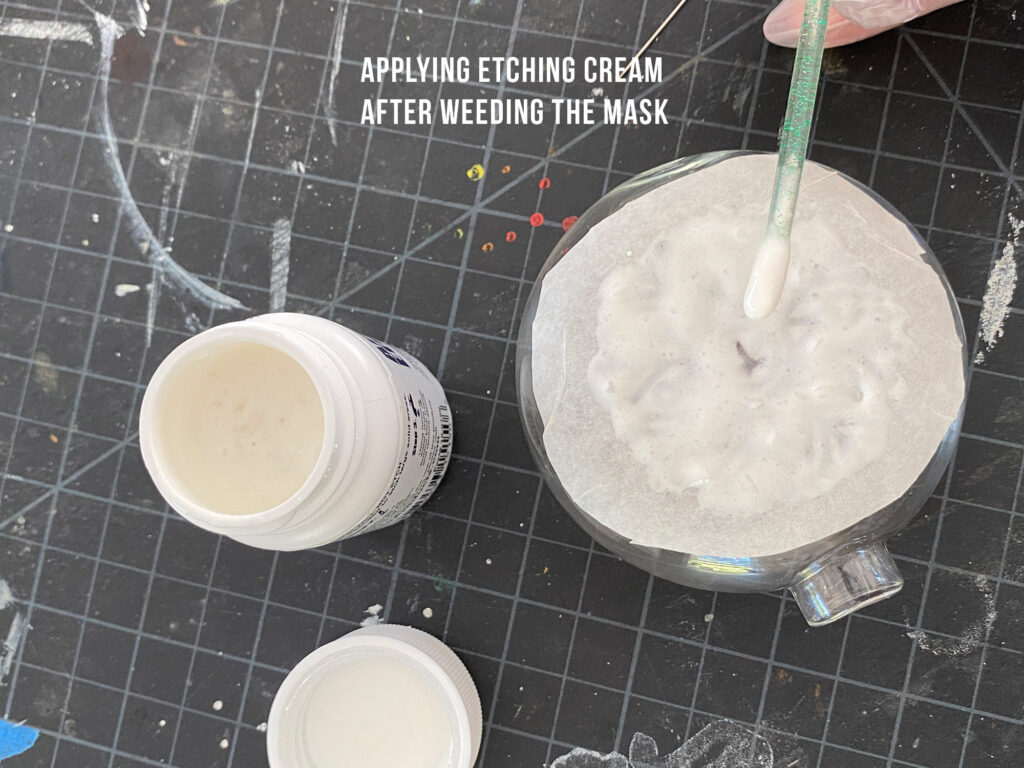
THE ETCHING CREAM RESULTS
I basically don’t have an after picture because the etching cream did nothing. I even tried applying it to the engraved areas to see if it would frost or deepen them so they looked more even and it didn’t do anything.
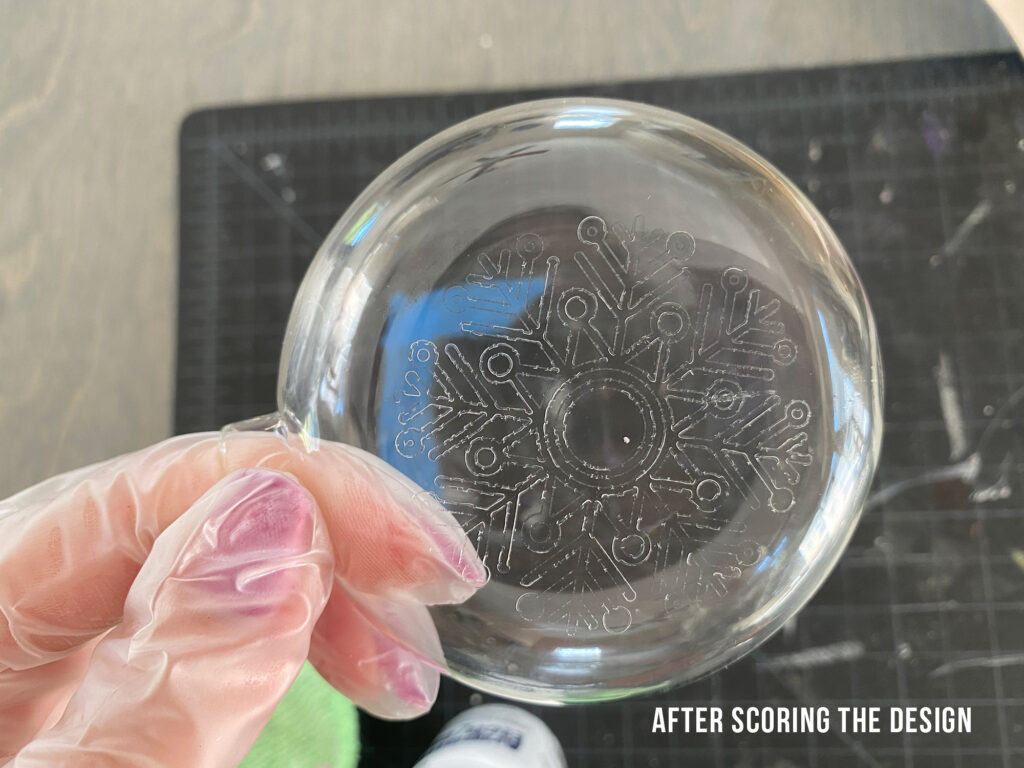
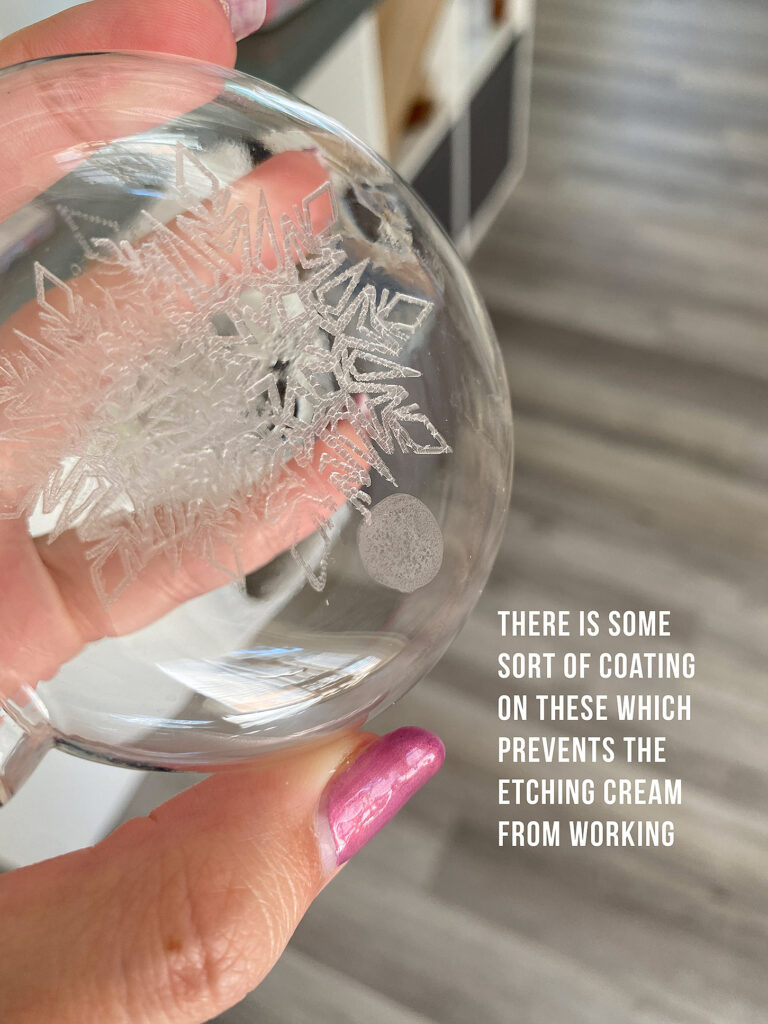
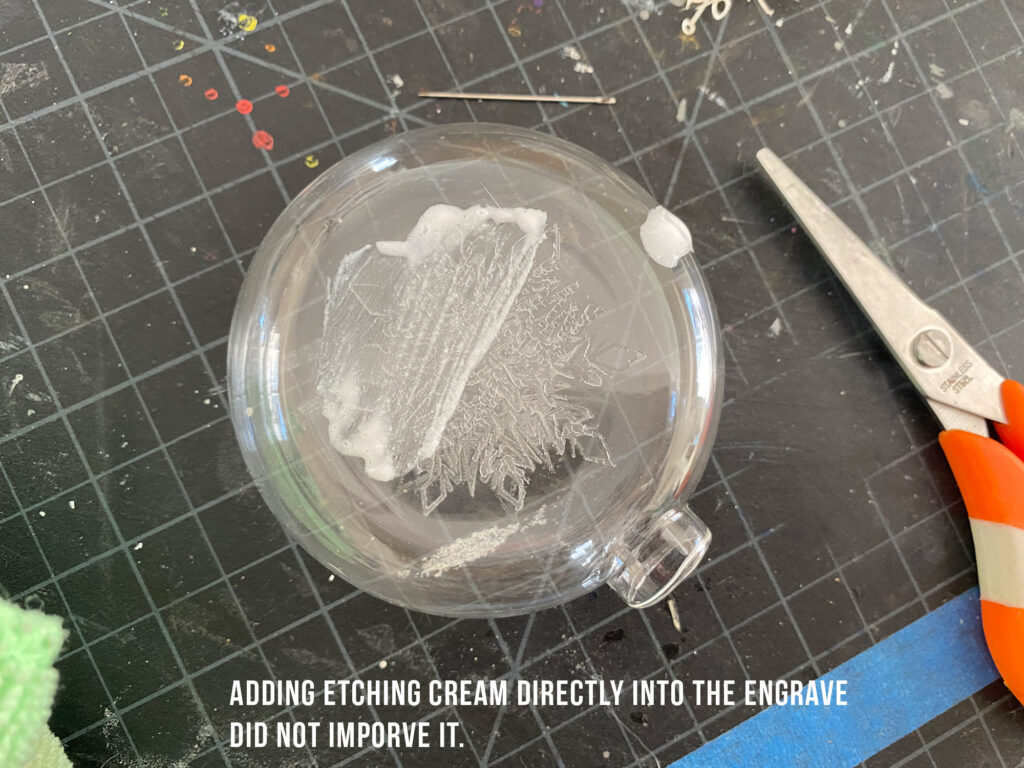
FILLING THE GLASS ORNAMENTS
So these ornaments were designed to be filled with dry shaker items, but I wanted to find a way to make them liquid shakers. I’m still not 100% sure this is the best idea – unlike the acrylic versions above, glass is more sensitive to temperature and if you drop it and it explodes it’s going to be a bad day. If you fill them with dry stuff like glitter, fake snow etc the only additional step I recommend is adding a bit of hot glue when you put the top back on as the added weight seems to make the top a little risky.
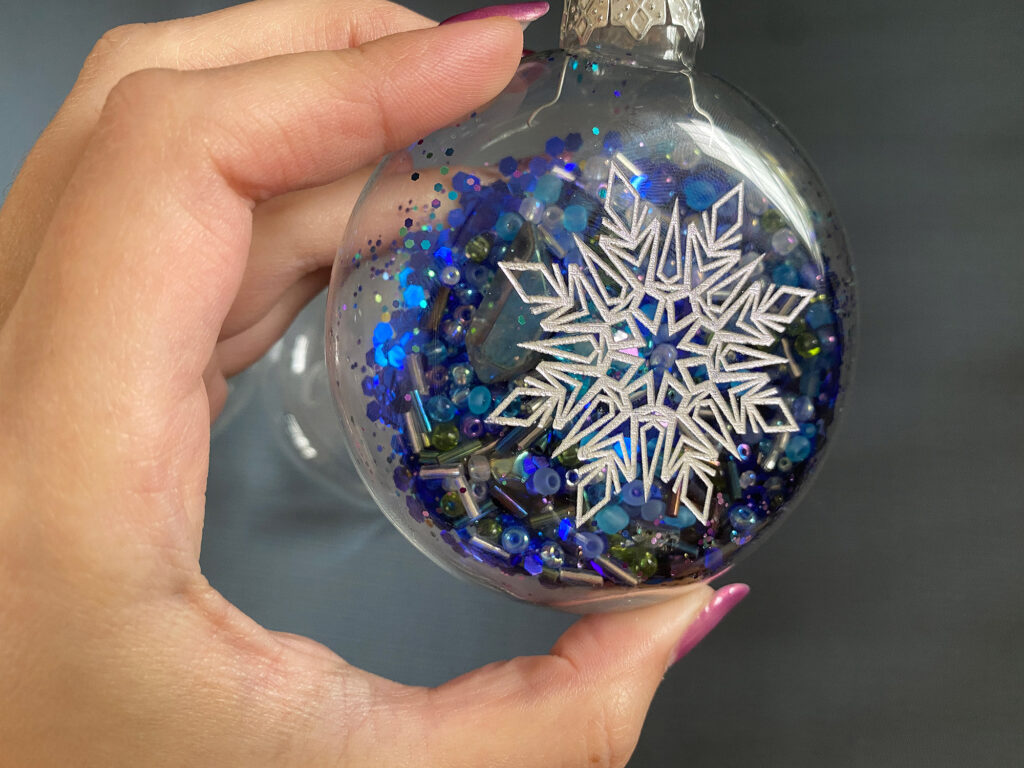
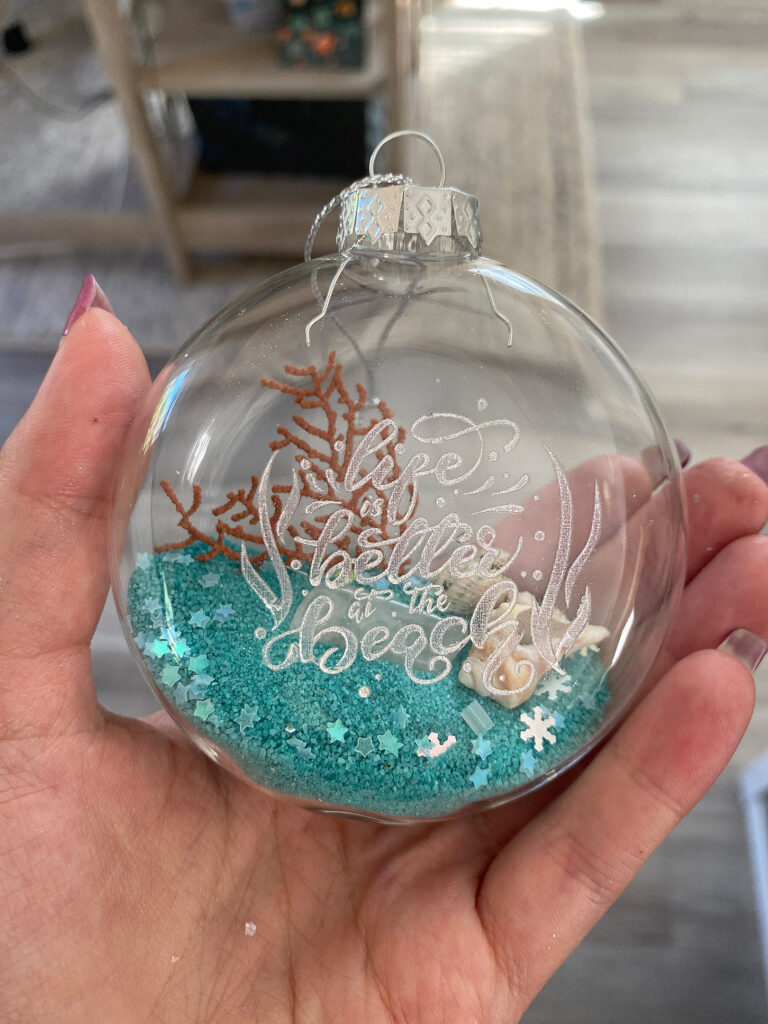
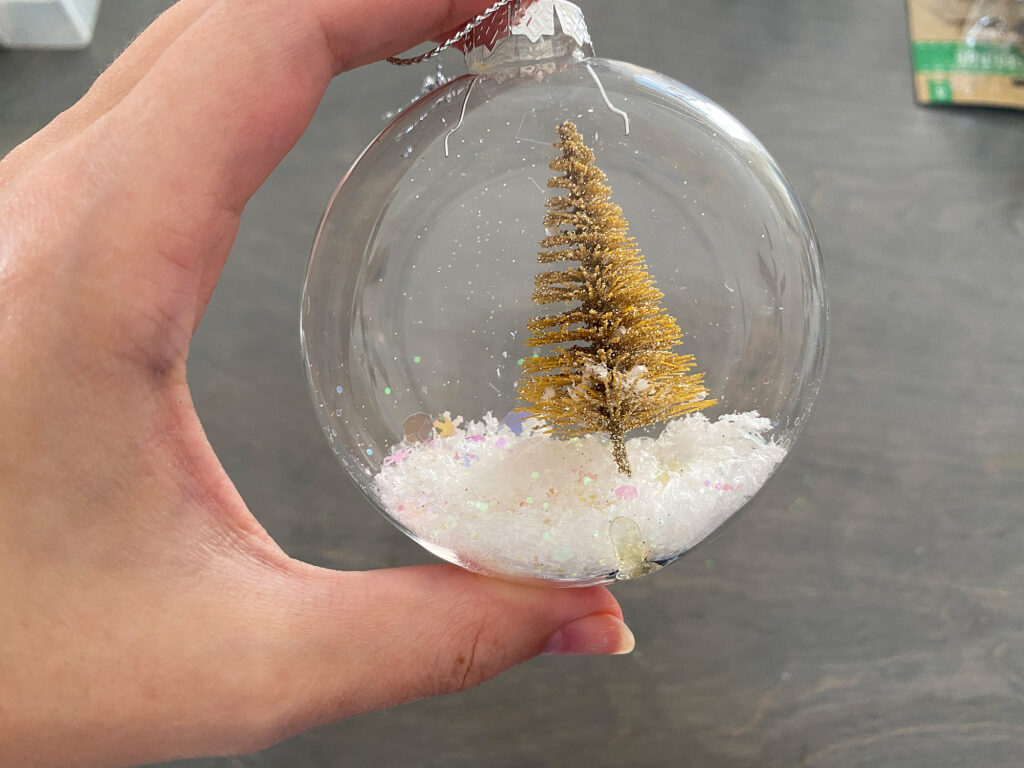
FILLING THE GLASS ORNAMENTS WITH LIQUID
The first thing you need to be aware of is filling these with liquid makes them heavy. To do this you have to make EXTRA sure that the top is properly secured or you risk these falling from the tree and exploding. The second thing you need to think about is what to fill them with. These are the biggest of all the ornaments volume wise so I chose to use distilled water (which should stay clear, tap water has impurities which can cause the water to get filmy and nasty) and glycerin. The glycerin slows down the movement of glitter by increasing the viscosity of the liquid. I believe I did about 1/5 glycerin to 4/5 distilled water.
I happened to find the perfect plugs for these larger ornaments which you can see in the supplies list at the very bottom of the page. After filling the ornament I siliconed in the cap and let it cure sitting upright.
Here is what you need to make these:
Glass Ornaments (Wider and with Flat sides) – I tried SO many different caps and these were the ones that fit best
Silicone Plugs – These work only with the wider, flat style right above)
Rubber Caps – These work only with the wider, flat style right above), I cut them to height with scissors
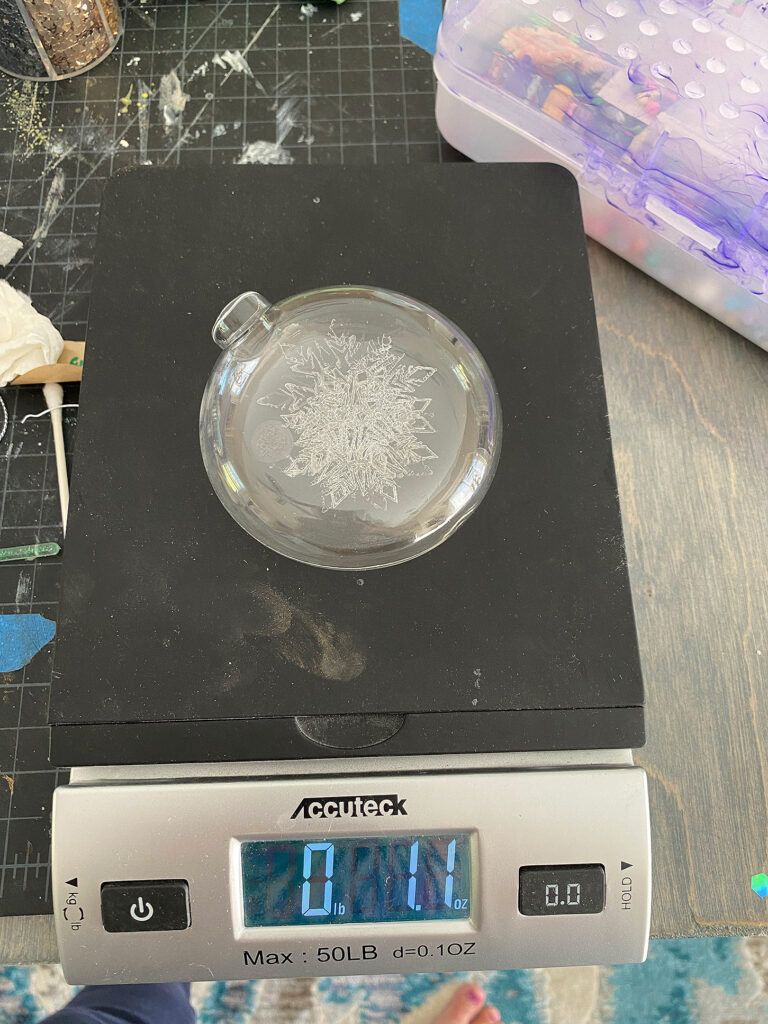
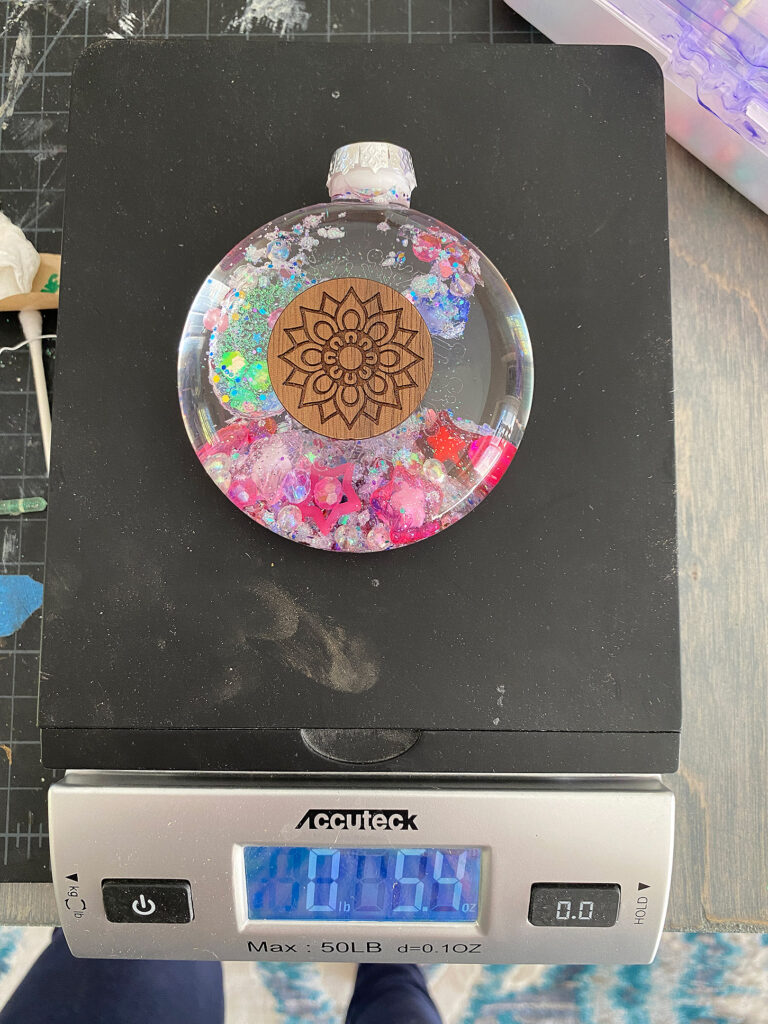
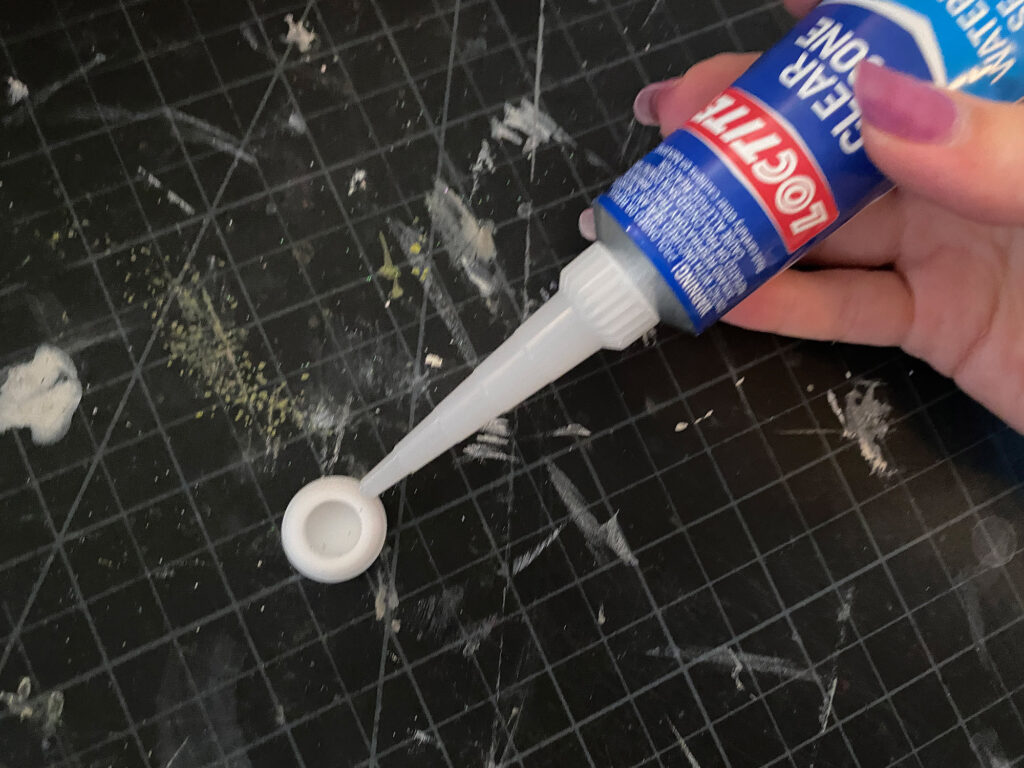
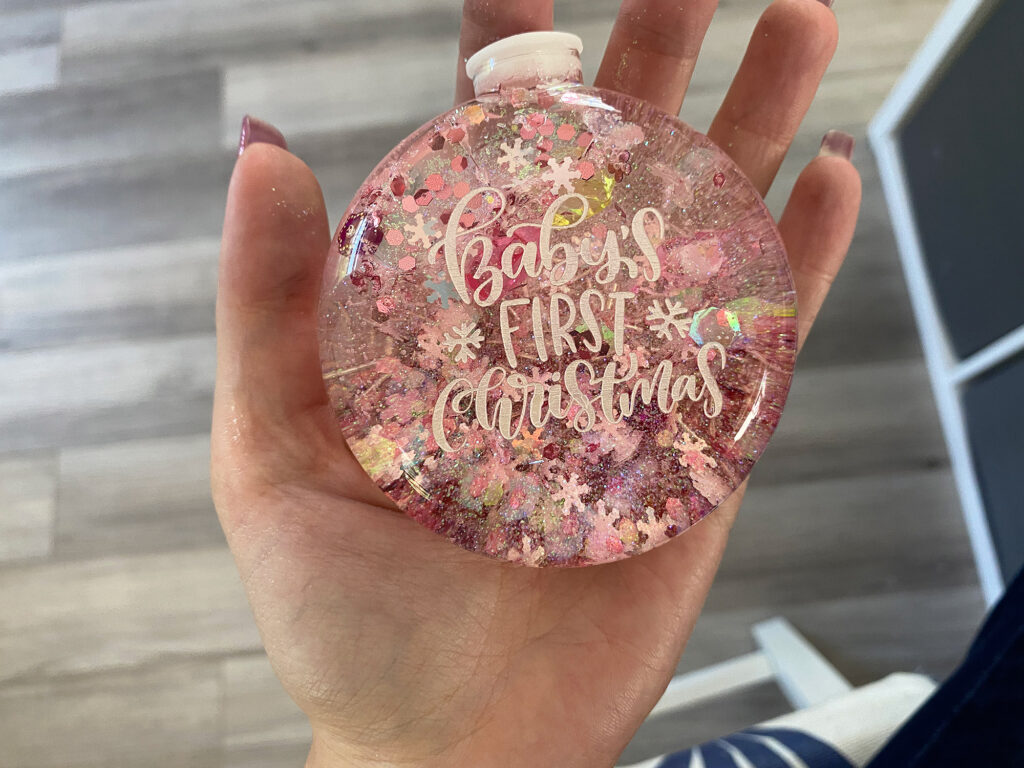
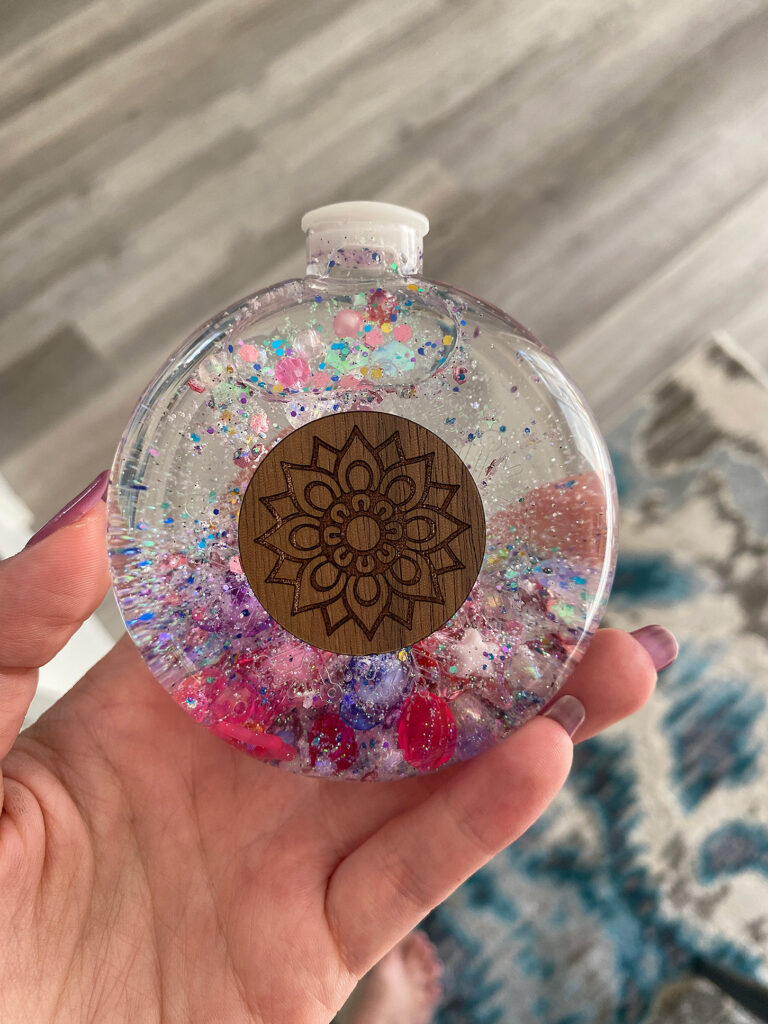
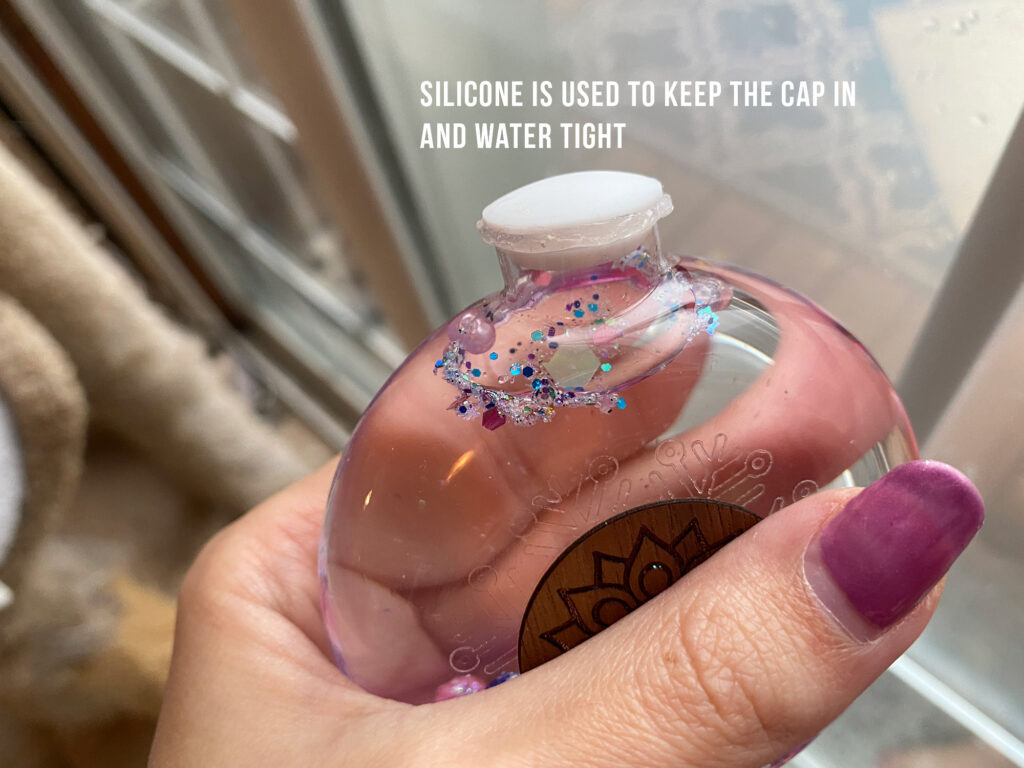
ADDING A TOP
Ok so you’ve sealed it. Now what? How do we hang this? My solution was to take a rubber cap (like that goes on chair feet, again it’s in the materials list below), thread a tie through and then silicone that on top. This seemed to be the best option. These caps also come in white, but I happened to get black. I just used a bit of wire bent in half to thread the cord through the top after poking a hole in it. I’ve shown the cap and plug in sizes below. It was tough to find a good fit for this ornament. The one with the smaller hole (the disk like sloped one) would be easier because it’s smaller).
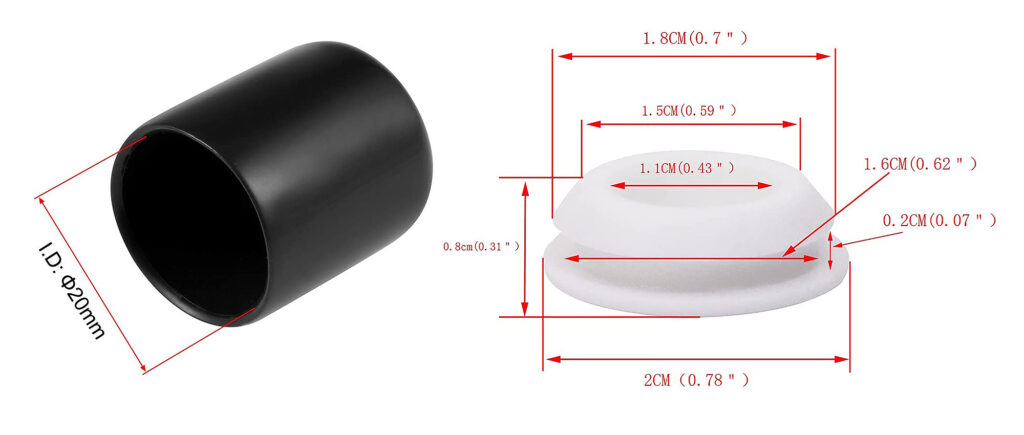
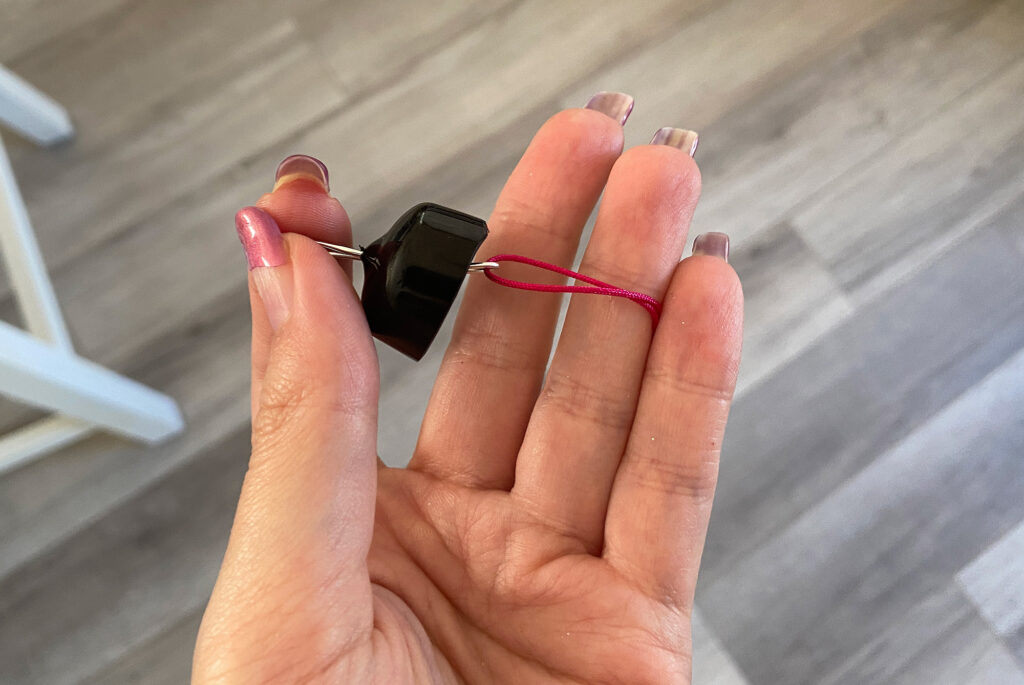
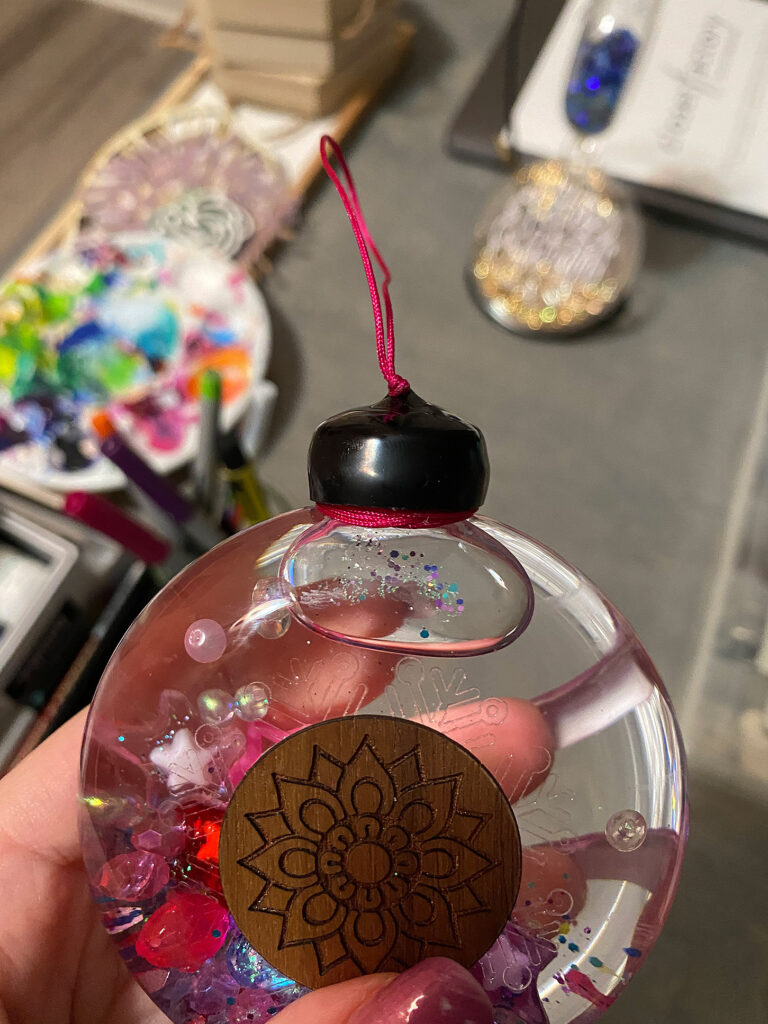
ADDING A TOP
I searched and searched to find a more elegant option and even special ordered some tassel bails I thought would fit but they were just barely too small! I genuinely could not find much of anything above a half an inch. The thinner rounder glass ornaments would work with tassel bails though because the hole is much smaller, so keep that in mind if you decide to make these. You will just need to measure the opening and buy bails that are a little bit larger. Try searching for tassel cap, leather cord cap, etc. and you’ll find plenty – just none above about 20mm. I bought the ones on the right but then the shop immediately disappeared so I don’t have a better picture of the sizing or listing. The issue was the inner diameter was 18mm, you really need 20mm+ interior dimensions for these.
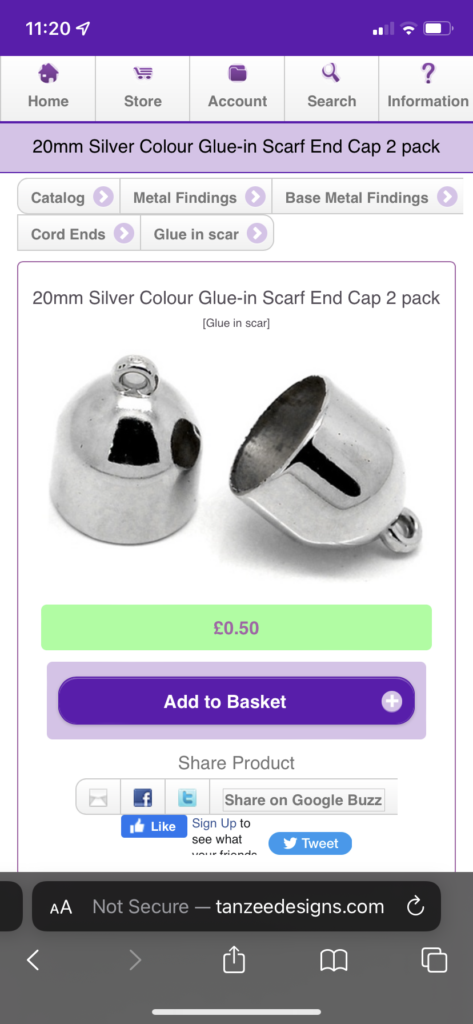
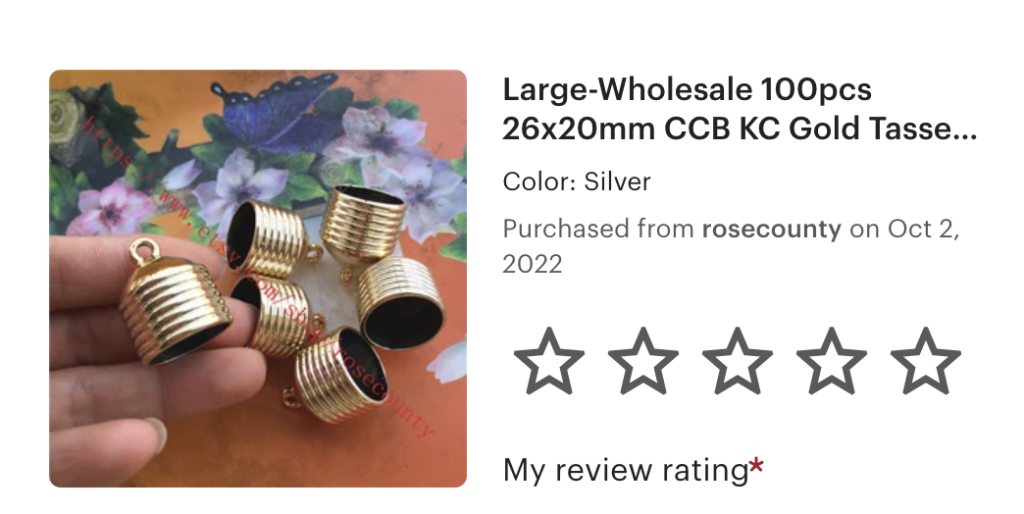
WHAT DIDN’T WORK
Initially, I tried just wrapping the neck in cord (with glue or it’s gonna slip off I promise!) and then gluing the original metal ornament cap on. Glue does NOT stick to silicone so this didn’t work. The reason I needed a full cap is that I needed there to be glue touching the covering cap and the glass itself to ensure a good hold as anything glued directly to silicone is going to peel off or worse put pressure on the plug possibly pulling it free. I also wanted the white silicone cap hidden, so although just wrapping with cord would work it causes the ornament to hang awkward because the string hanging loop isn’t centered over the top.
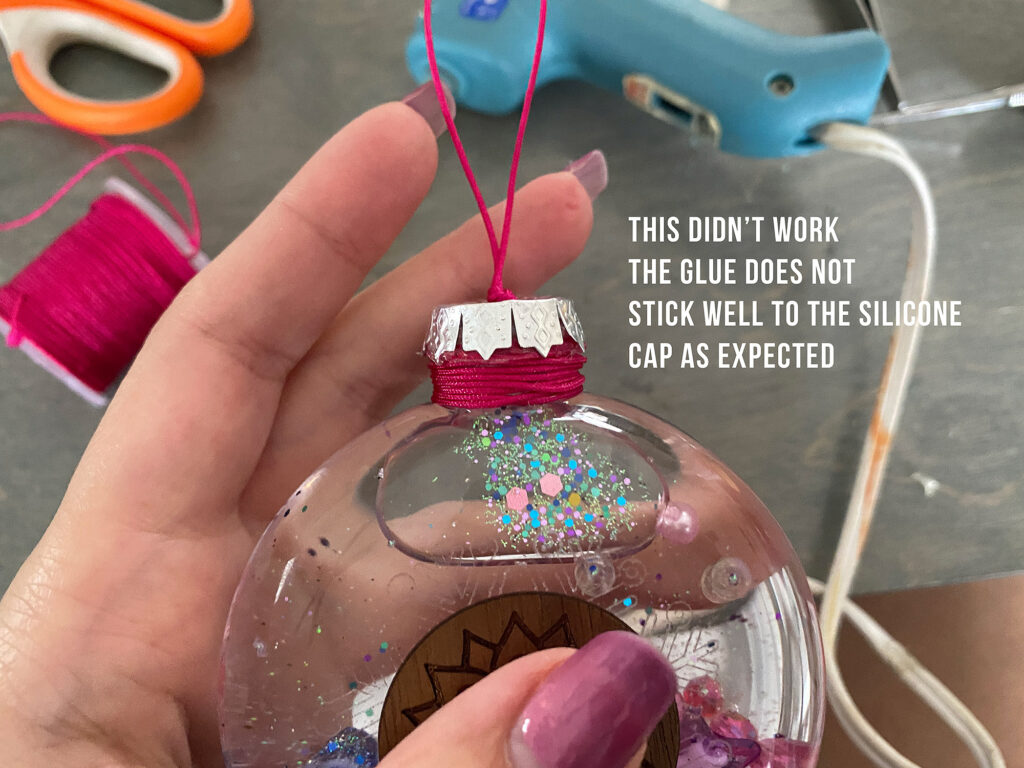
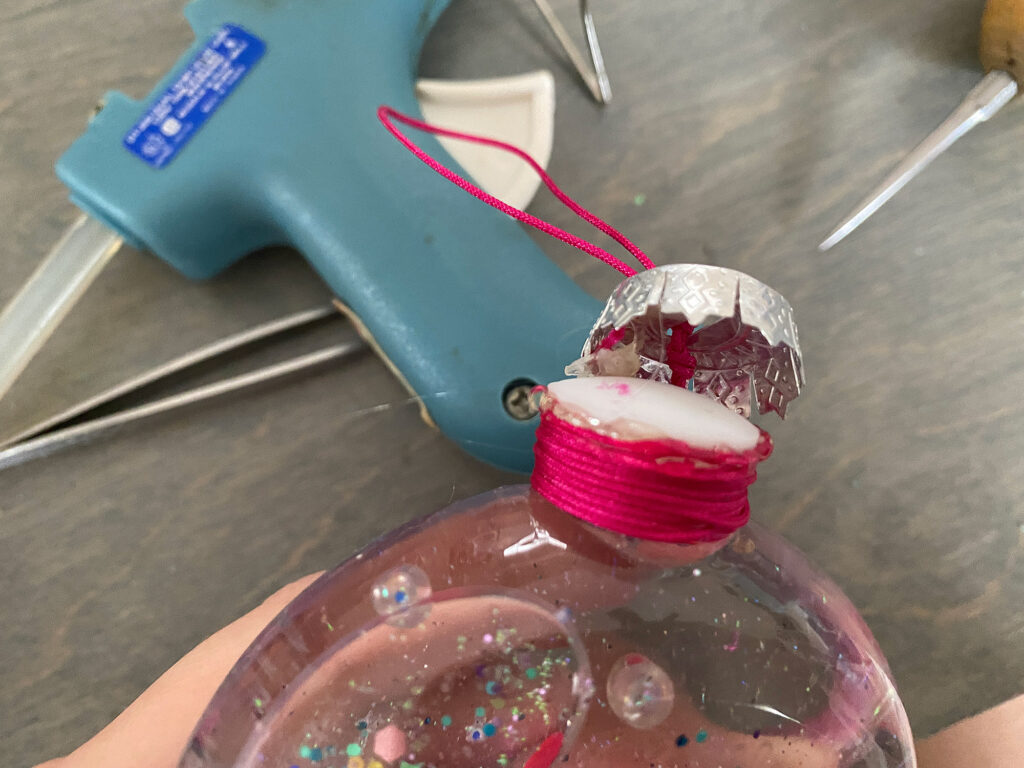
WHAT DID I DO WITH THE MESSED UP ONES? (Potions!)
Making these ornaments into liquid filled hanging items is risky, so for the ones I made with ugly engraves while testing settings, I decided to turn them into potion bottles! These would be really cool with a floating dice in them so you could “roll” for a healing potion or similar. I covered the ugly engraves by making these silver labels using silver/black core 1/16″ acrylic (Rowmark acrylic) and just gluing them on. Then I filled with about a teaspoon of mica powder and just distilled water. I capped them using the same technique as shown above. You could also probably drip sealing wax down and over the plug – heat it in a little cup over a candle and then dip the top in and let it run back down.
Shake them up and they make a really cool swirling effect. This is called a rheoscopic fluid and it visualizes the currents in water. The mica will settle after a bit, but just swirl it again to get it moving. If you want to color the water you can use a few drops of food coloring (that’s what I did with the dragon’s blood so it would always look red). My one tip is don’t try and add glitter – for some reason it won’t settle with the mica and never mixes nicely so instead it floats like scum on the top.
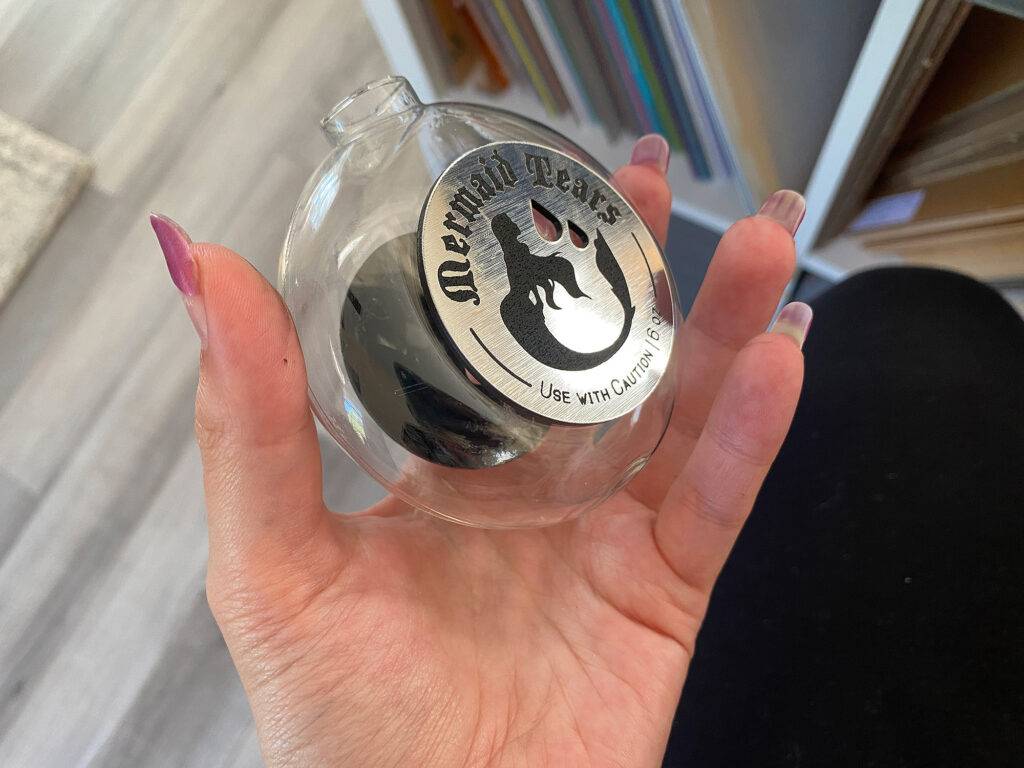
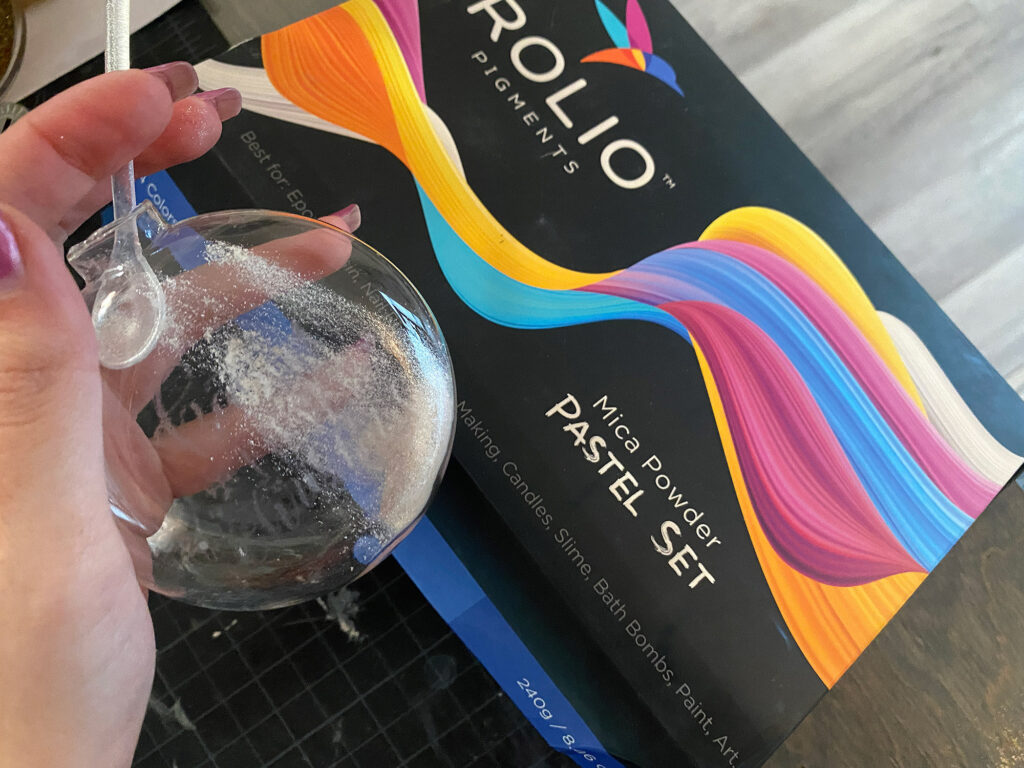
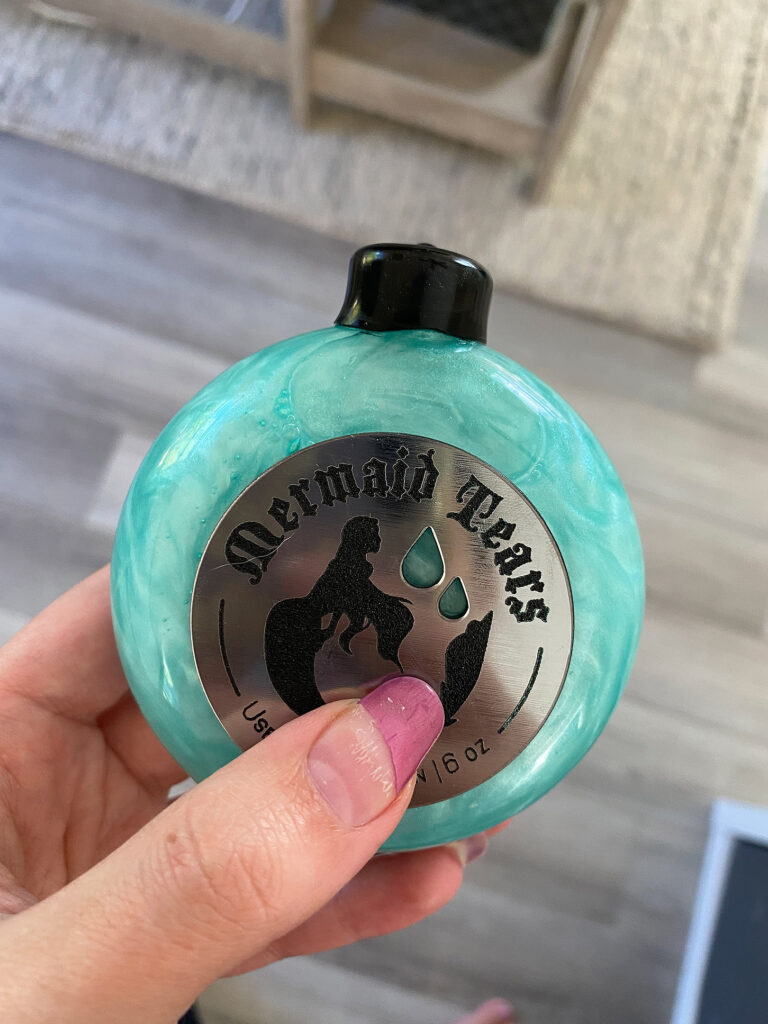
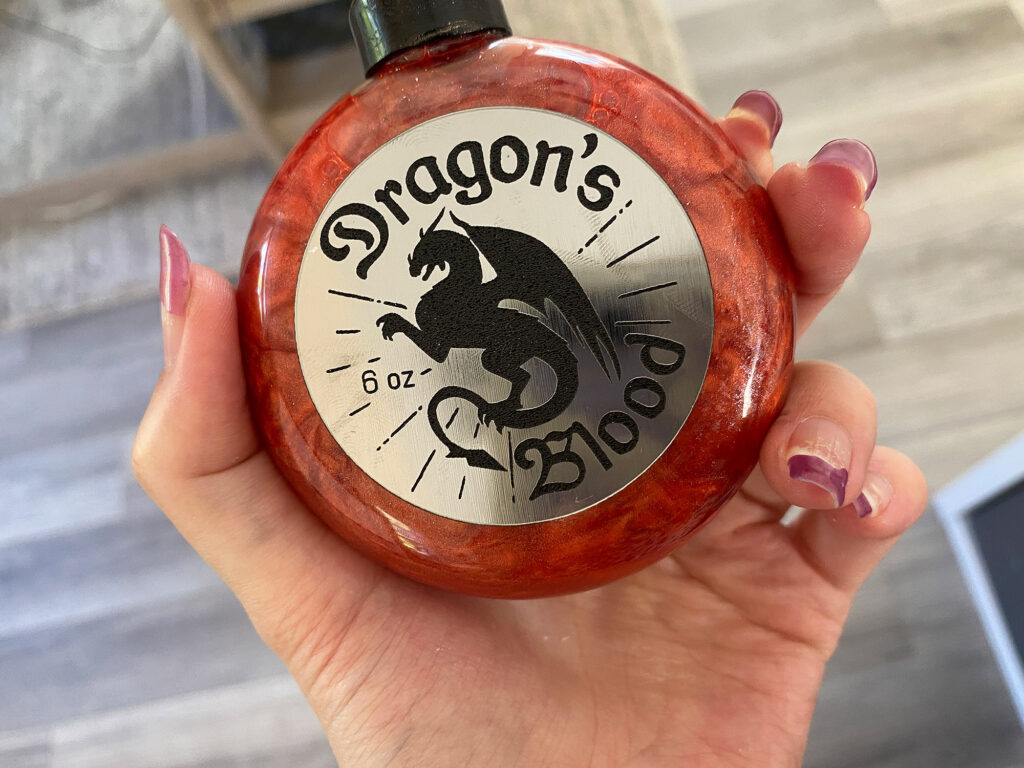
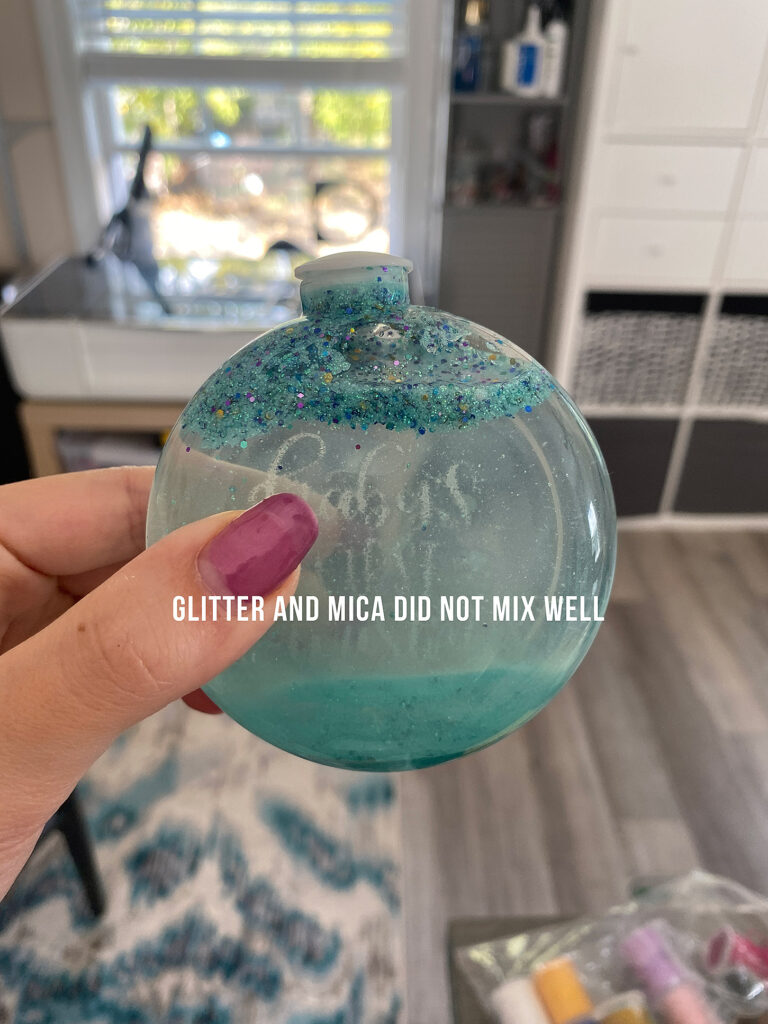
FINAL THOUGHTS
I don’t know why I like shaker ornaments so much. Maybe because they are similar to kaleidoscopes (which I’m also weirdly into). There is just so many ways to implement this concept and it always feels fun. Each one you make can be unique and I love having a variety vs. making the same exact thing over and over.
Where to Get the Materials:
Get 50% off your first Wish.com order with my code: mfvjgnw | I buy lots of odds and ends here, so if you need some small item and don’t mind waiting, this can be a fun shop to check out.
The two Amazon links below are affiliate links. They don’t cost you more but they do help me keep creating content.
Glass Ornaments(Flatter rounder style)
Glass Ornaments (Wider and with Flat sides)
Silicone Plugs – These work only with the wider, flat style right above)
Rubber Caps – These work only with the wider, flat style right above), I cut them to height with scissors
Silicone Glue – how I attached the caps
Ornament Hanger Displays – a safer way to show your glass liquid shakers (not so high off the ground haha)
Frost Effect Spray Paint – my preferred option for using a stencil and creating a frosted look
Mica Powder Pigments – for the potions! This is the set I used and I use them for all kinds of projects
Weldon #4– Do not use any crappy squeeze bottles that come with it, they leak like crazy and give you no control
Weldon Can Opener – You need this. Trust me. There is nothing on the face of this earth harder to open than a can of Weldon. Once I had to delay a project for three days because I could.not.open.the.damn.can.
Syringes for Weldon – These are much better and give you great control, they are blunted syringes
Great Vendors for Beautiful materials: None of these are affiliate links! I purchase materials from all of these vendors because I like their products:
Woodcraft – Exotic Veneers, 1/8″ wood
Johnsons Plastics Plus – Rowmark Acrylic, Saddle Faux leather (laser safe), Finished plywood, Flexibrass etc. Veneers (with and without 3M)
Craft Closer – Shell veneer, acrylic (Glitter for days), wood, colorboard
Cerulean Tides- So many gorgeous acrylics
Smokey Hills – Wood, Plywood, Basic Acrylics, Patternply in Acyrlic and Wood(beautiful pattern printed boards)
Custom Made Better – So many fun different materials and they also release tutorials for learning new techniques
Obligatory Glowforge Discount Code Plug
If you found this post helpful and you plan to buy a Glowforge you can use my code (https://glowforge.us/r/QHDONFXB) for a discount of $125 off the Basic, $250 of the Plus, or $500 of the Pro:
Sign Up for Blog Posts Updates
And finally, if you’d like to be updated on posts like these in the future you can sign up for my email list. You will only receive an email if there is new content, and only once weekly in that case:

